Martha O'Kennon
Another great week. The temperature kept threatening to freeze at night, but fortunately its heart wasn't in it and the days were perfect (I know saying that will jinx everything but I couldn't help it! Wednesday there were so many colorful creatures - I hope they keep coming! Here you see the Yellow Trillium, blooming way back in the garden and often overlooked. The Raspberries keep blooming and I can almost taste the fruit to come. And the Celandine Poppies haven't finished and will still be going at a low pace for the rest of the summer.
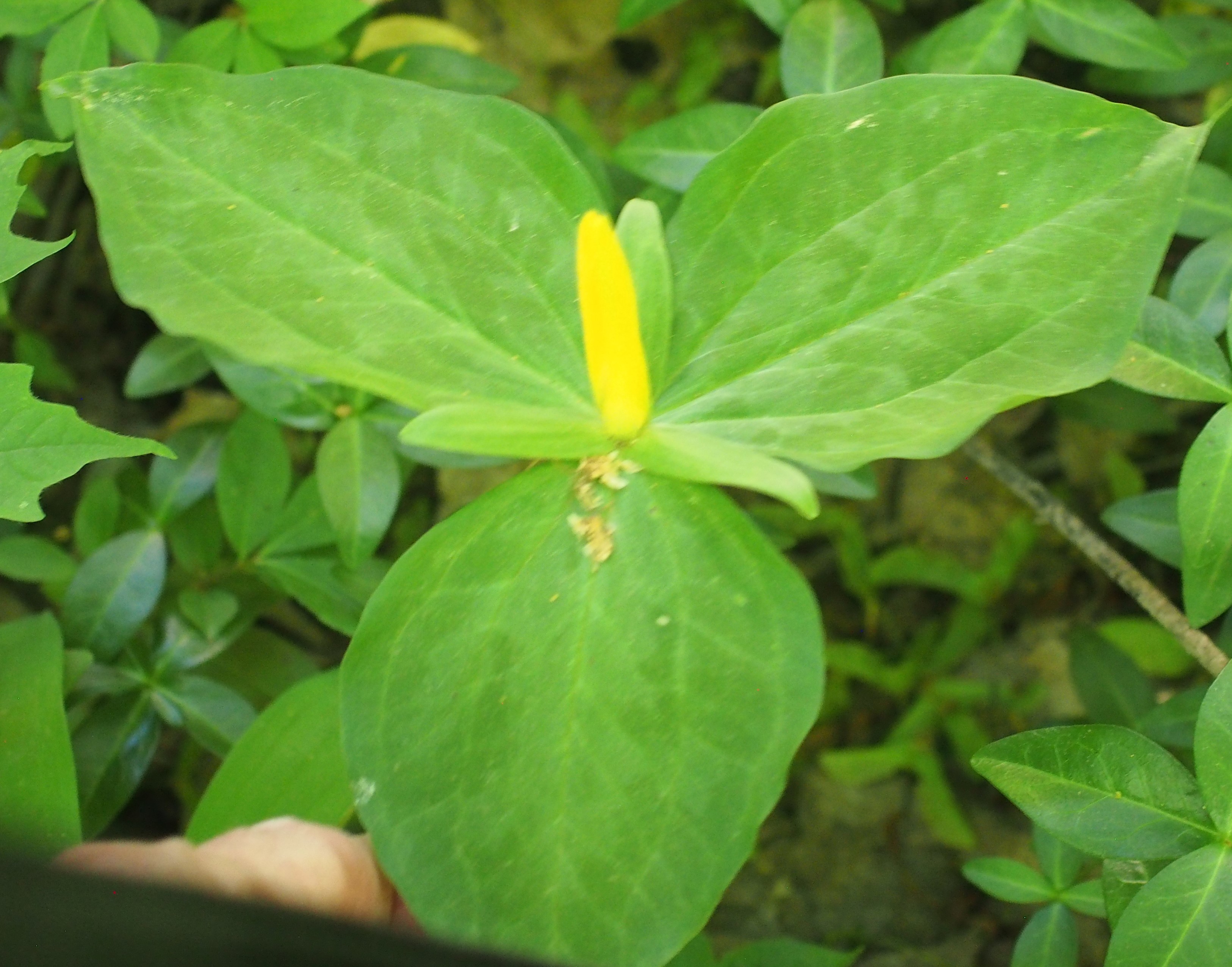
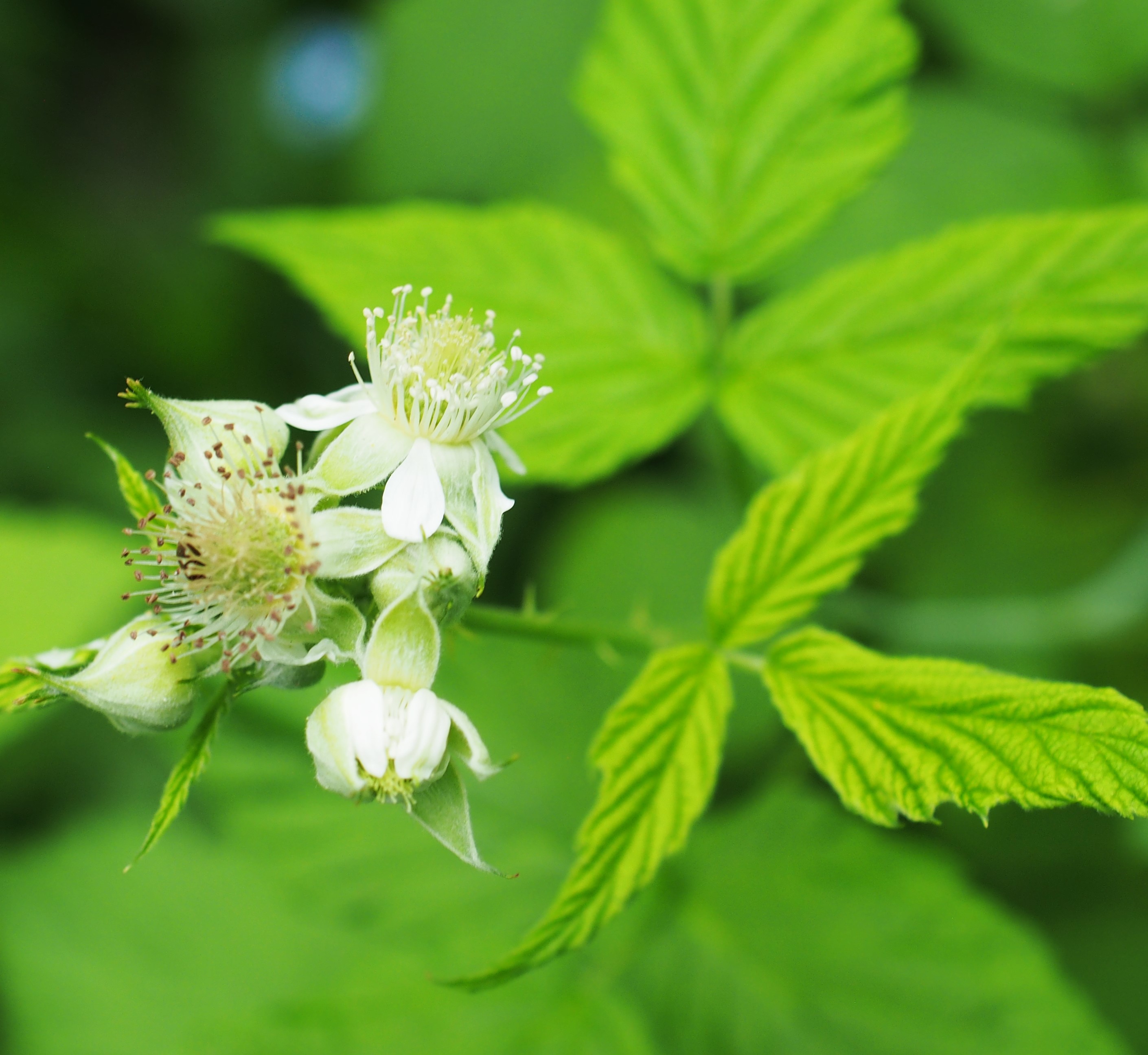
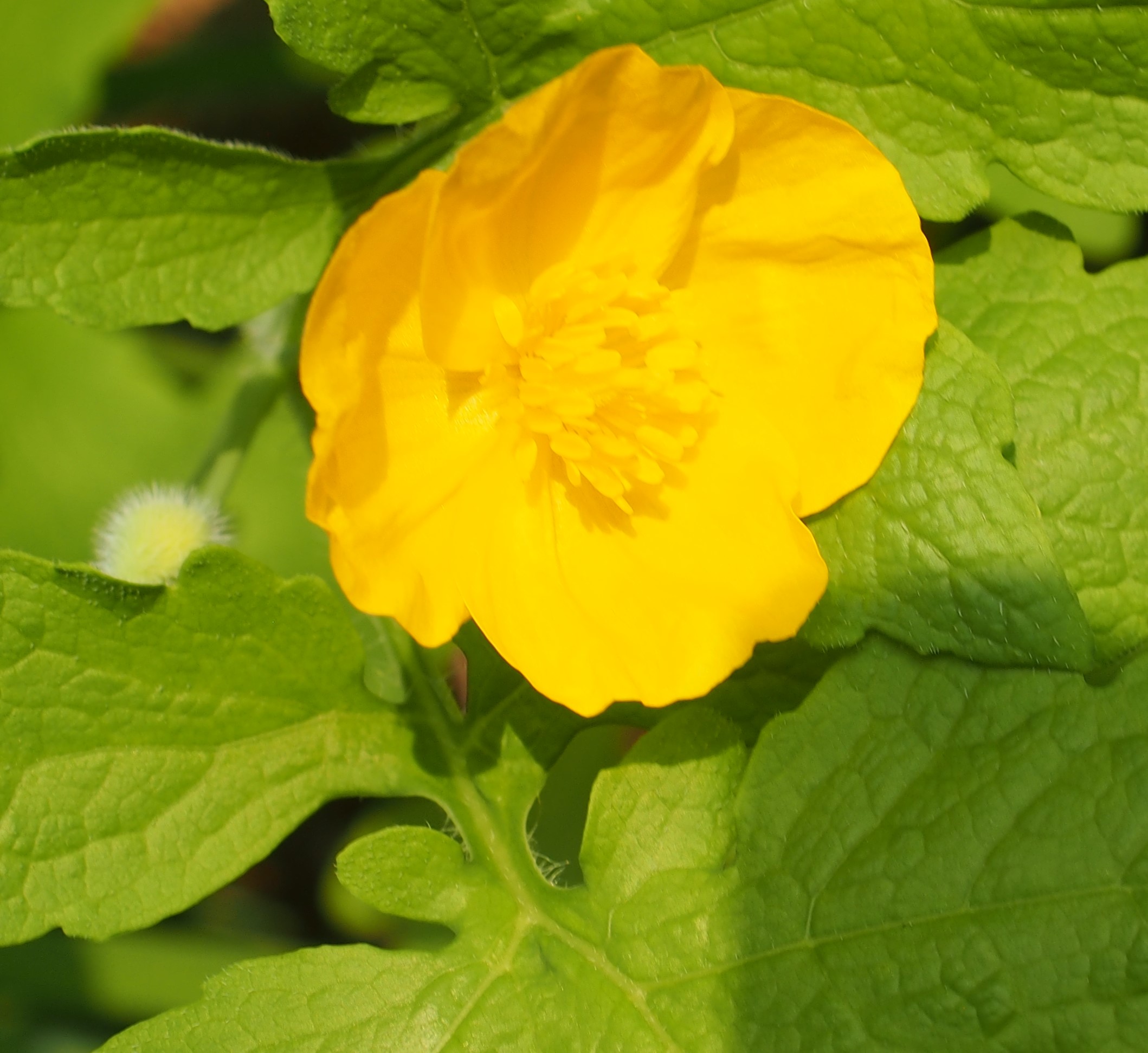
Remember that there is information in the name of the file for each image. You can see it by mousing over the image - look at the lower left of the screen. Or you can click again on the image to get to the (usually) larger image. Then the info is displayed in the address line above. Sometimes the second click will actually display a different view of the original image.
There are a lot of Ants now, but hardly any Winter Ants. But this week the Nearctic Ants showed themselves to be champions at acquiring food items, pretending to be bigger than they are, and generally gesturing others to get lost!
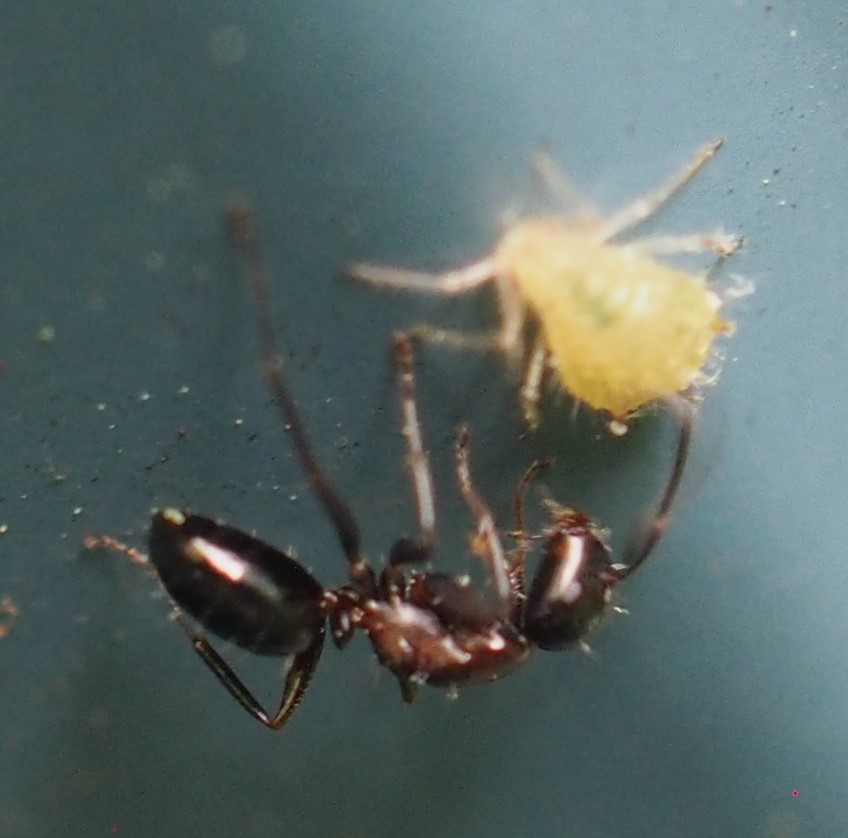

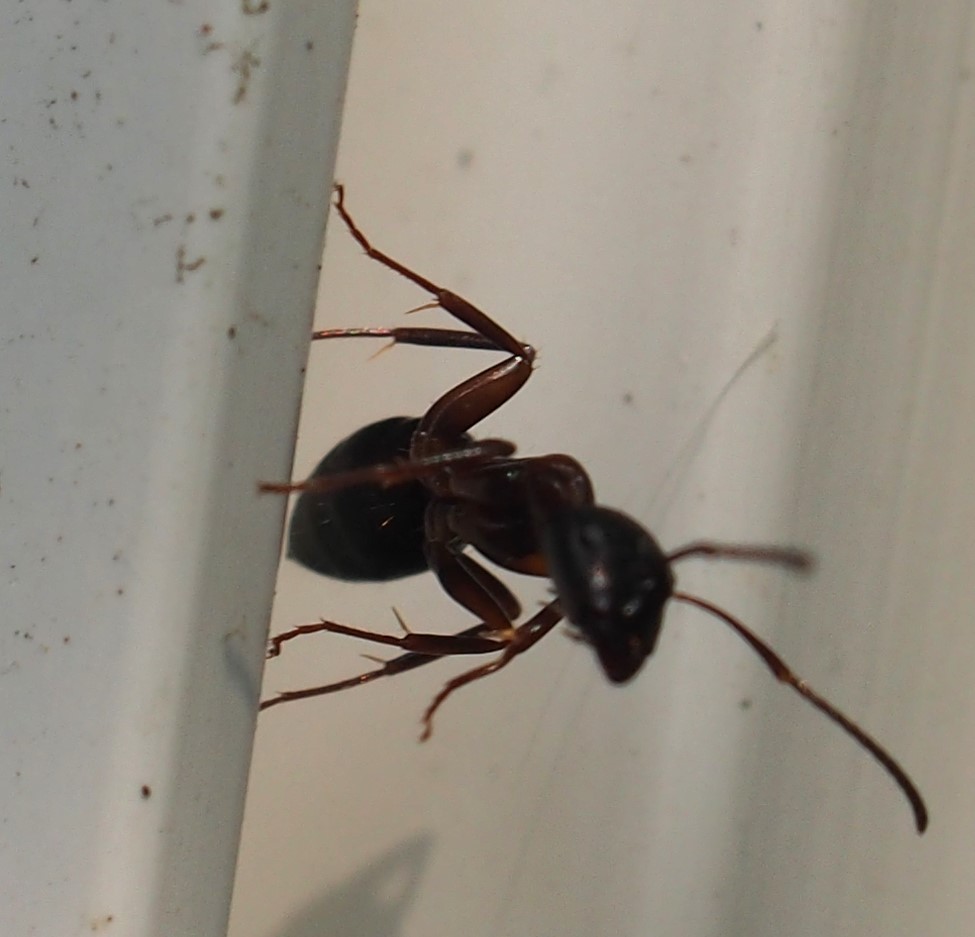
The Ants of genus Crematogaster (recognizable by their heart-shaped gasters) are also common nowadays. First up is one of them. Second is probably the Eastern Black Carpenter Ant, based on its hairy gaster. The third looks like an Odorous House Ant (going by the looong gaster).
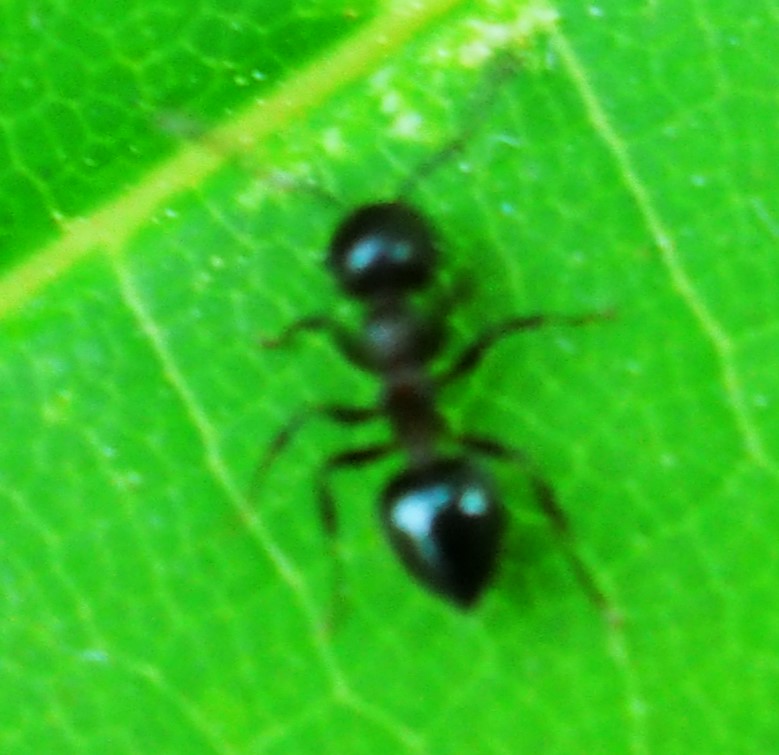
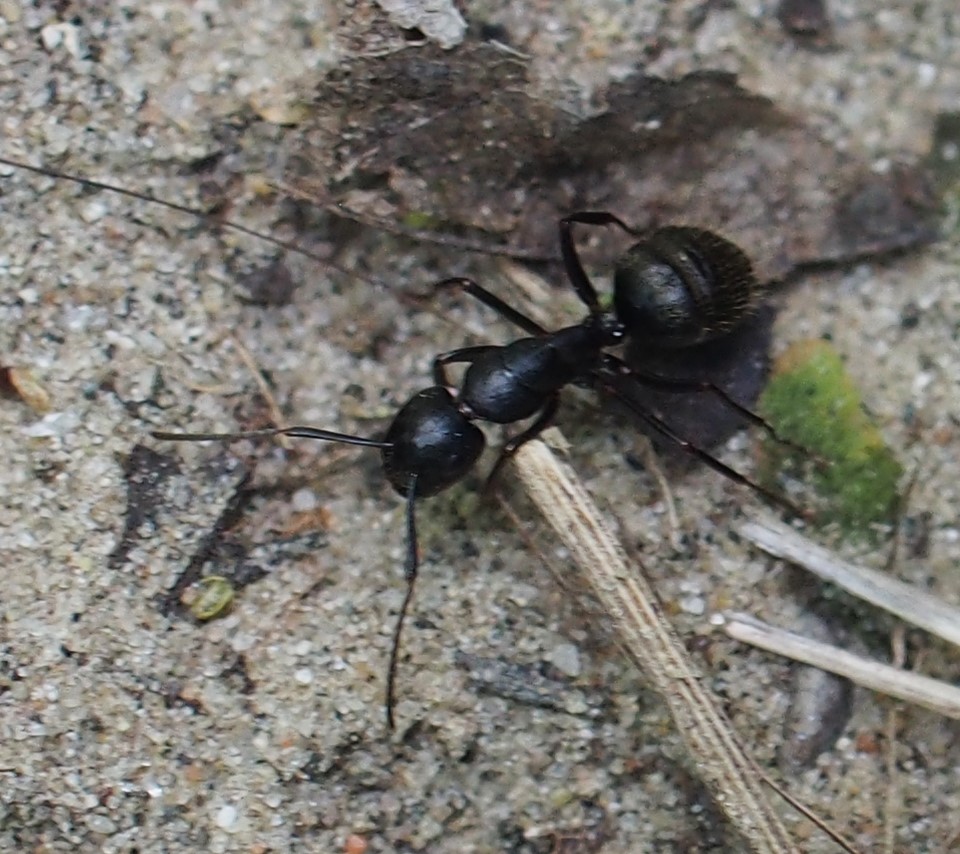
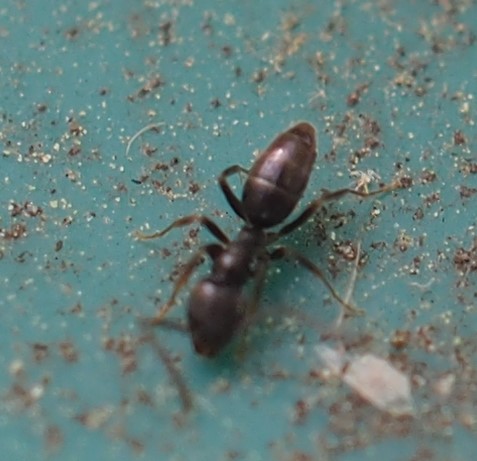
I don't know about this first Ant running on a Maple Leaf. The ID app on iNat called it a Fusca Group Field Ant. The second is almost certainly the Bent-spined Acorn Ant (Temnothorax curvispinosus). Number 3 was another stranger to me.
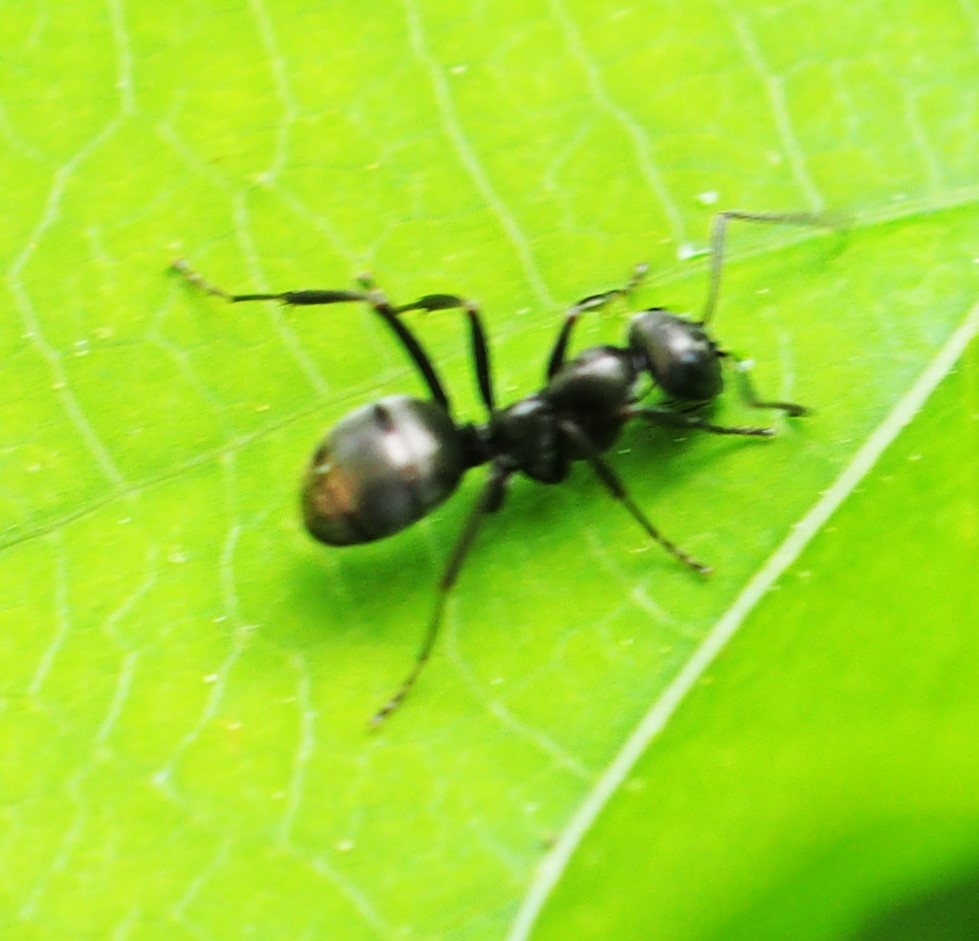
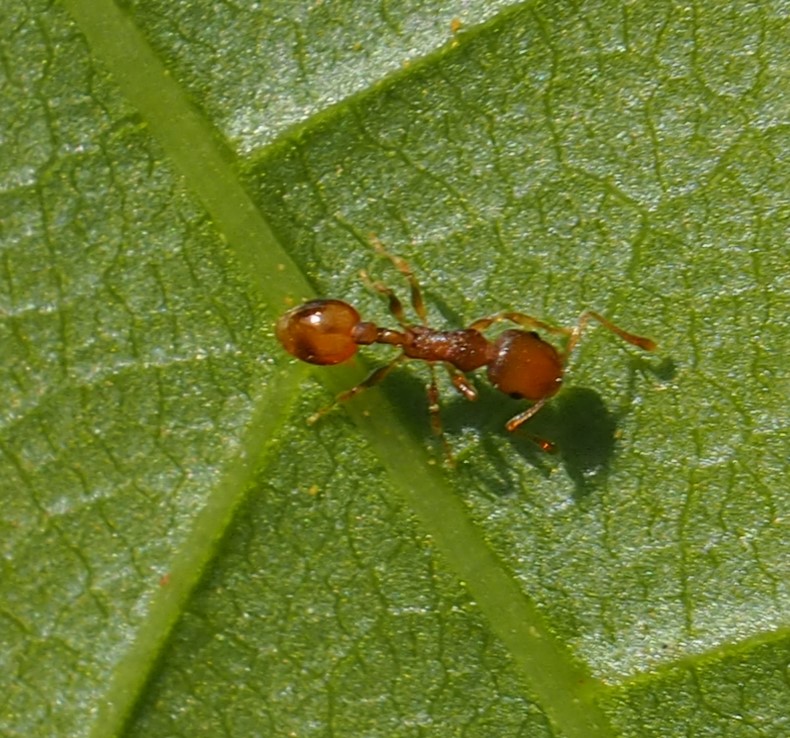

Moving on to the Bees, there were an assortment. This first one resting on a lily leaf looks like a Narcissus Bulb Fly. The one on the Raspberry buds seems to be a Mining Bee, probably in Genus Andrena. The shiny green Bee is probably one of the green Sweat Bees. There were a few kinds just of Bumblebees, namely large ones and small ones. This last one is probably a Commmon Eastern Bumblebee.
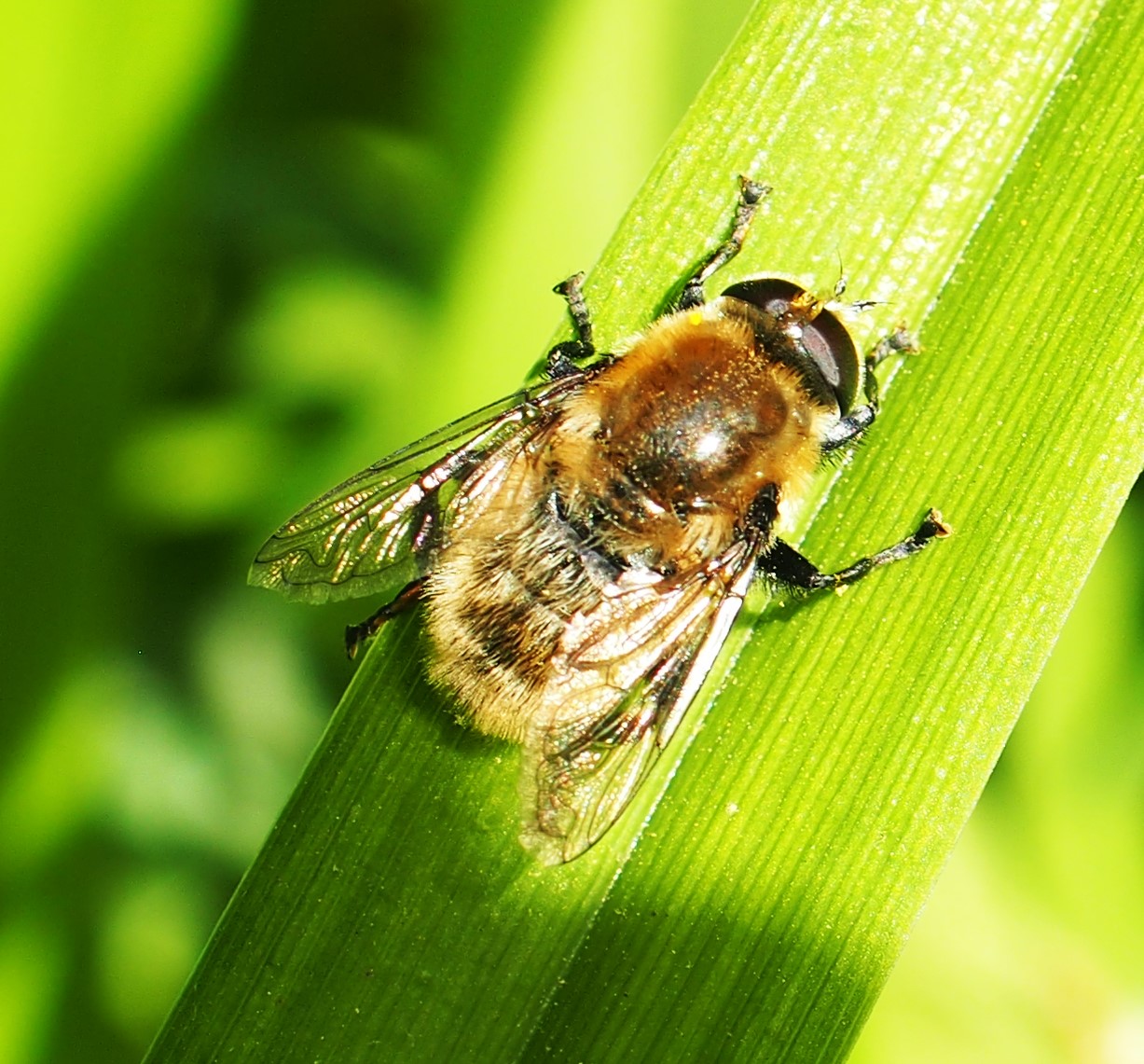
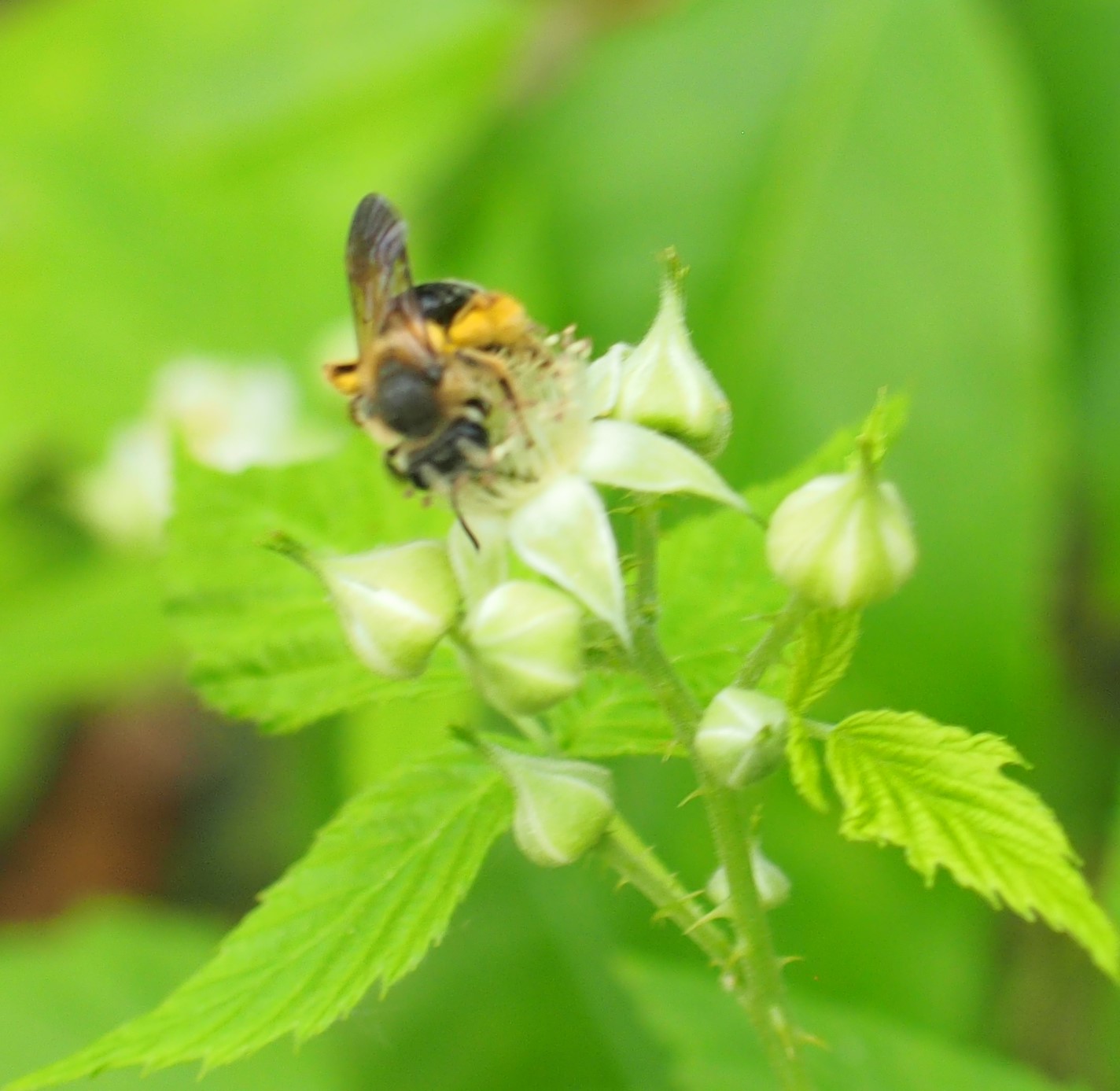
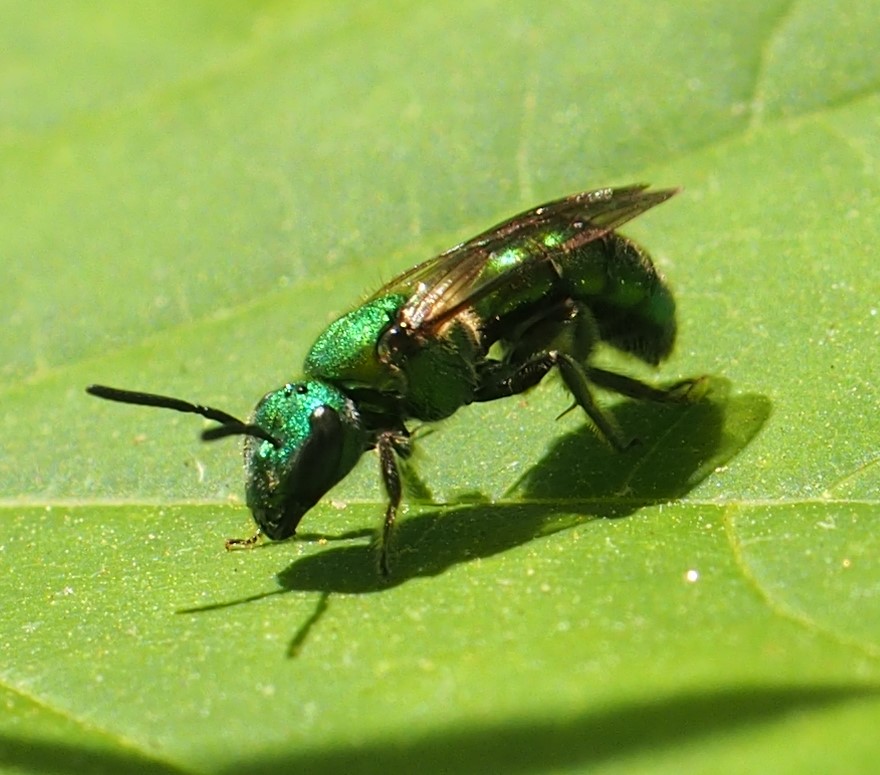

Remember our down-luck with Beetles last week, or was it the week before? We seem to be running in a good streak this week! This very first one seemed to be hard to identify, but maybe it's just dressed in comfy clothes. Second is in genus Xyleborus. The nice green one in third place here is a Black-headed Silvan Flat Bark Beetle.
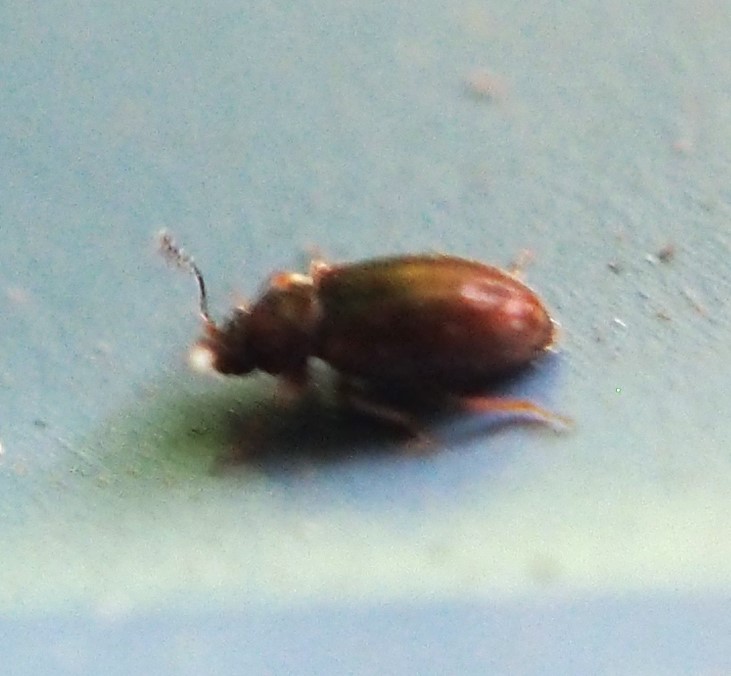
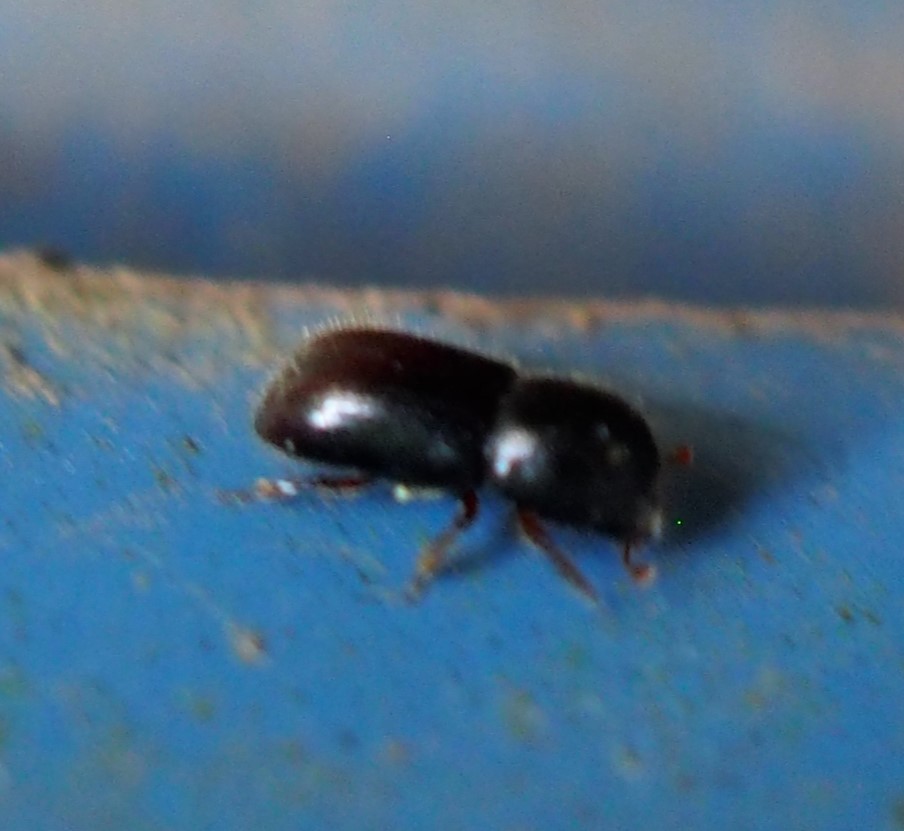
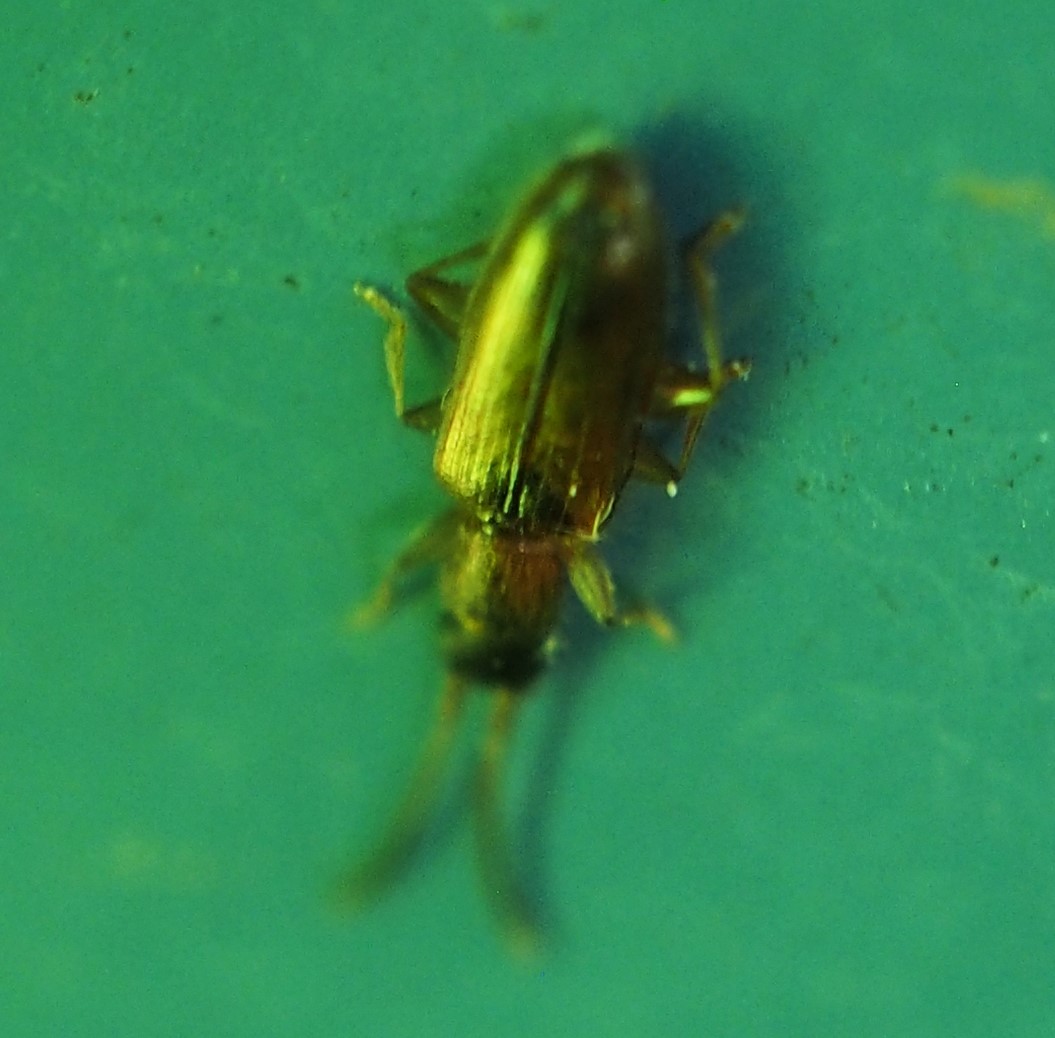
First up is a member of genus Glischrochilus. It looks a lot like the Picnic Beetle, which we also get. Flash! It was just identified on iNat as a Four-spotted Sap Beetle. Second seems to be a Brown Leaf Weevil. The little round one I don't have a clue - yet.
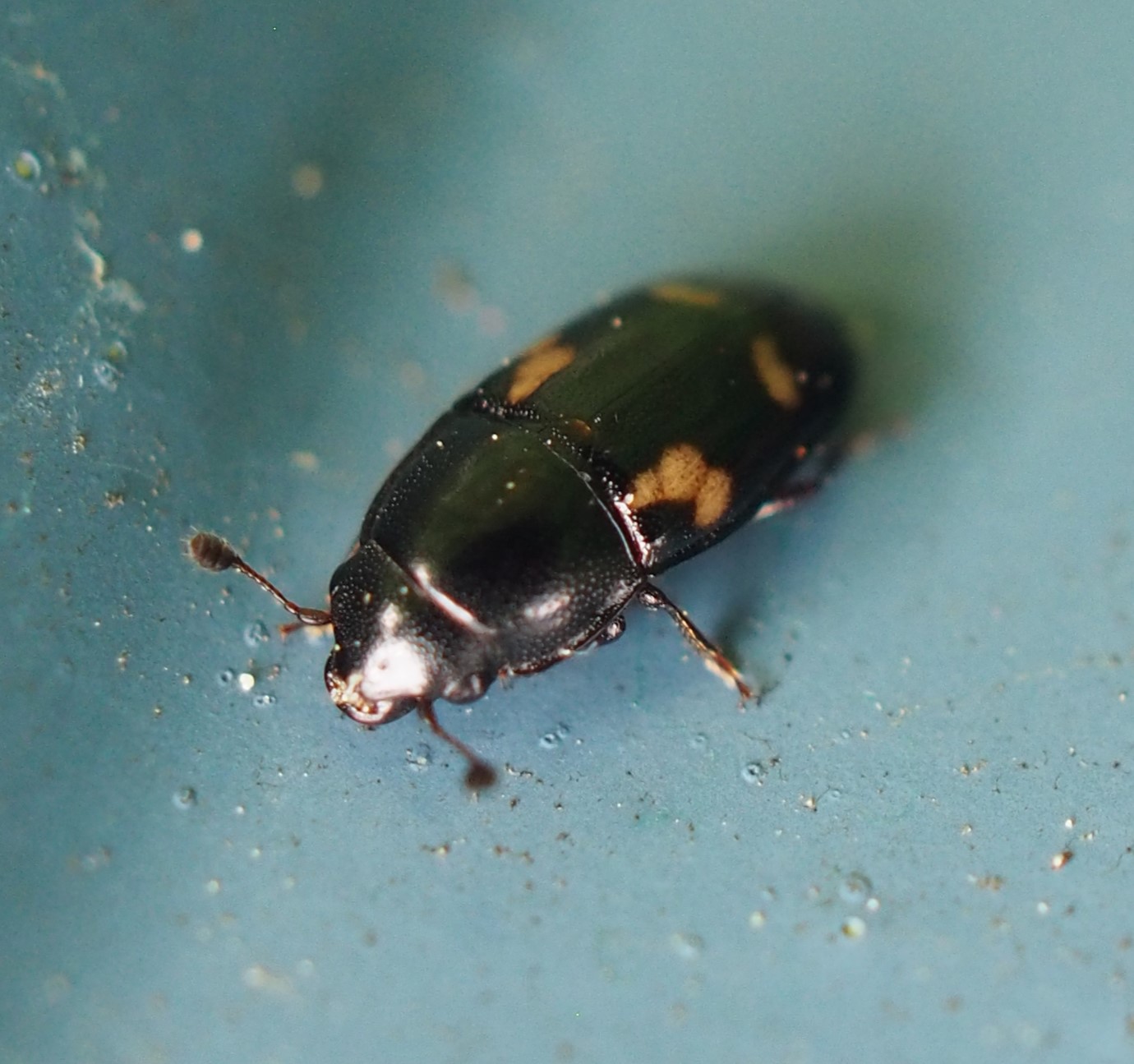
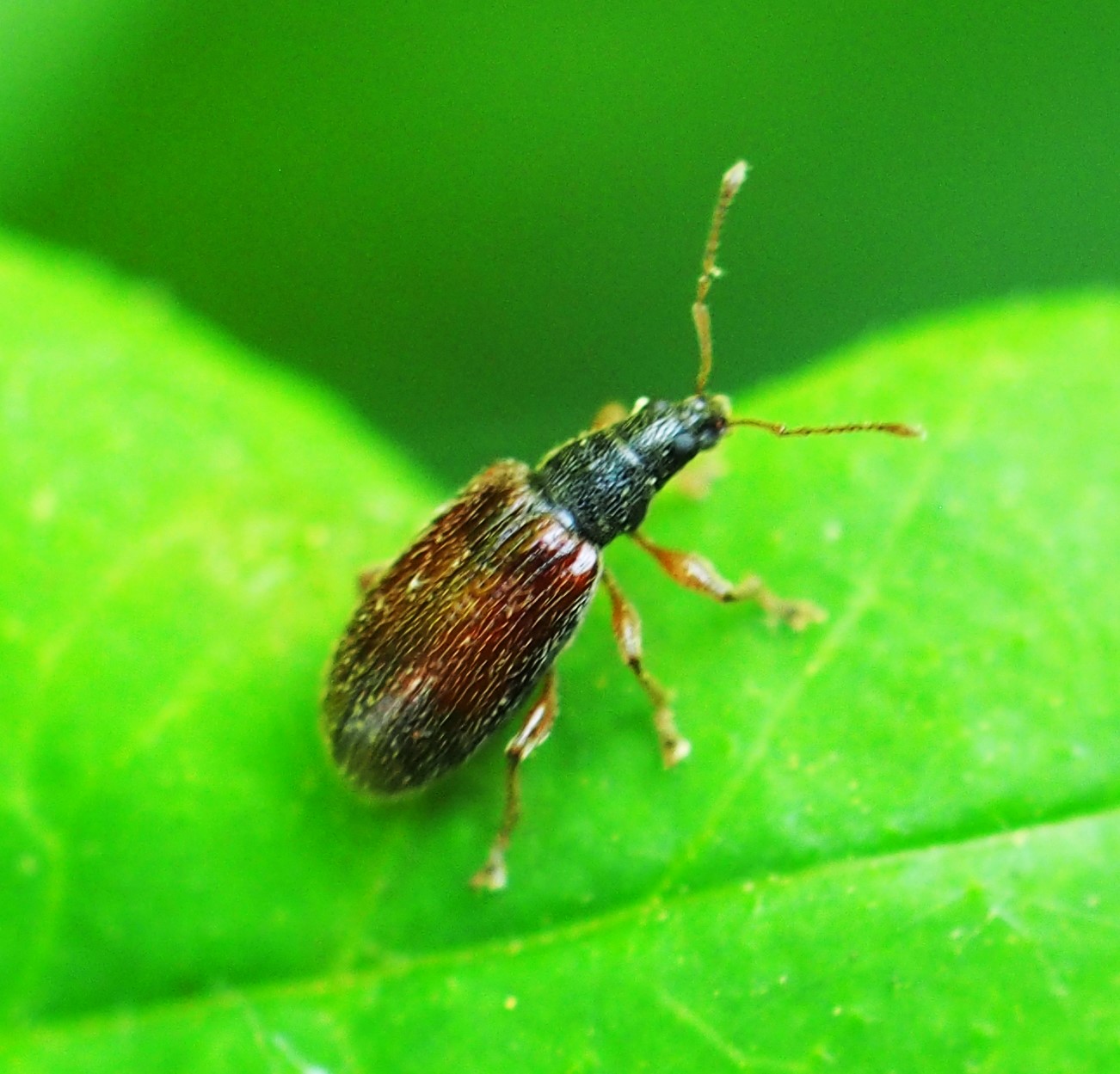
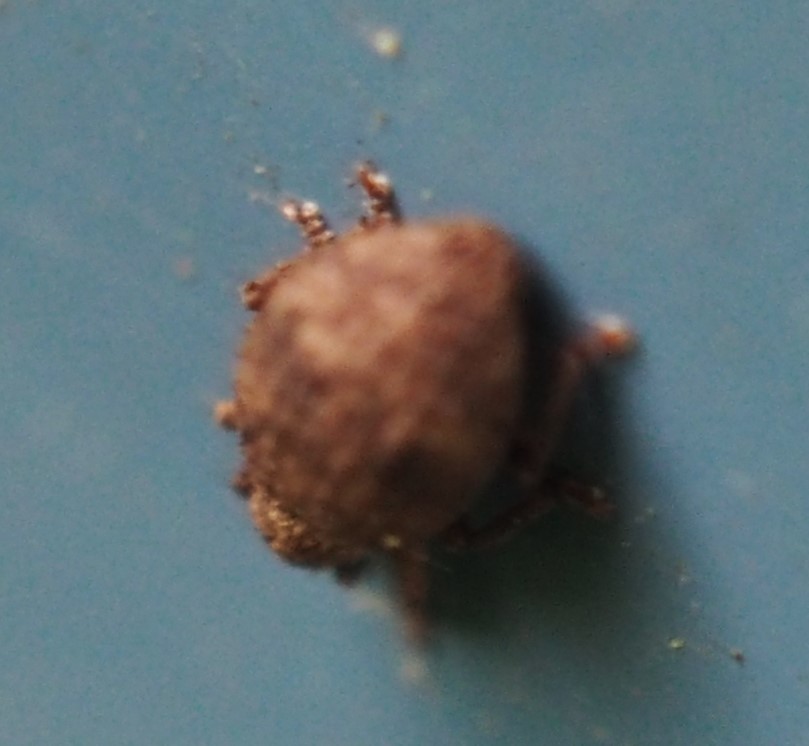
Here you see something a bit different in Beetles: a Quadrate Tortoise Beetle. Second is a side view.
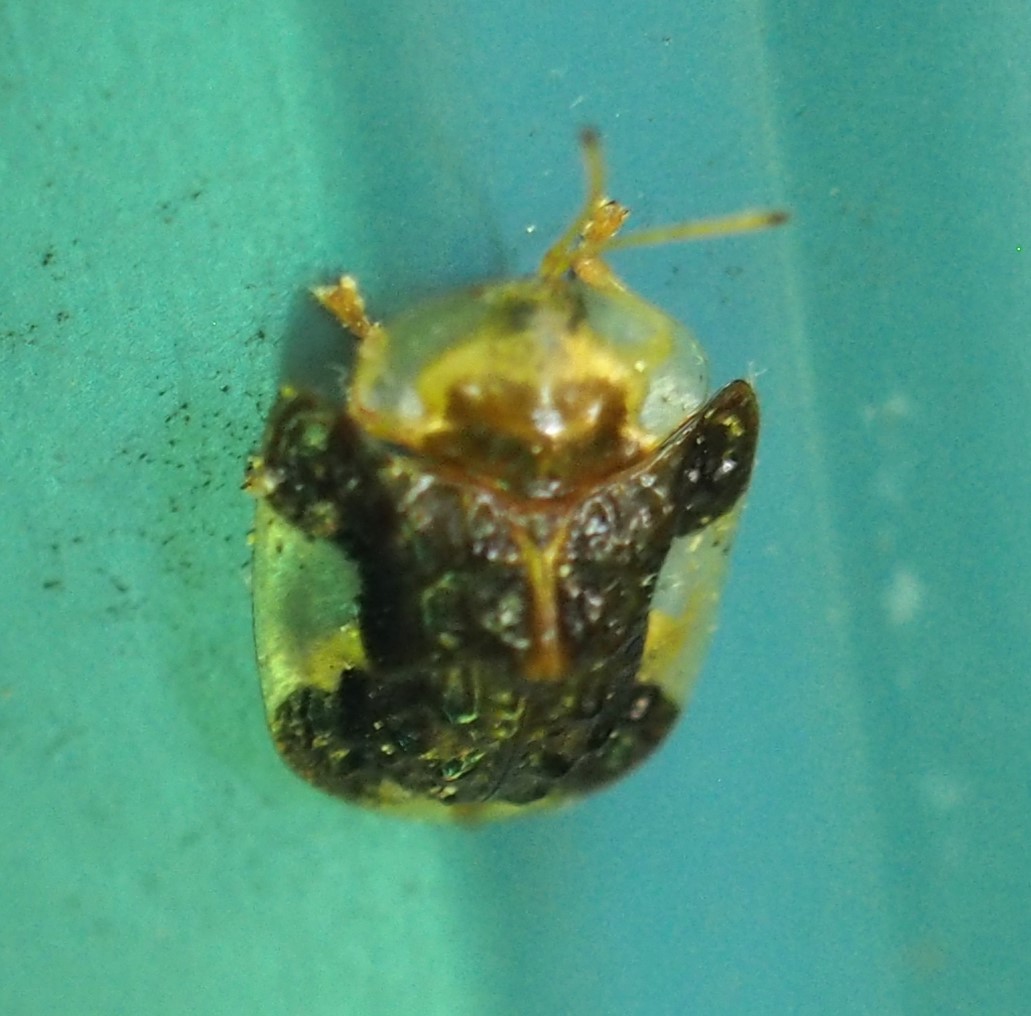
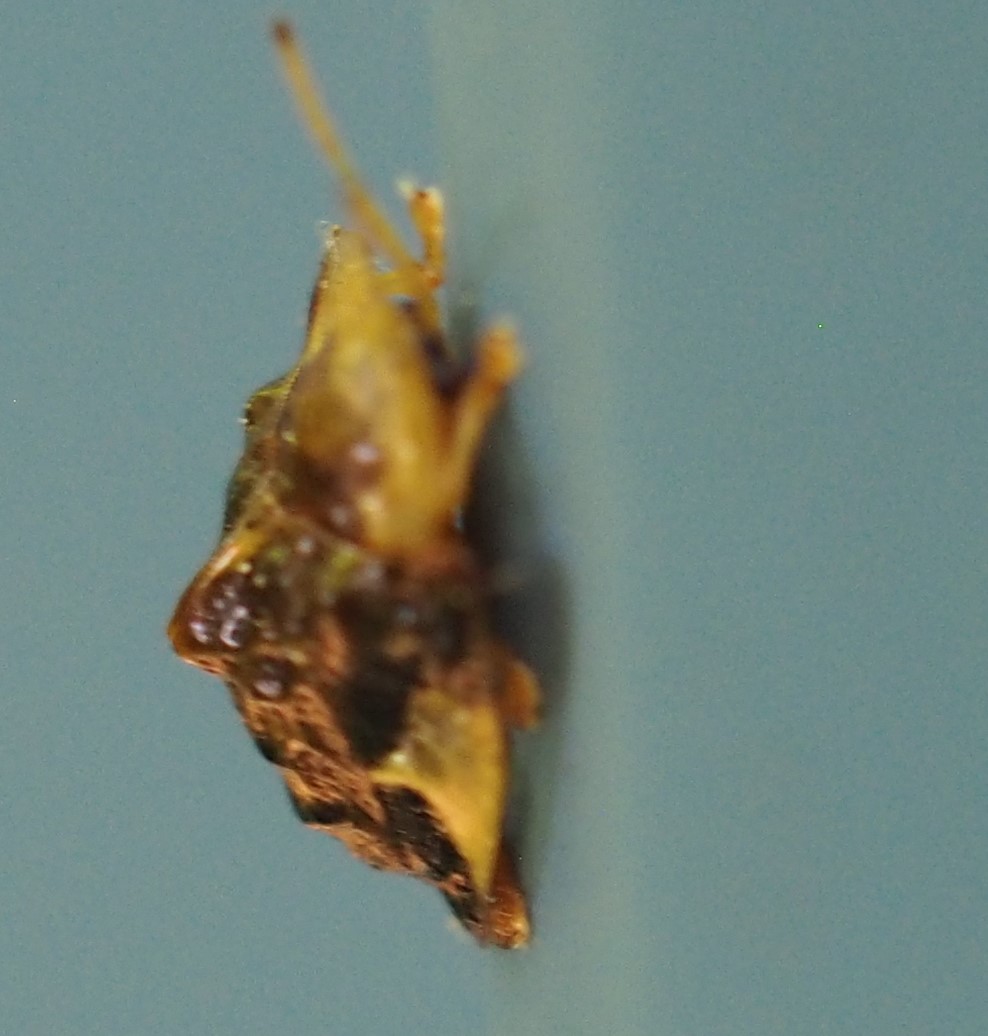
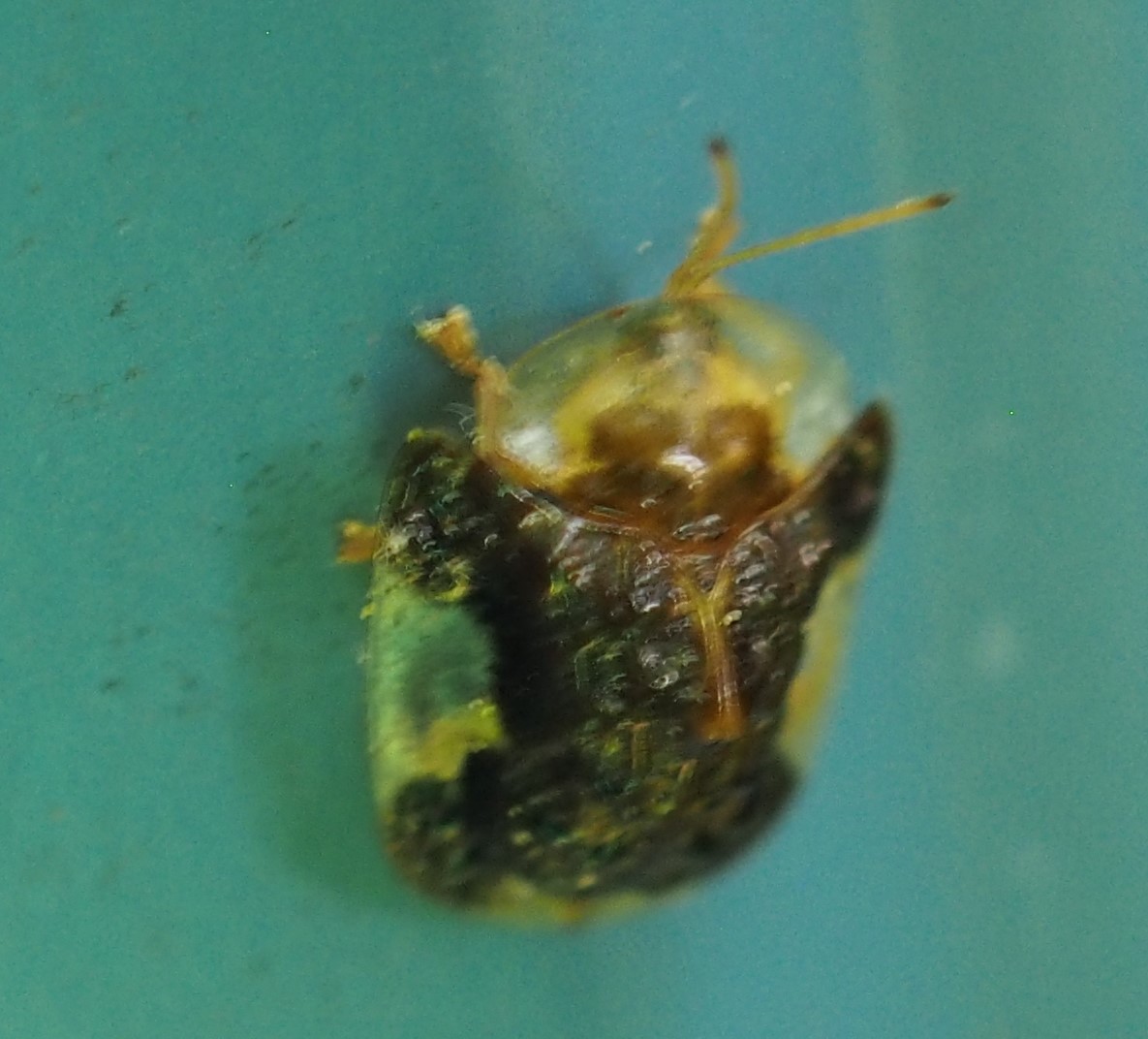
The Clover Seed Weevil from last week was back (picture 1). Number 2 shows one you have probably memorized by now, the Redbud Bruchid. This shot is nice because I've never seen its wings either coming out or being tucked back in.
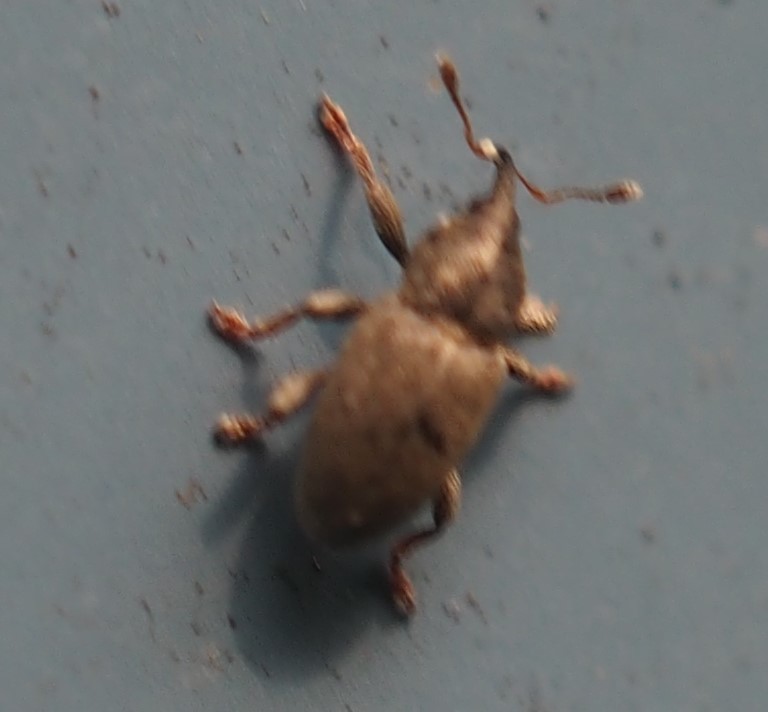
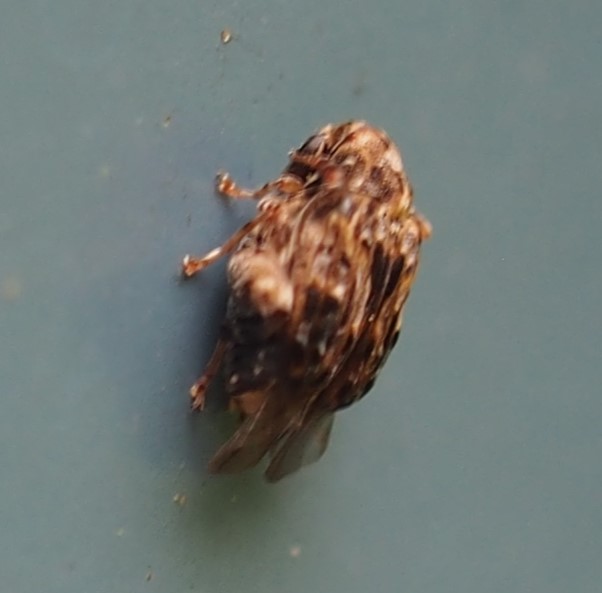
Bug time! I'm starting with the Leafhoppers this time in order to work up to the Assassin Bugs! Don't look ahead!
First is the Four-spotted Clover Leafhopper. Second is one of those hard-to-identify Leafhoppers from the Eratoneura Genus. Third, there were a LOT of these white ones the past couple of days, and equally hard to identify.
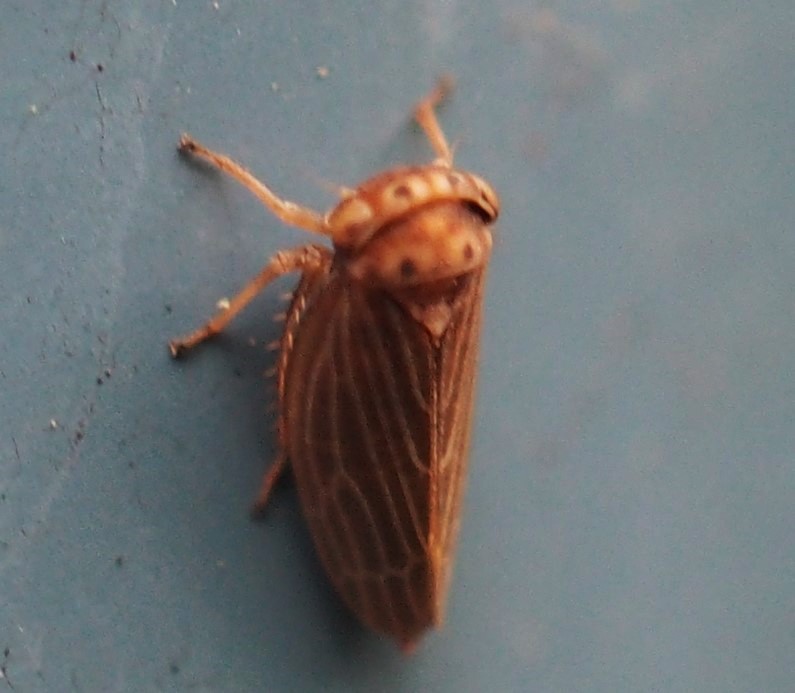
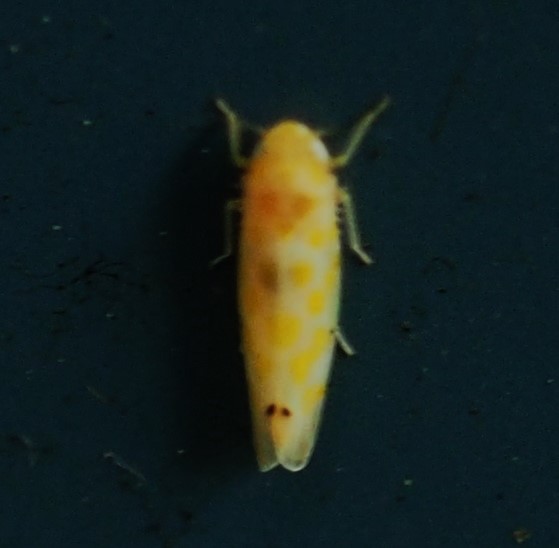
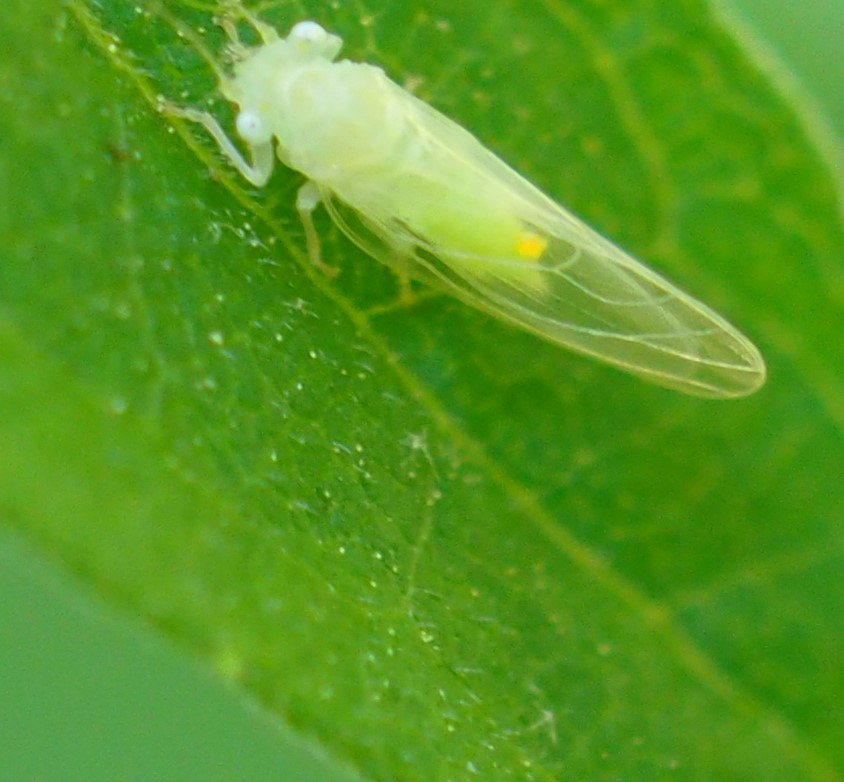
All right, I hope I didn't over-hype these, but they are all Pale Green Assassin Bugs (Zelus luridus). Remember how their Nymphs came in green but also in orange, or whatever was trendy for Nymphs those days? What you're seeing next are several older Nymphs or early Adults, but look at the color spread. First a blue adult. Then one with black wings, which may just be a complexion change from the first one. Third is a green Nymph, as you can tell by its short wings. It has nabbed some lunch.
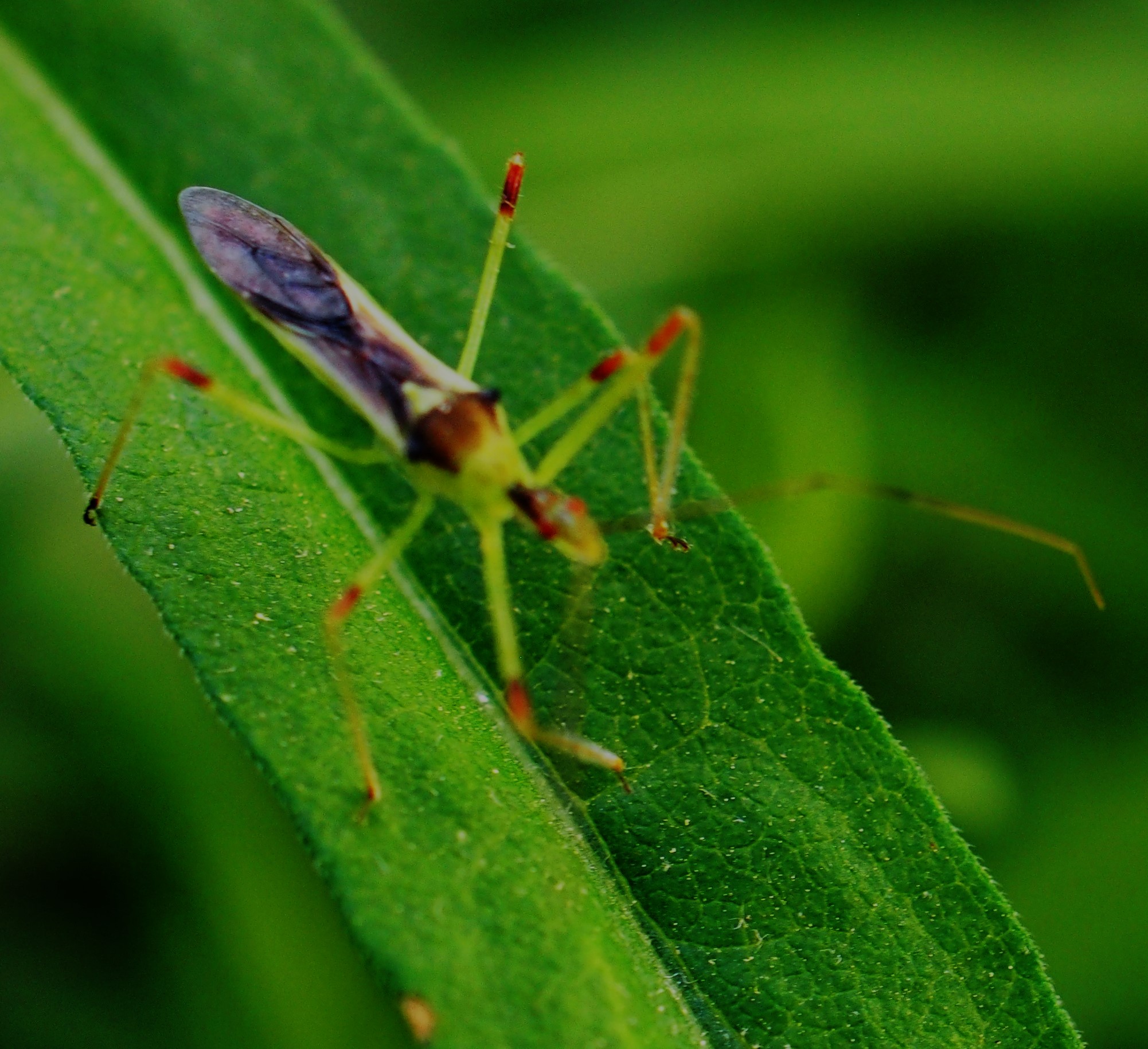

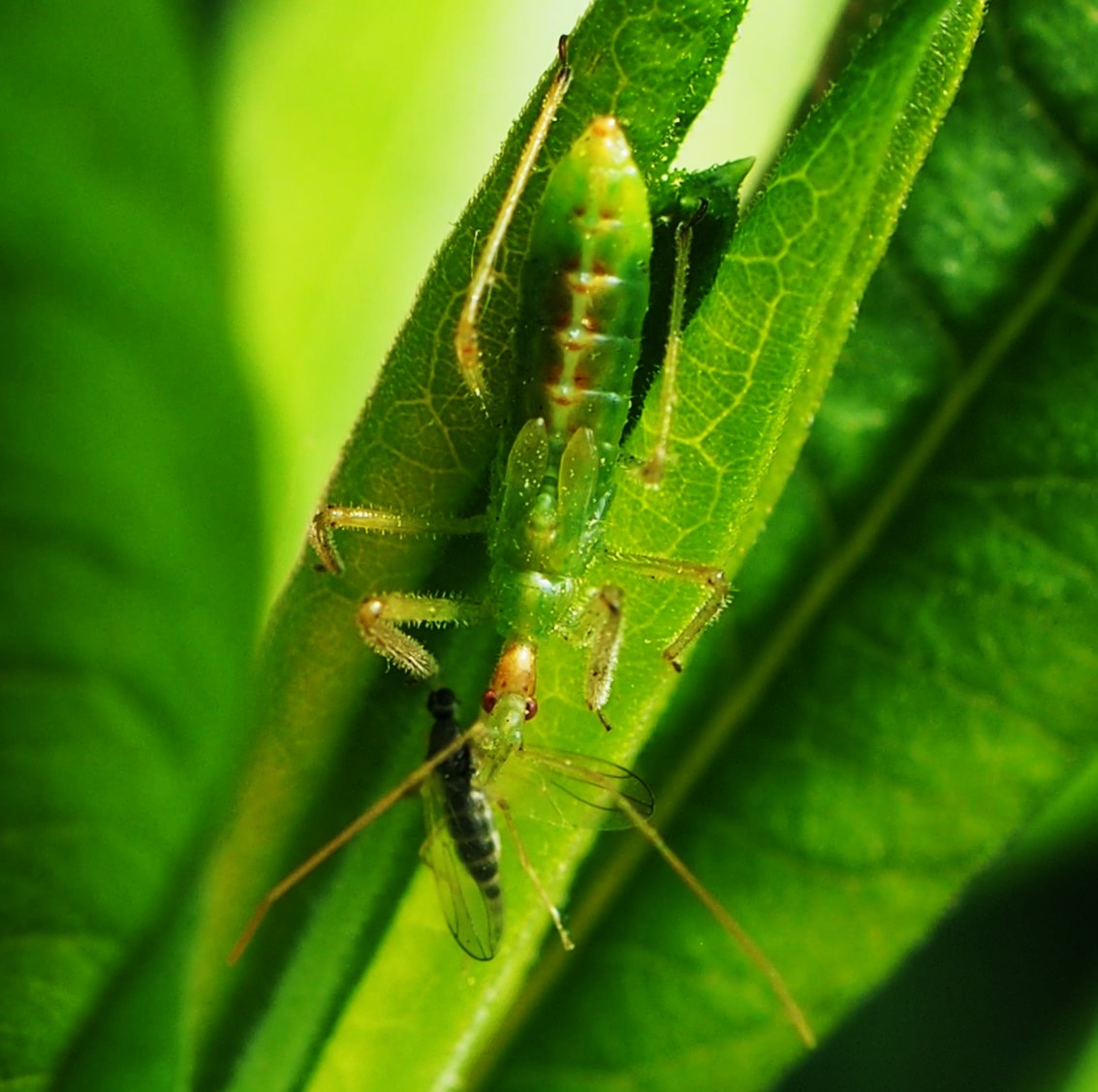
Here is a nice green Nymph from today, followed by a gorgeous Blue specimen from yesterday. Well, its back is Blue, its wings are green and its face is a pale pinkish. I couldn't believe it as I found one after another in all those color combos! Third isn't an Assassin Bug, but a Damsel Bug. I only got a half view of him but you can see he has all the requisite equipment to dismantle a prey. Finally, the only Bug of the kind I bet you were expecting -- a Brown Stink Bug.
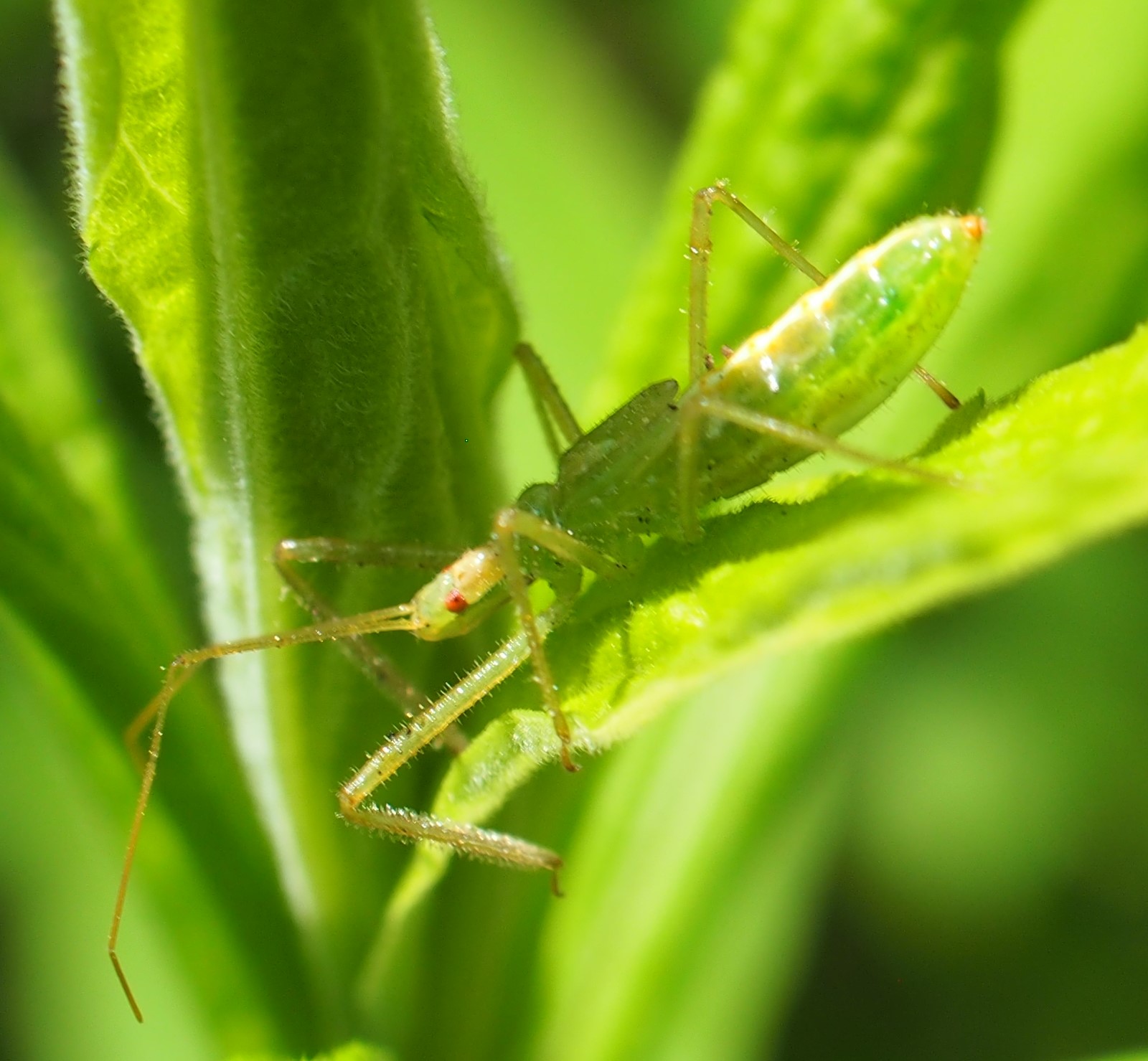
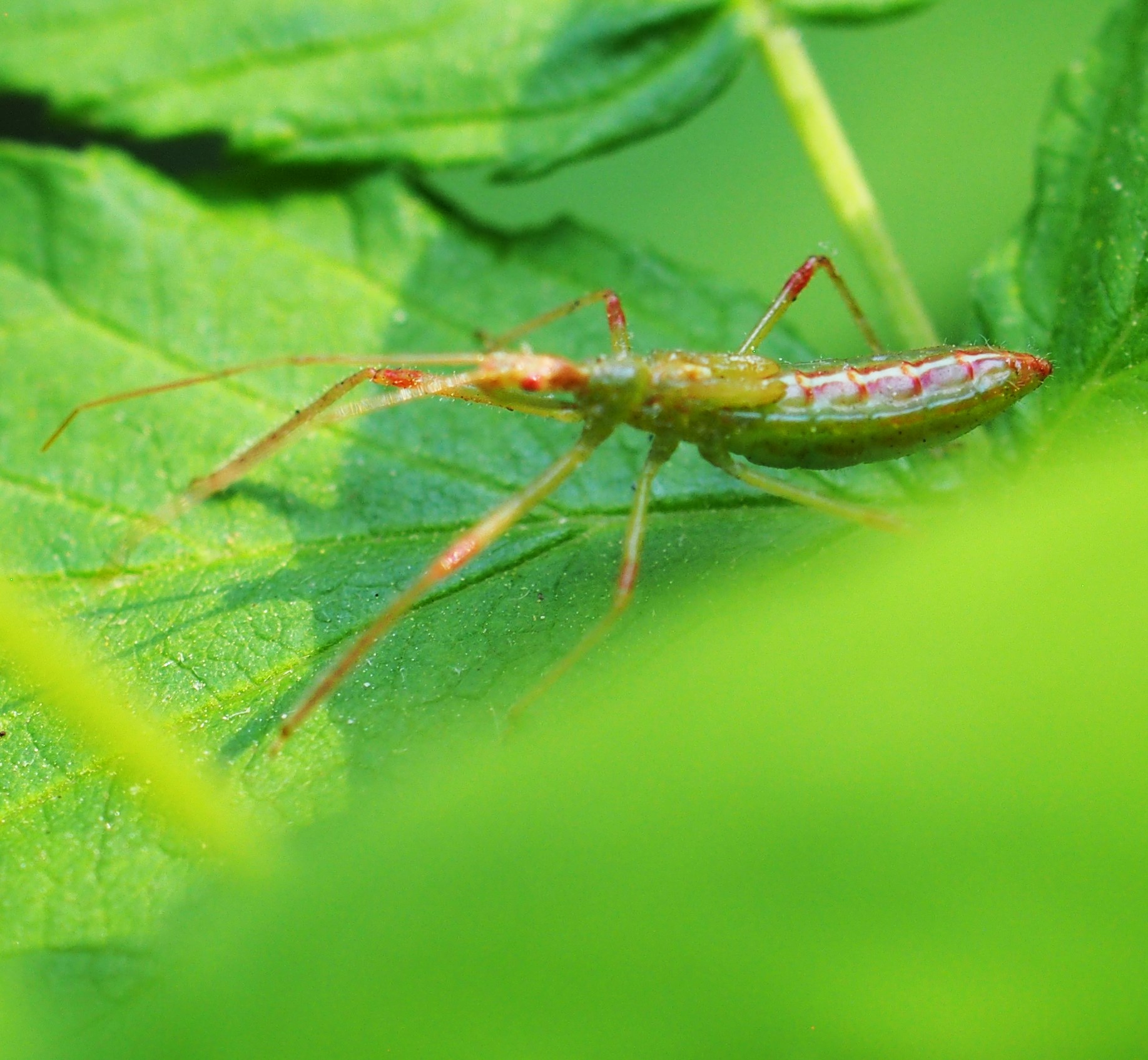
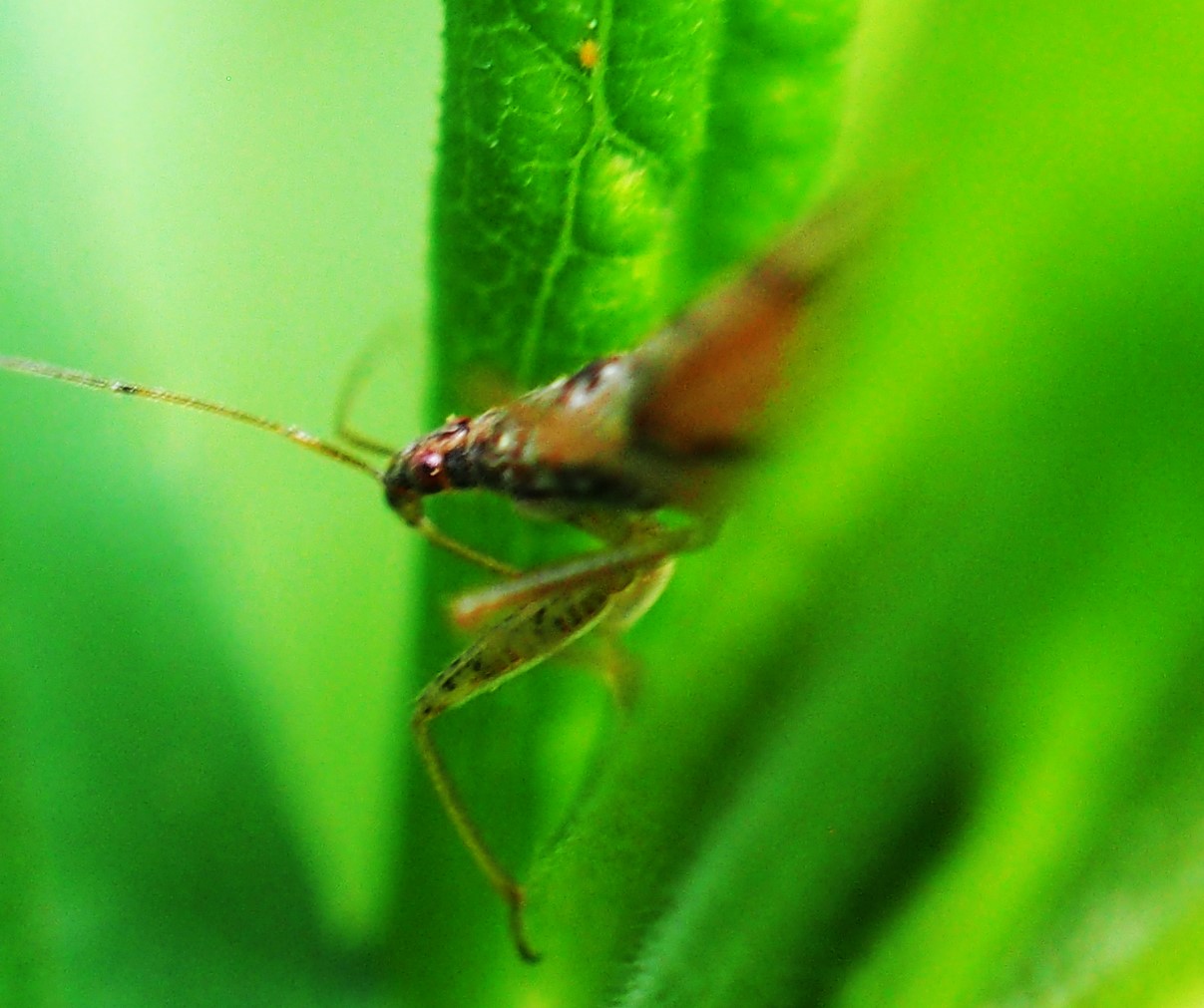

Well, last week we saw a bit of a happening in the land of the Barklice, in particular, in the Graphopsocus genus, where the eggs finally started to hatch into Nymphs. First, the eggs we have watched so long. Then a newborn Nymph, with none of the characteristic spots we usually attribute to Nymphs. And finally we see the Nymph we're used to seeing, with the usual spots.
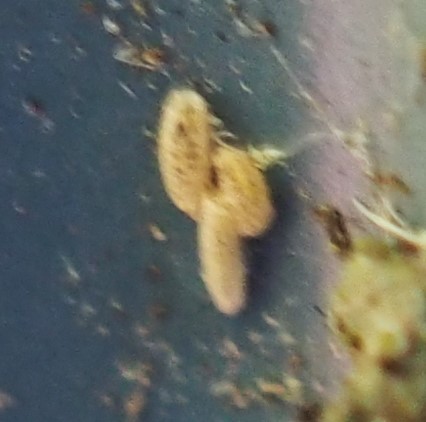

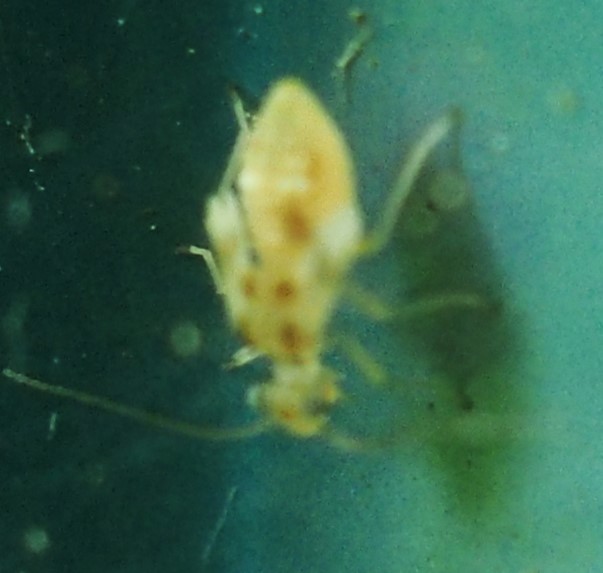
Now, the Nymphs have some growing to do. They will grow out their wings, take on some color, and after a few days they will be ready to emerge as Adults.

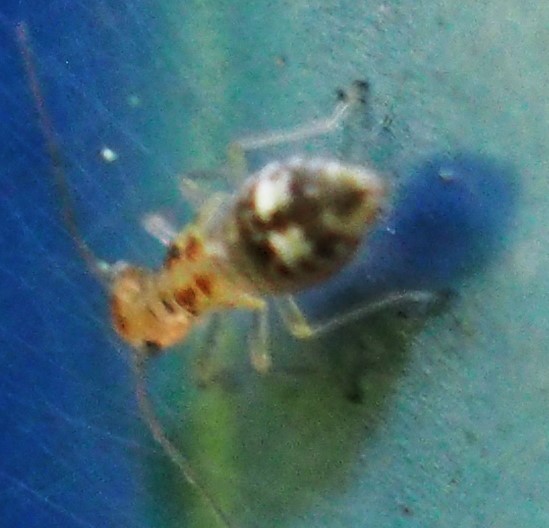
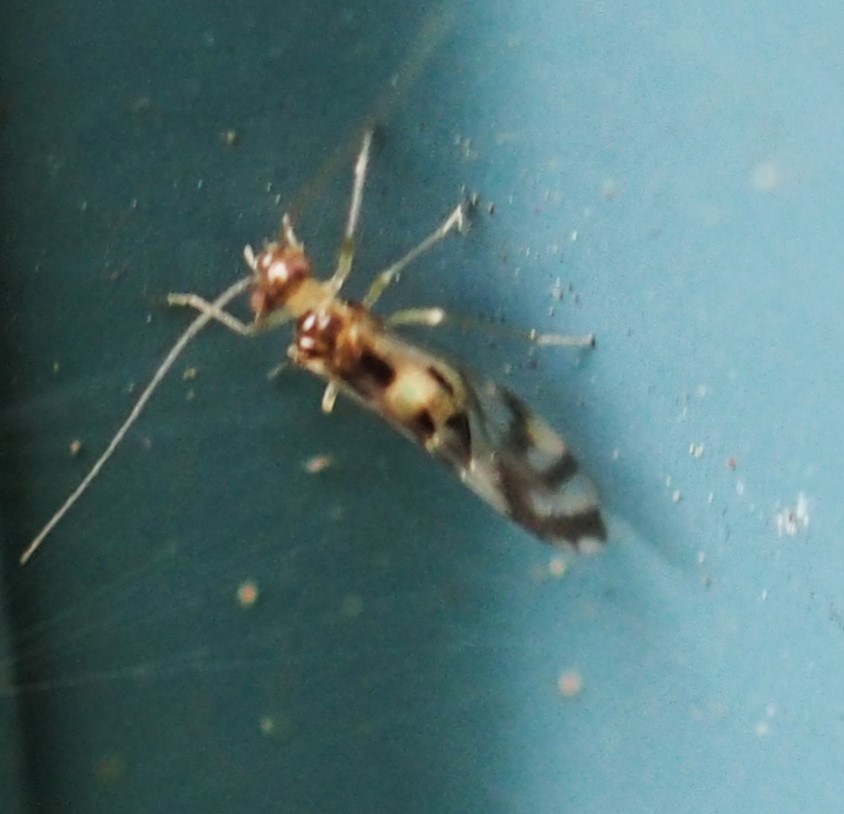
Here are a couple of adults, all cleaned up and with all their colors as we usually see them. Spring is really here! I'm thinking of all the fun I'll have watching them and the other Barklice all Summer!

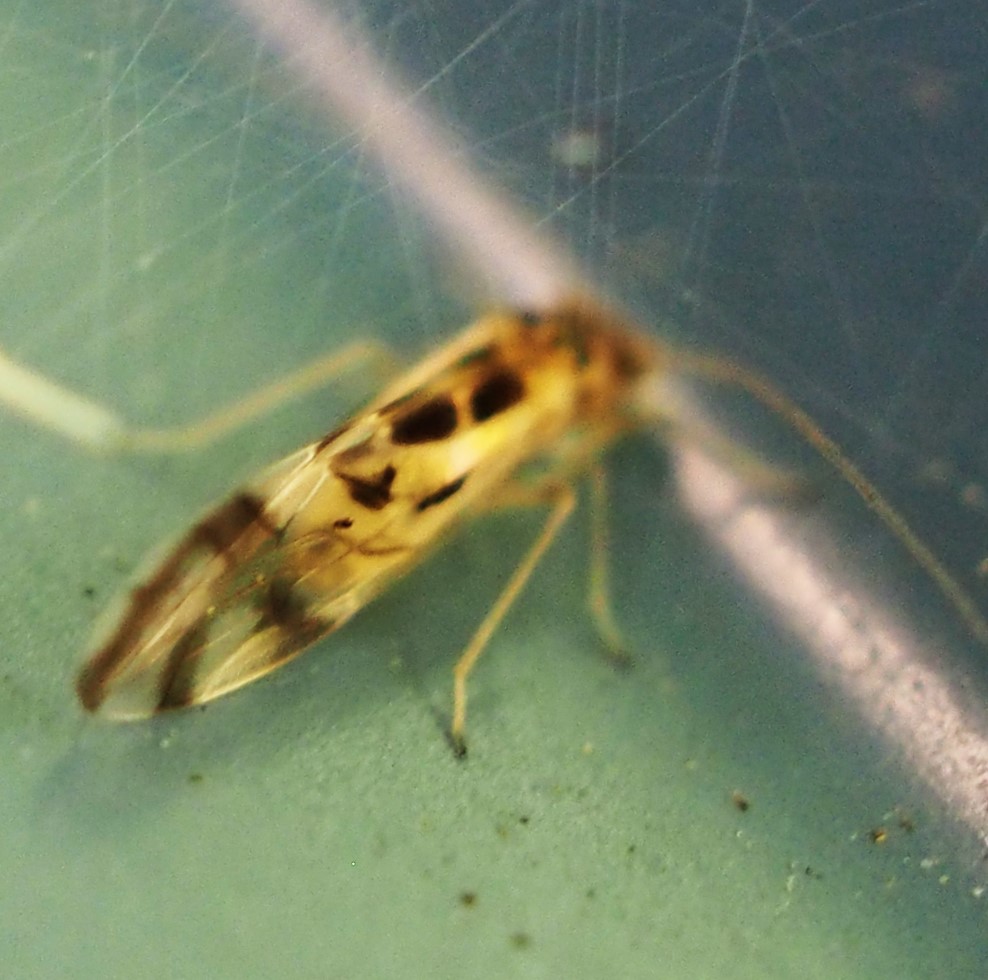
Before we go to see the Flies, we were lucky enough to have a couple of Damselflies this week. The first is a Fragile Forktail, and the second a Bluet.
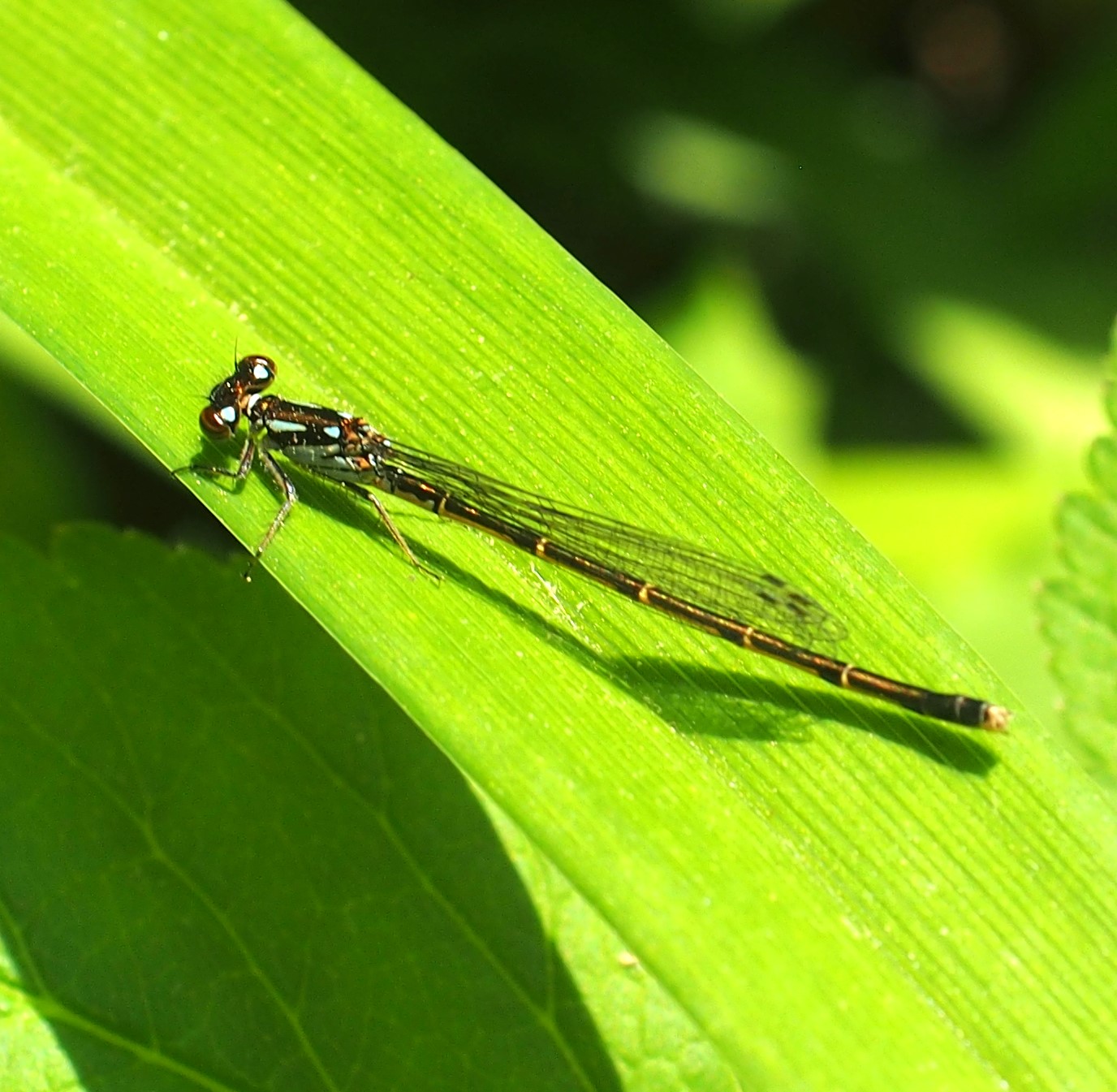

Now for the Flies. They weren't so multitudinous as they were last week. But here are some of the big ones. The last two we have named before: a Root-maggot Fly, and a Common Snipe. The big blue one was given the potential name Bluebottle by iNat's ID app, but I think it is too large for a Bluebottle.

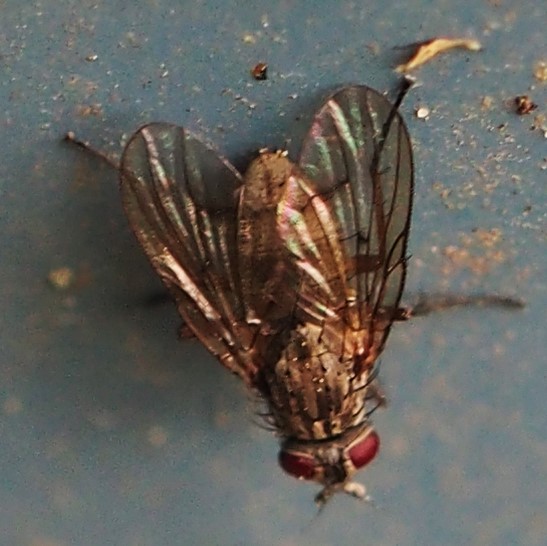
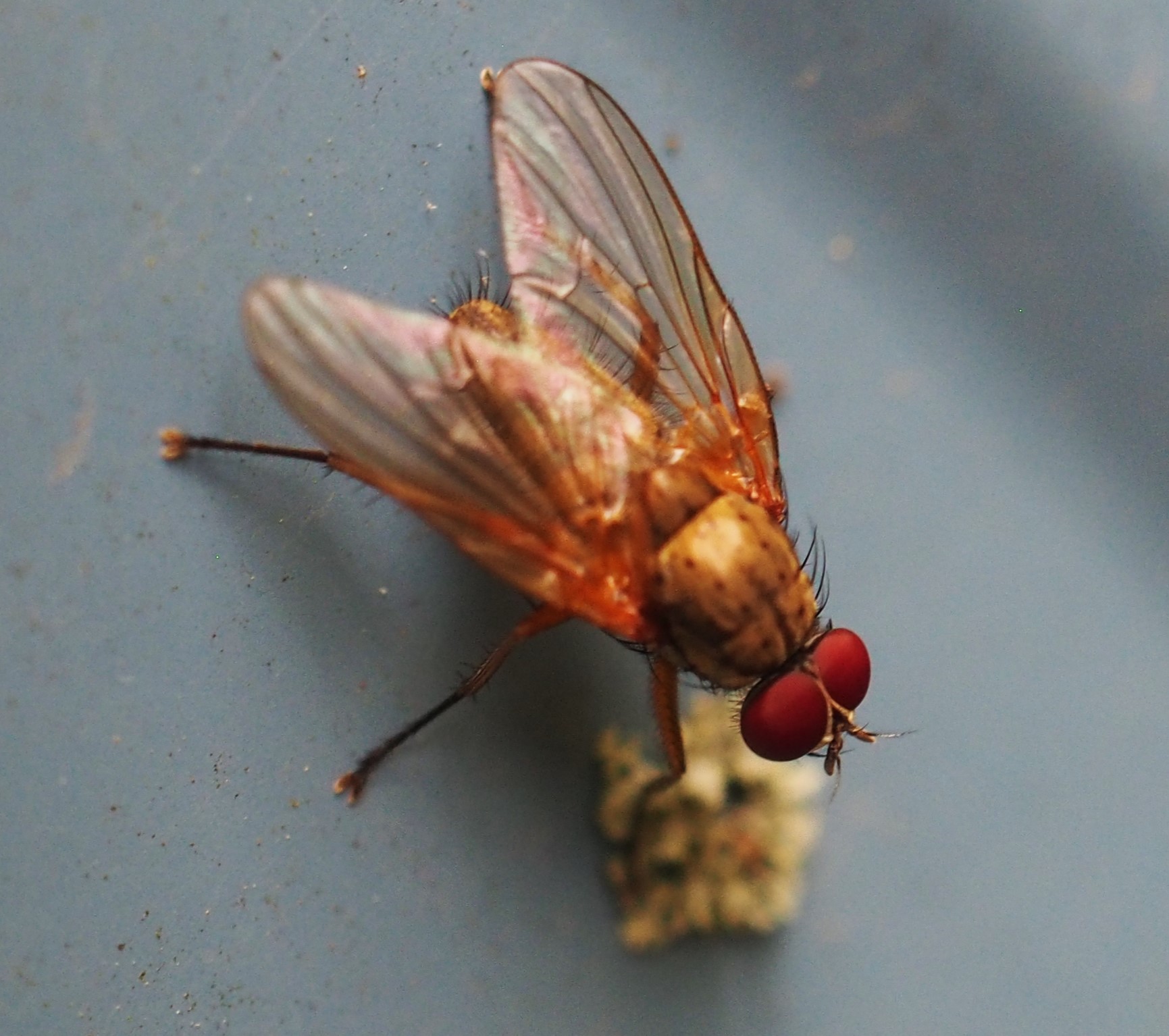

Here is a medium-size Crane Fly. Then a couple of quite petite ones.
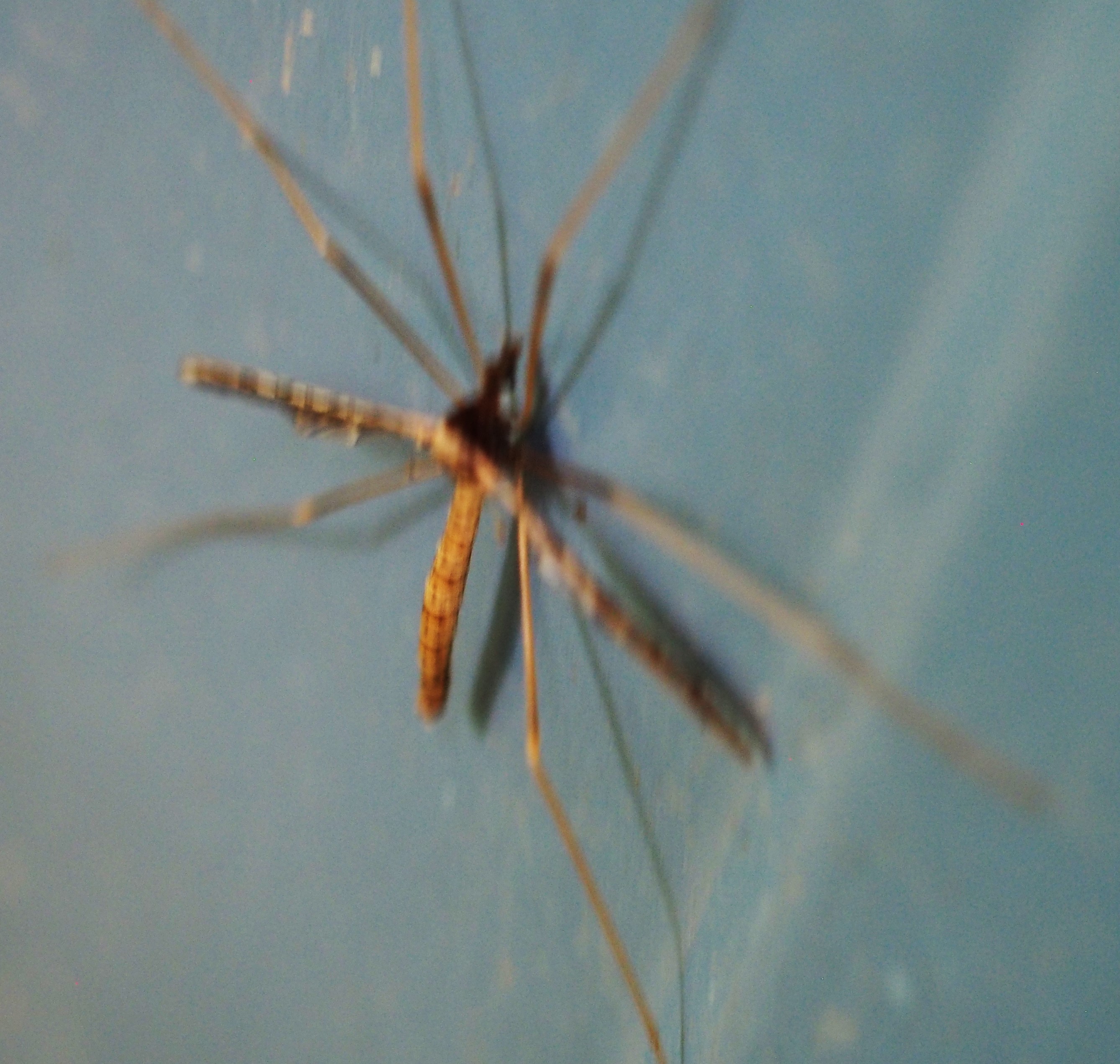
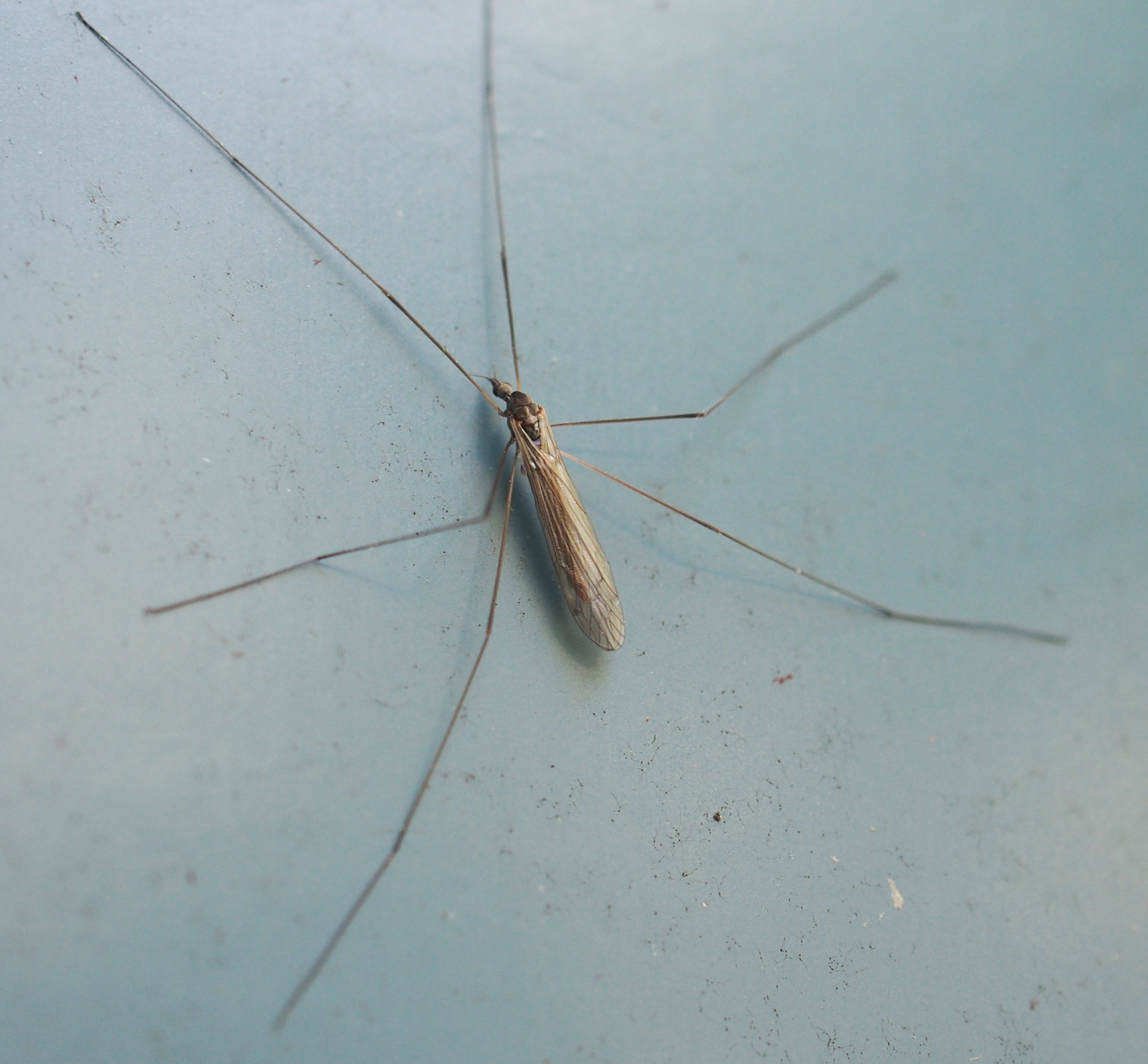
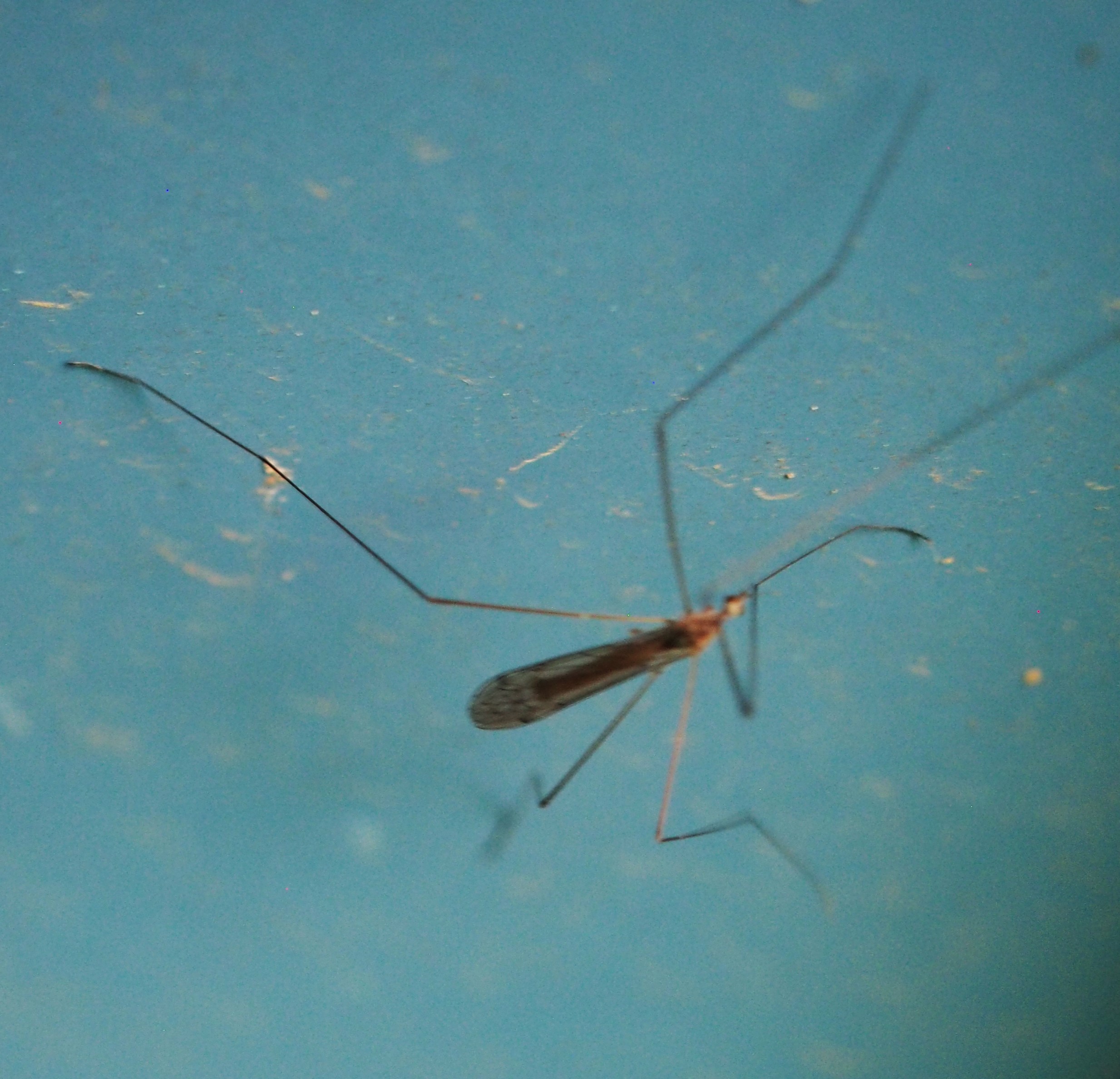
Here is a shiny Fly, probably a Fungus Gnat, that visited the Raspberry flowers. Then a red-winged (and -bodied) Fly and a mostly reddish Fly.
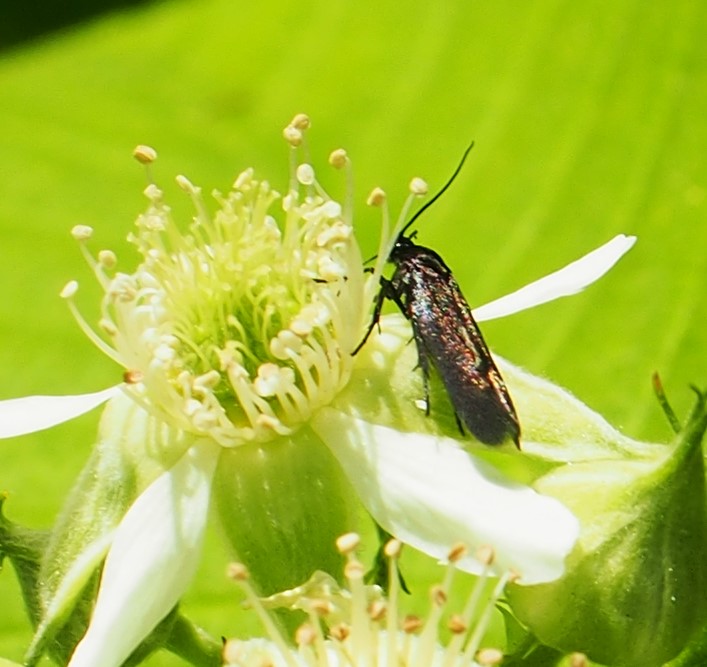
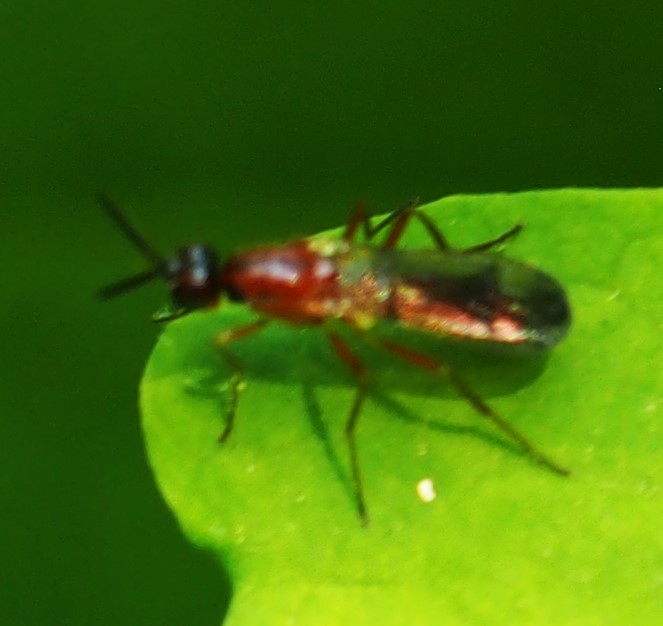
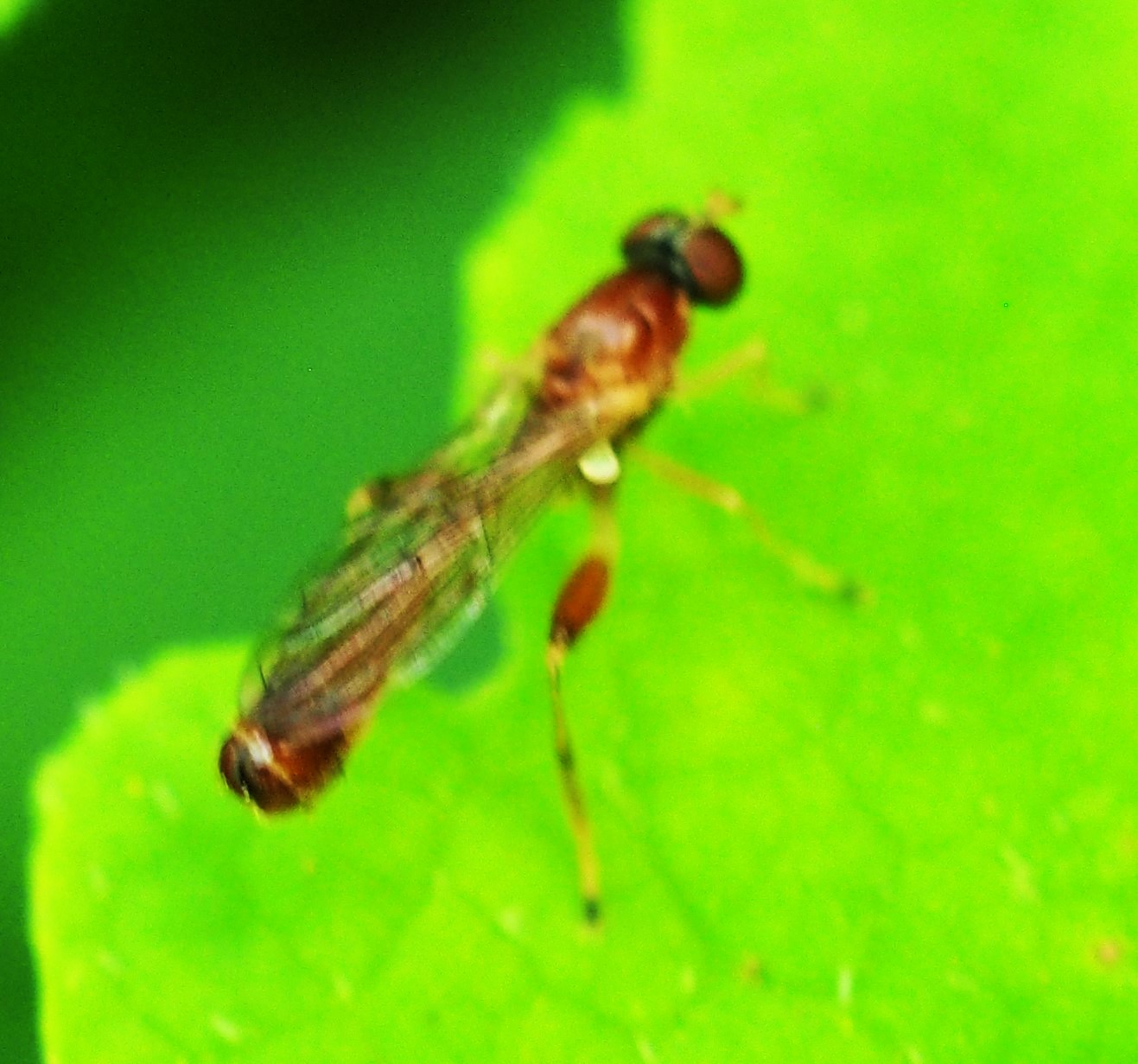
It's really difficult when you haven't developed the eye for whether a winged Insect is a Fly or a Wasp! Here are three shots of a good example.
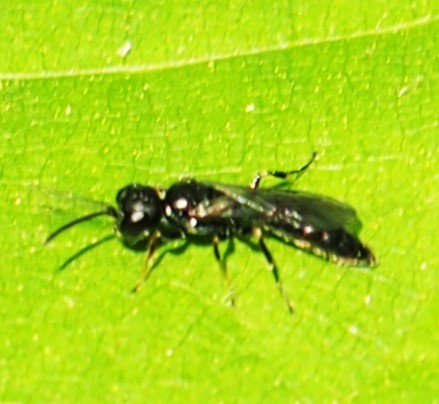
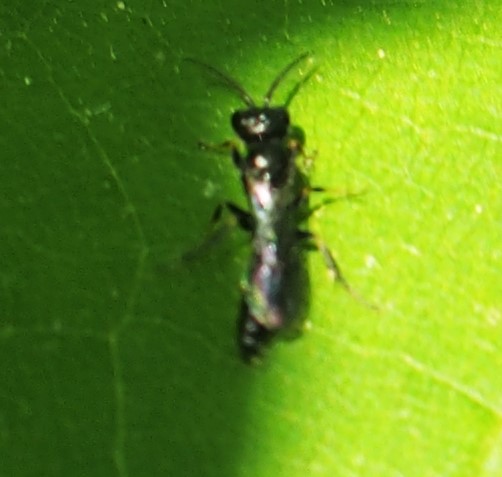

Here is a Fly that has perplexed me for a long time as far as naming it goes, and it's back in numbers this year.
It reminds me of some of the Flies in the genus Minettia, but I've never gotten anyone to agree with me.


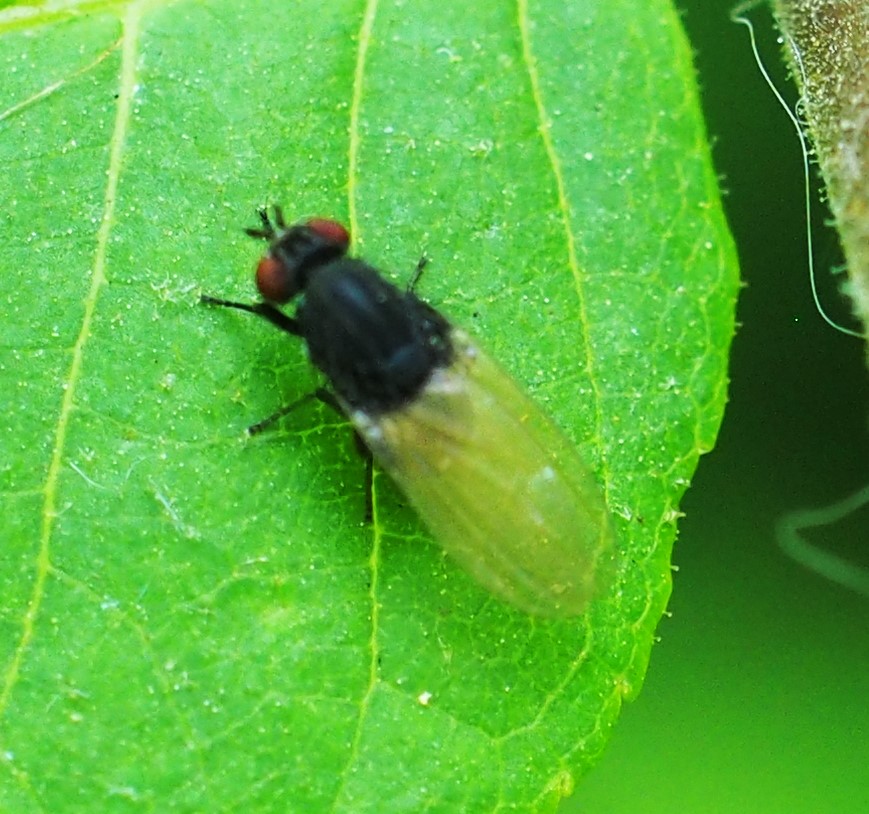
This Fly just didn't seem right. Then something made me think of one I'd tried to fit into a Fly-shaped mold, but it wasn't a Fly - it was a Sawfly. So I submitted these pictures to iNat under Sawfly and let's see what that gets us. :-) But number 3 IS a fly, the Narcissus Bulb Fly, which mimics BEES, not Ants.
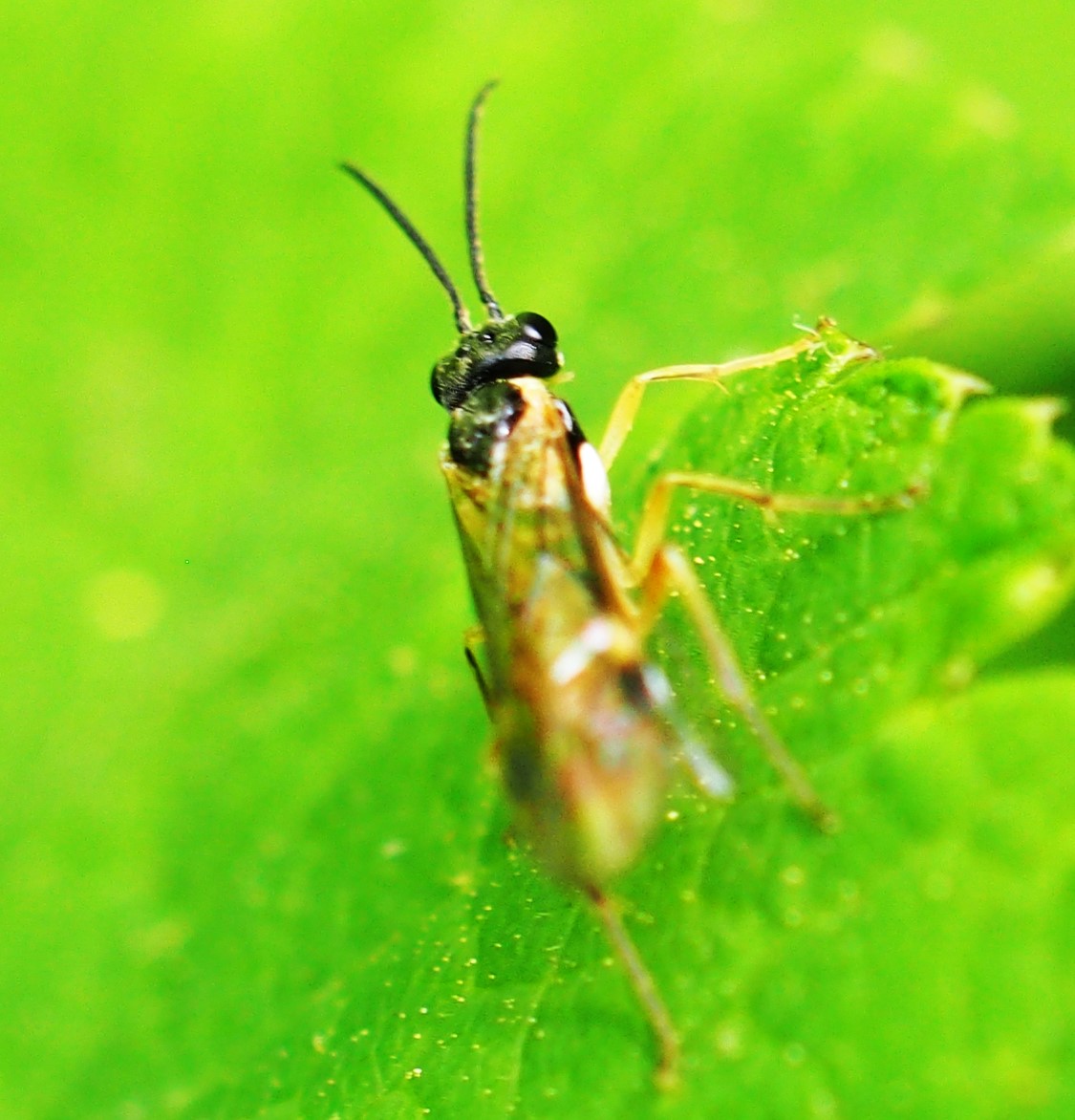
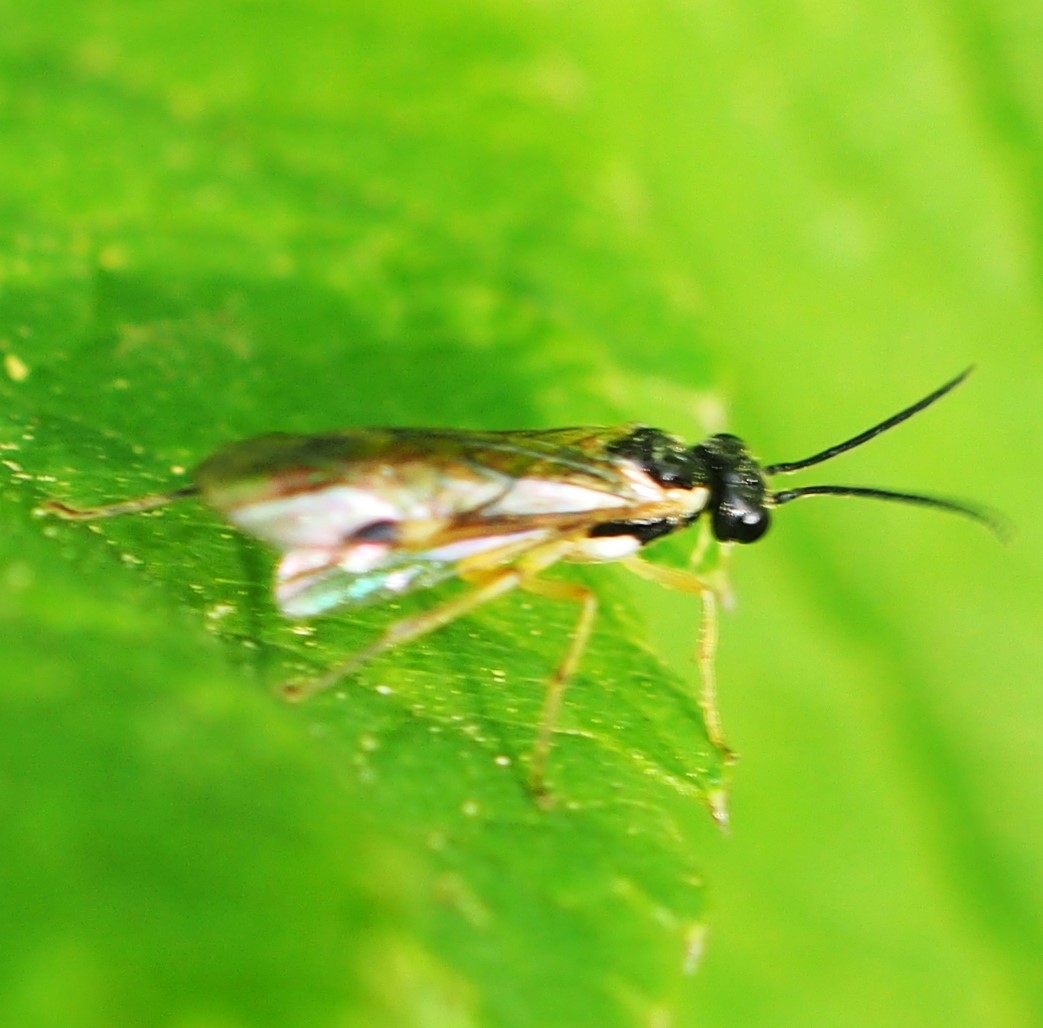
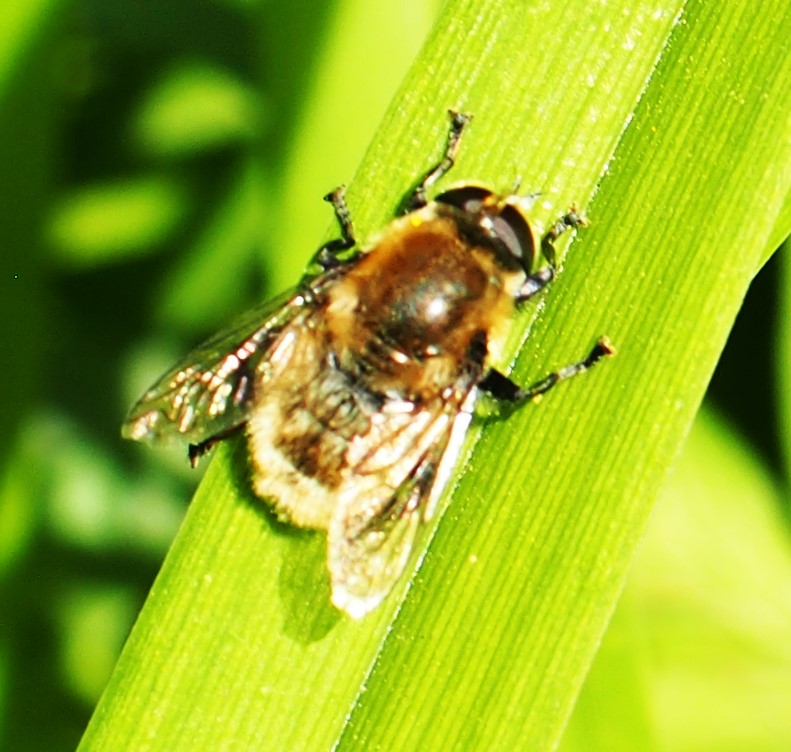
Here's what is probably a Goldbottle, followed by a little Fly with amazing green eyes. Third is a Hover Fly named Toxomerus marginatus.
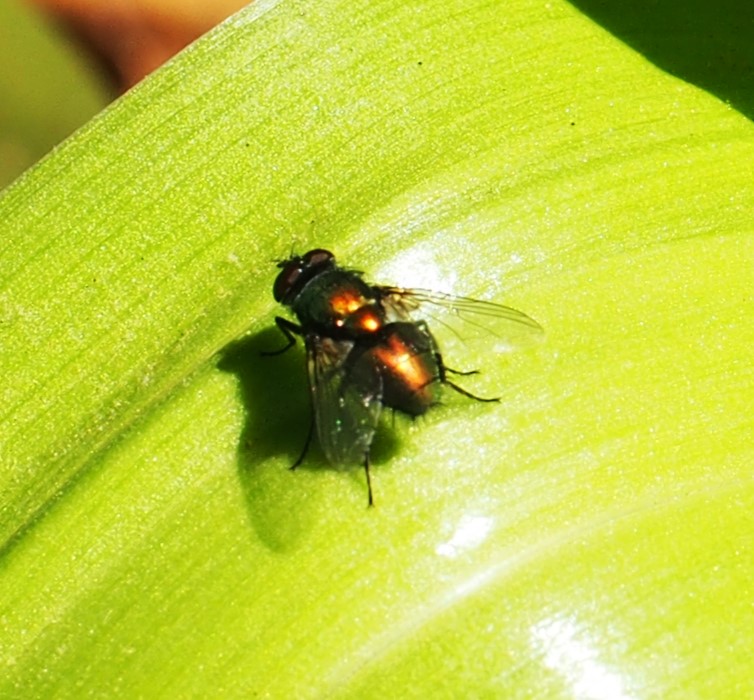
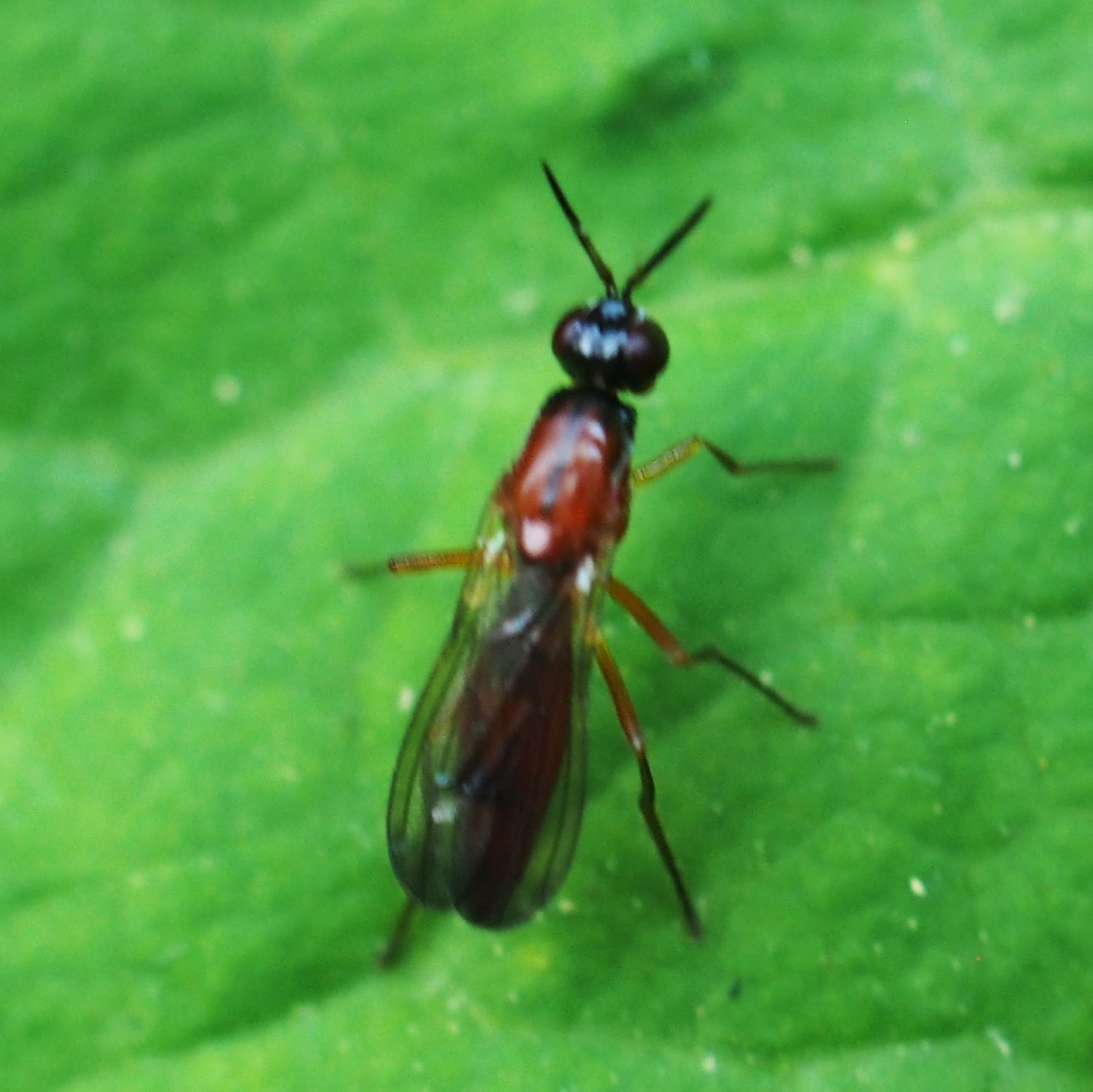
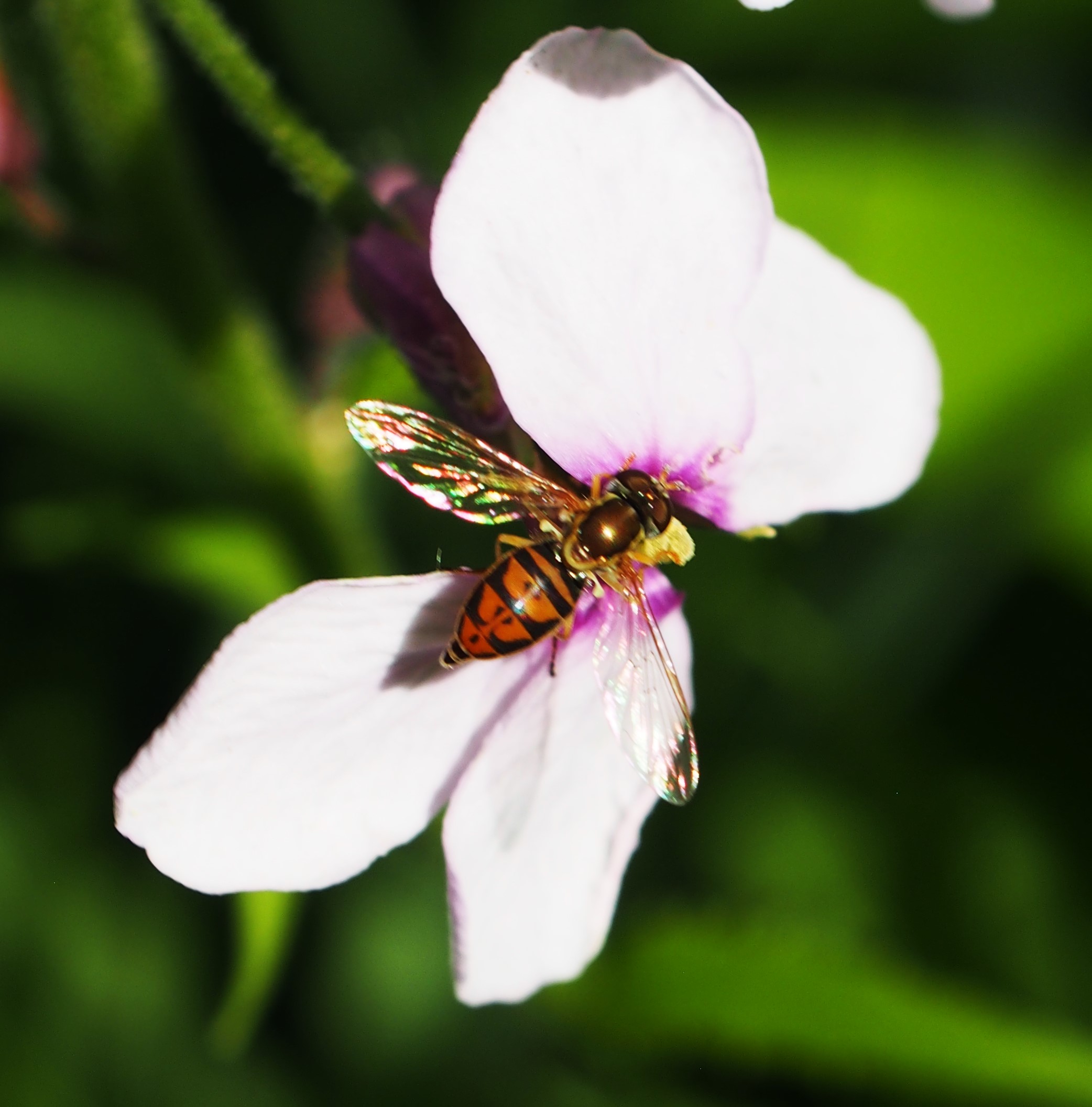
Here are a few little Flies that I haven't found names for yet.
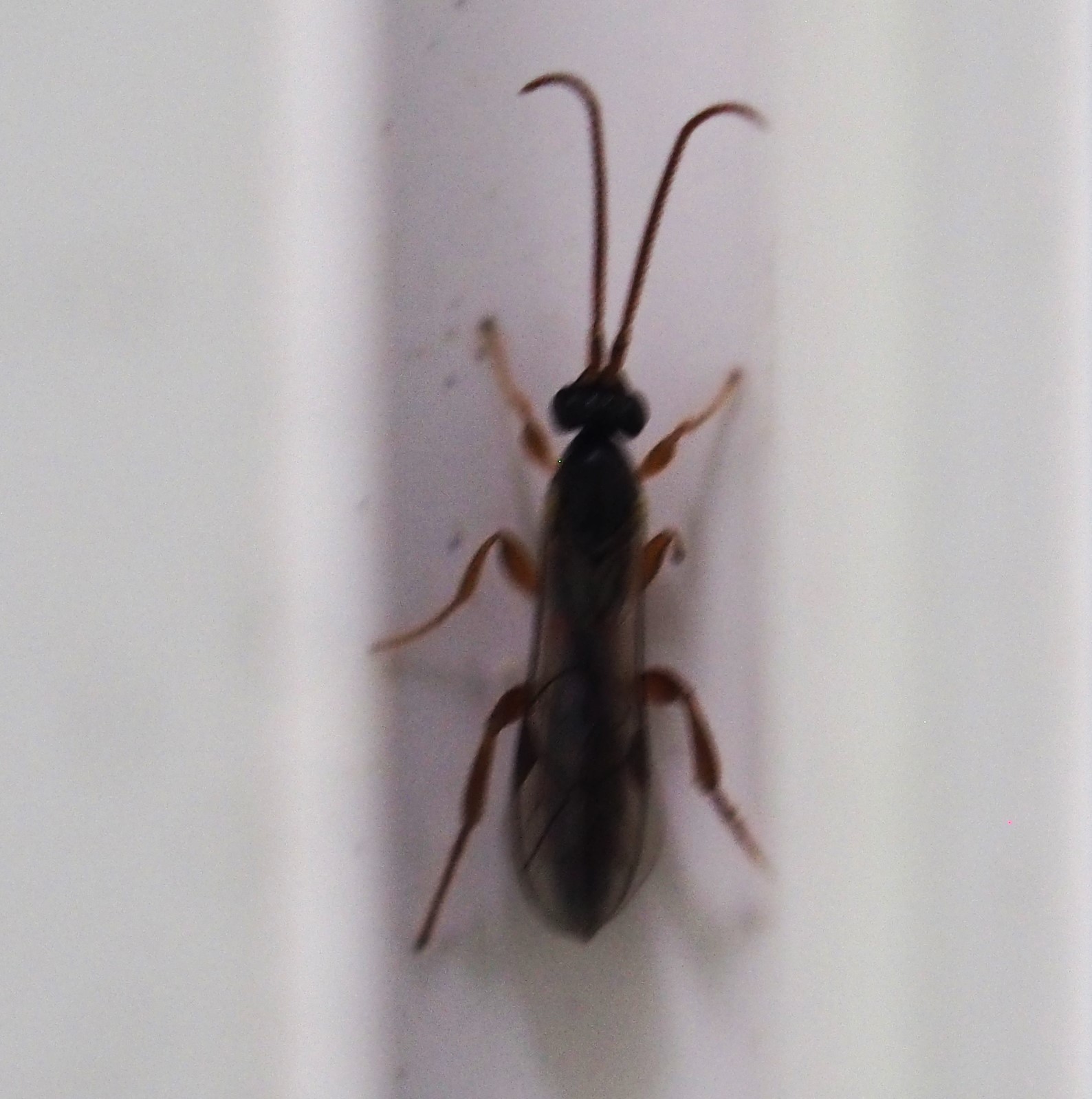
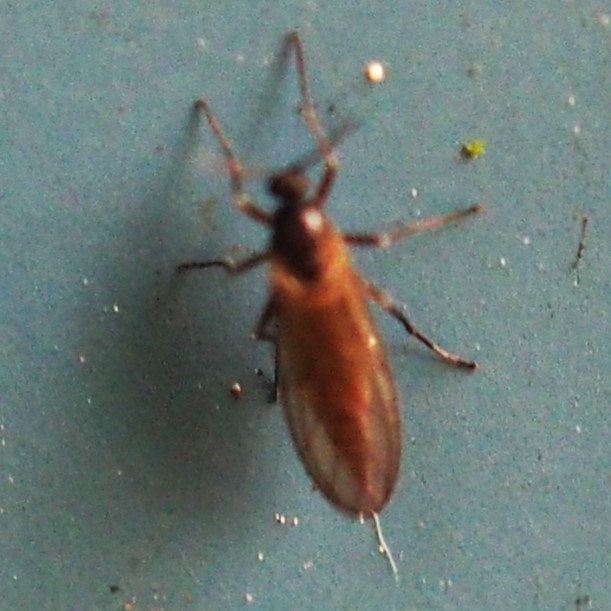
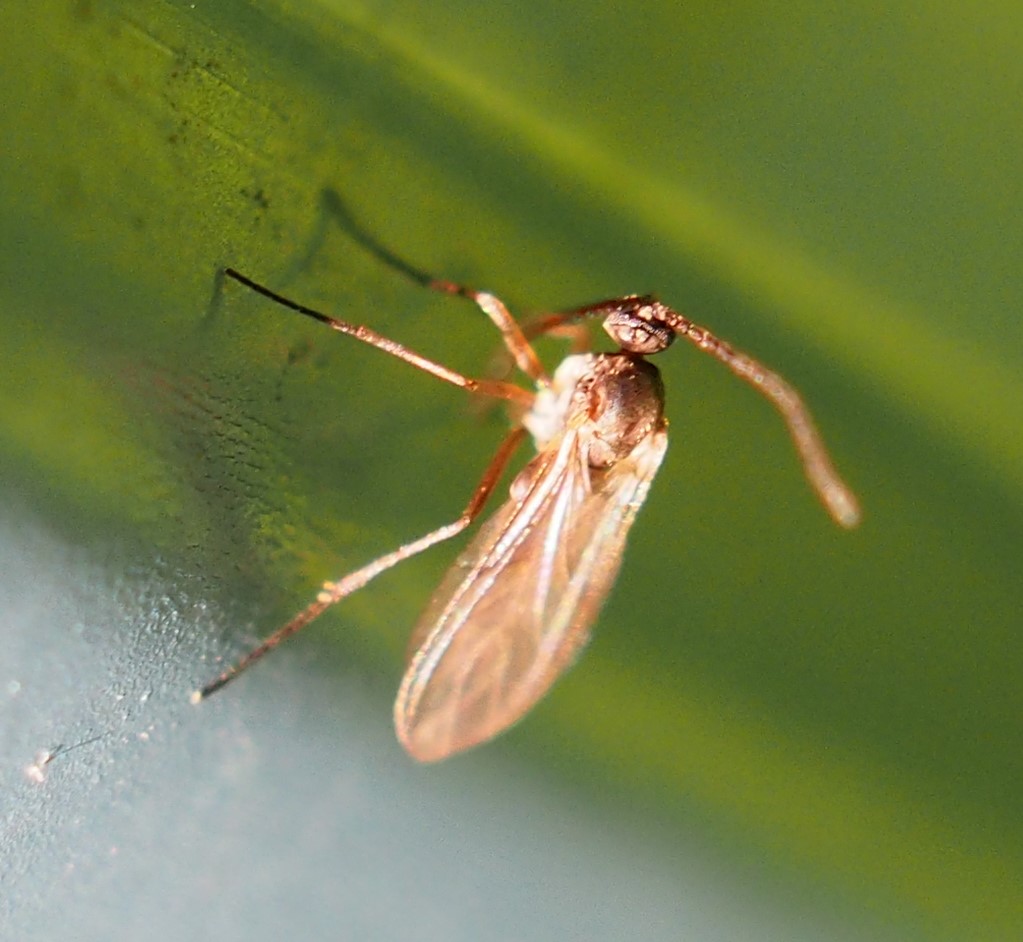
Here are a few Mosquitoes that I haven't heard back about. The second and third ones are probably in genes Aedes because of the white-banded legs. Now we know number 2 is Grossbeck's Speckled Mosquito, Aedes grossbecki. And third is Aedes Canadensis subspecies Canadensis, the Woodland Pool Mosquito. Thanks to Liam Wolff of iNat. I don't think I ever spotted either of these before.
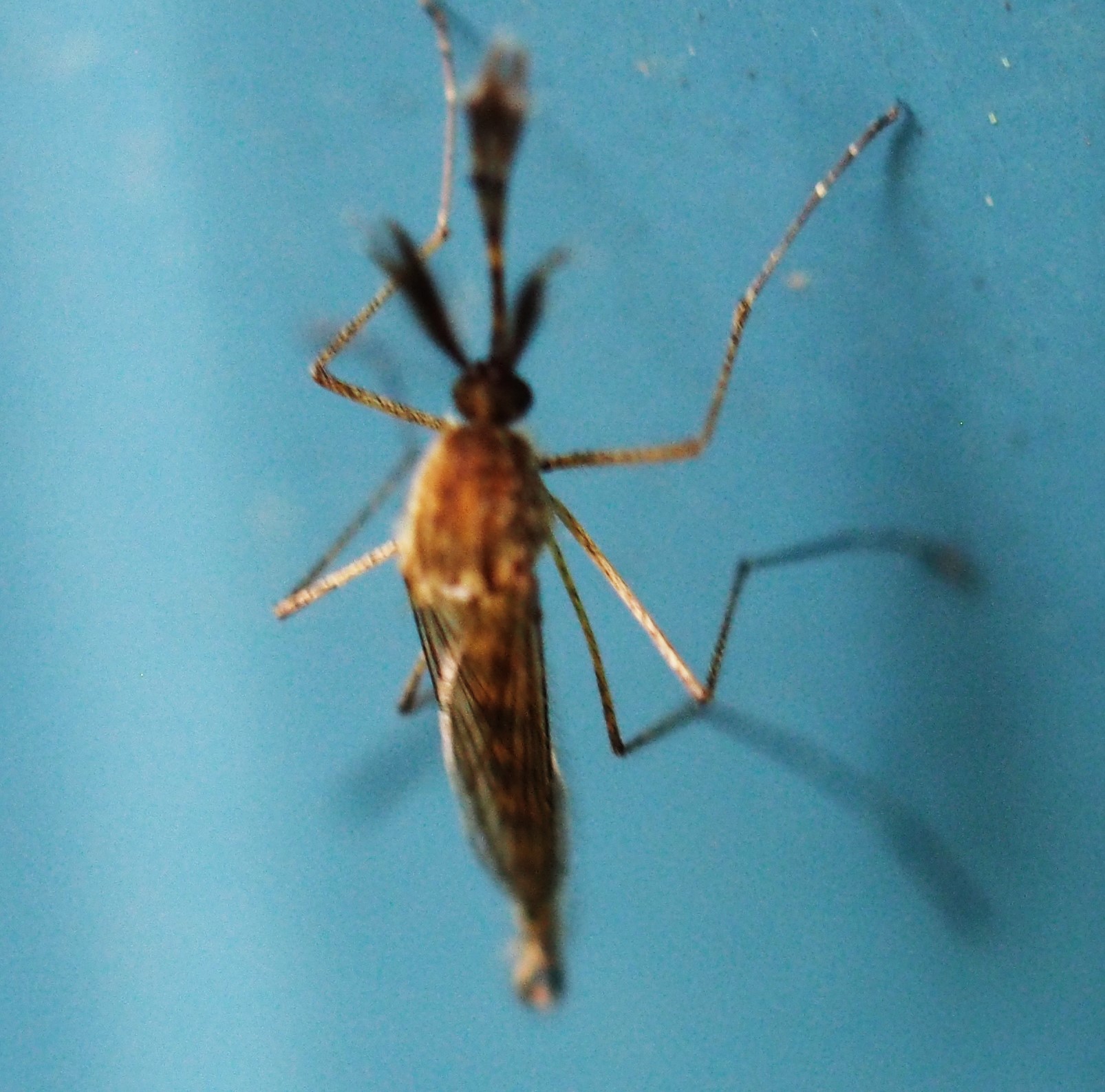
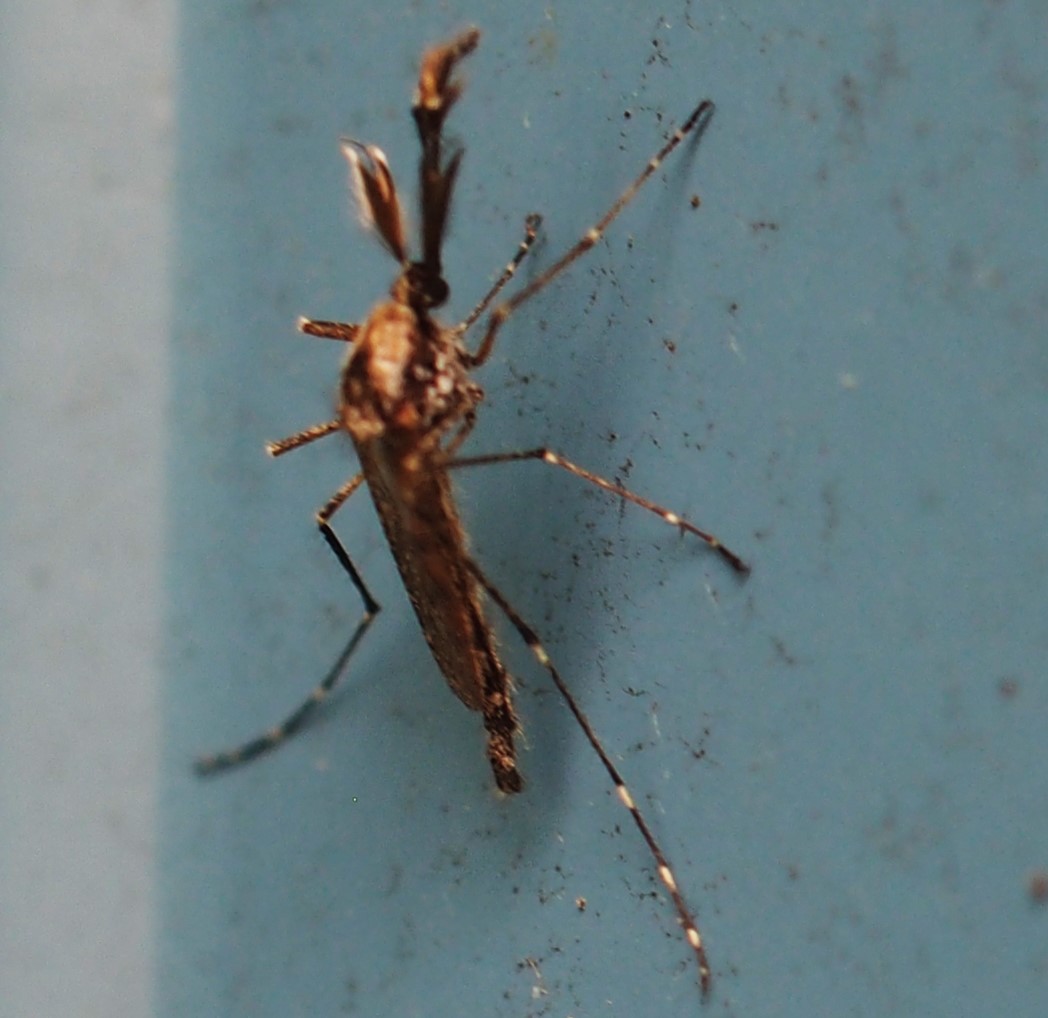

Ah, at last, your reward for looking at all those other Flies. Here are a couple that appeared this week and were not at all shy about being photographed. The smaller one in picture 3 was more colorful. These Long-legged Flies are members of genus Condylostylus and the first two (same fly) are C. patibulatus. @zdanko of iNat is both an expert on these Flies and many others and also very nice about answering questions! Thanks Z!
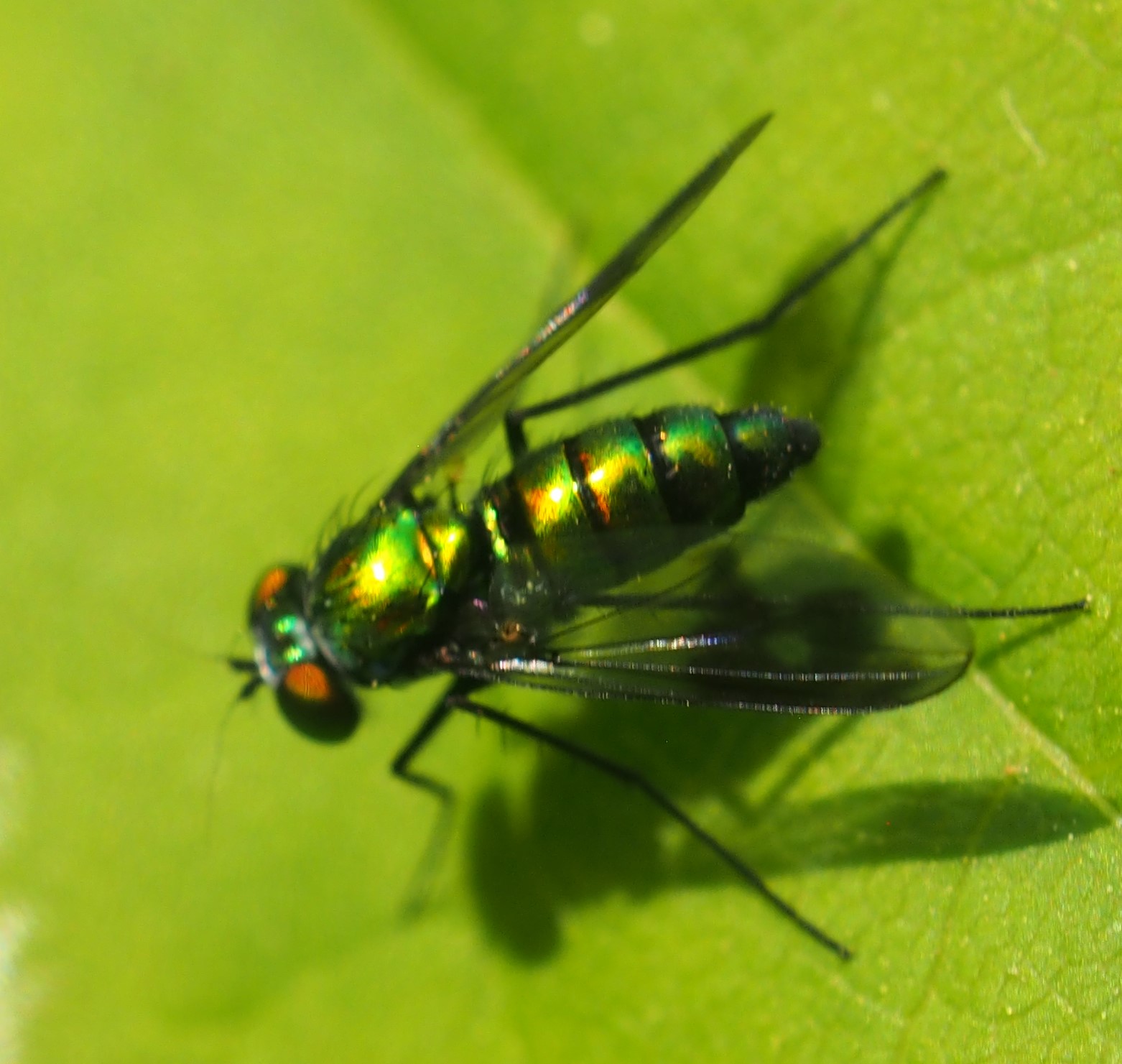
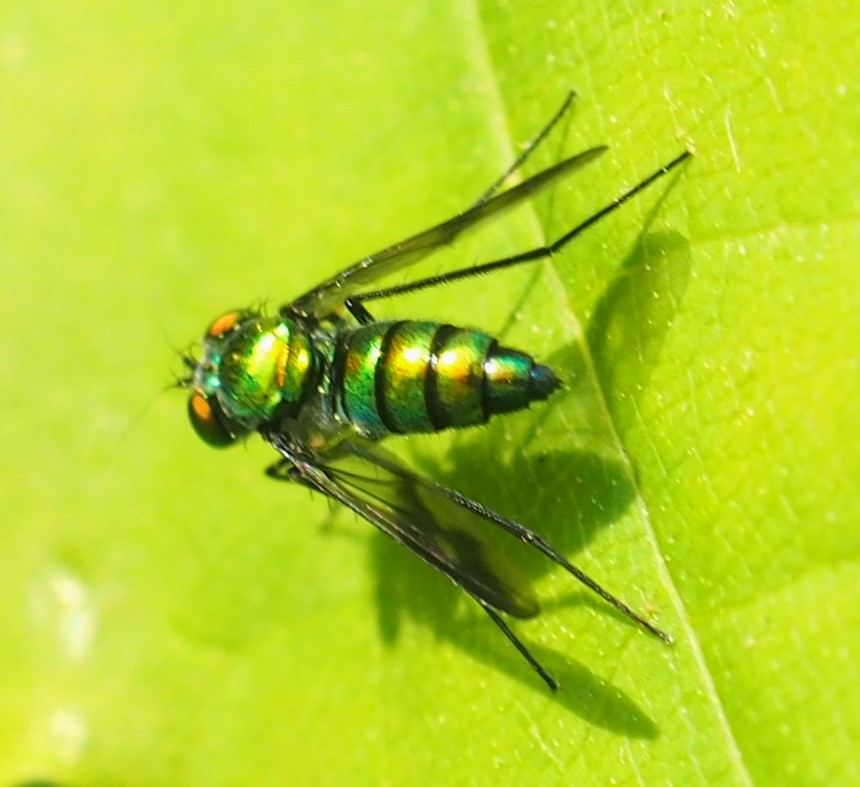

Here are a pair of Dame's Rocket Moths mating in the yard. Then we see a fluffy Moth, so far unnamed, and finally, a familiar-looking Moth.

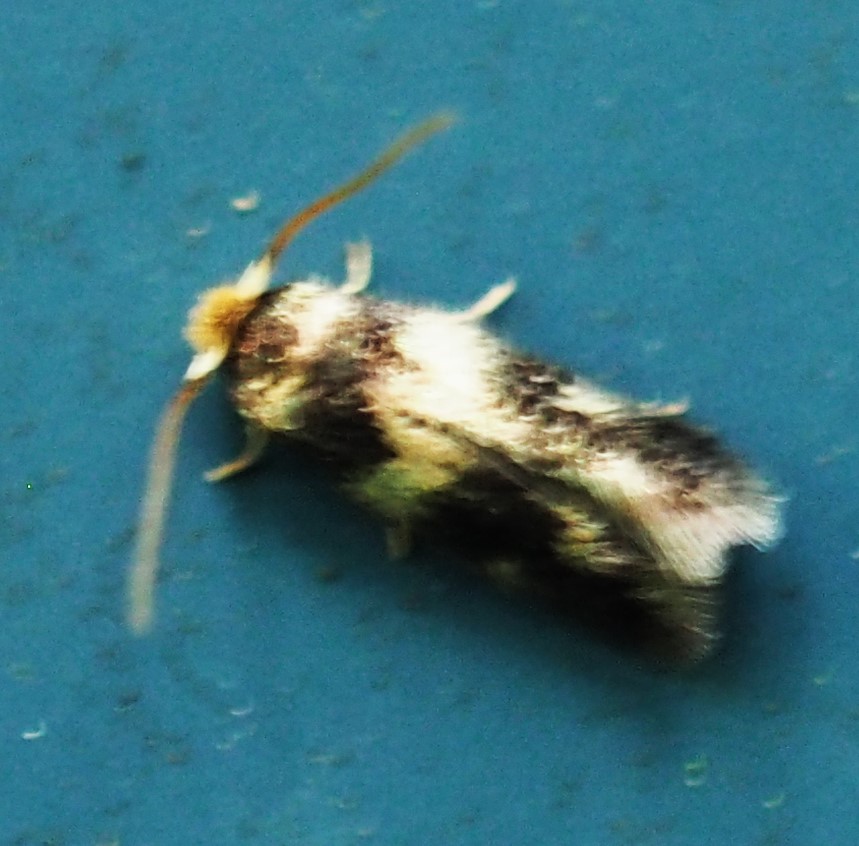
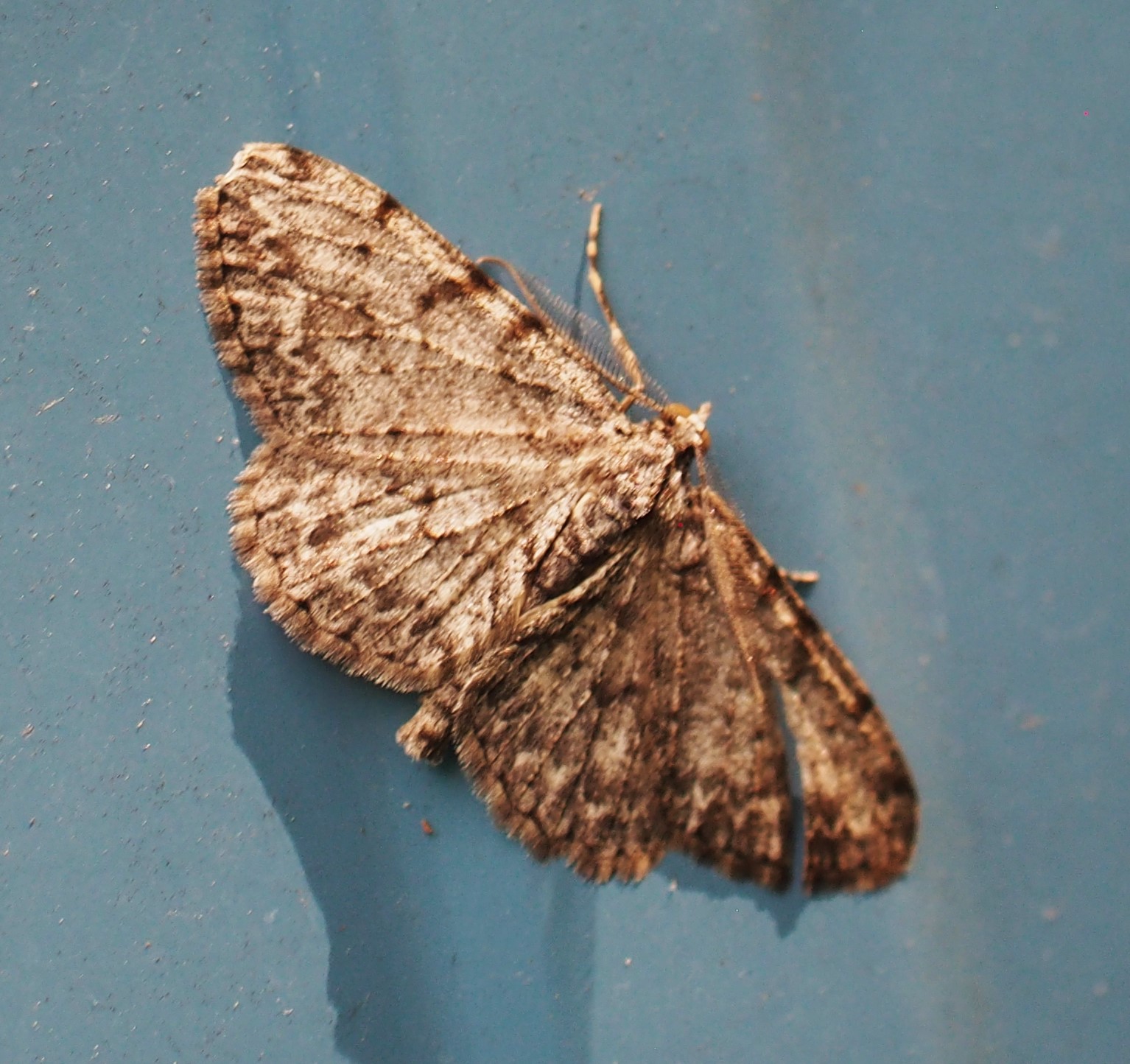
Here is the Caterpillar of the so-called Spongy Moth. Second and third are caterpillars of the Small Phigelia Moth. That last picture shows you how much damage this caterpillar can do in a day.

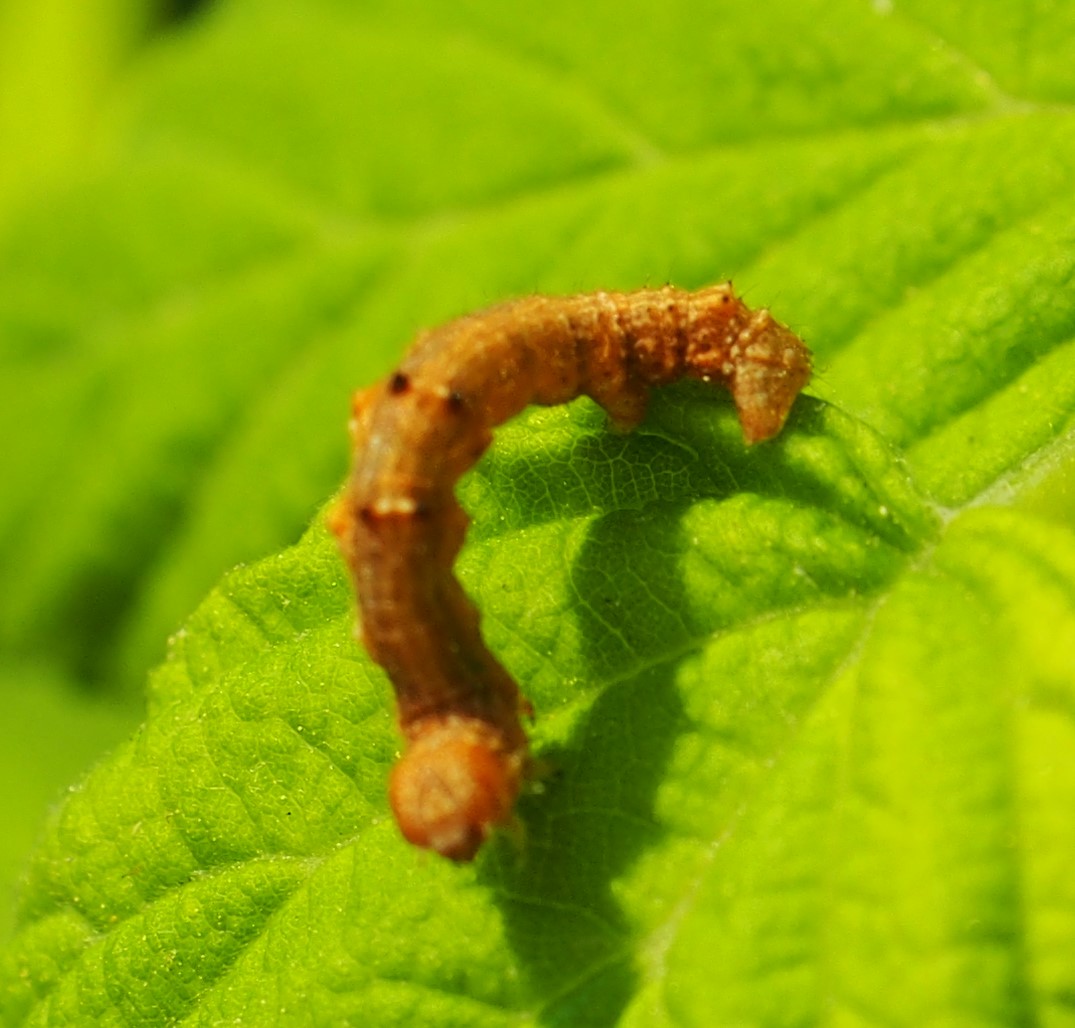
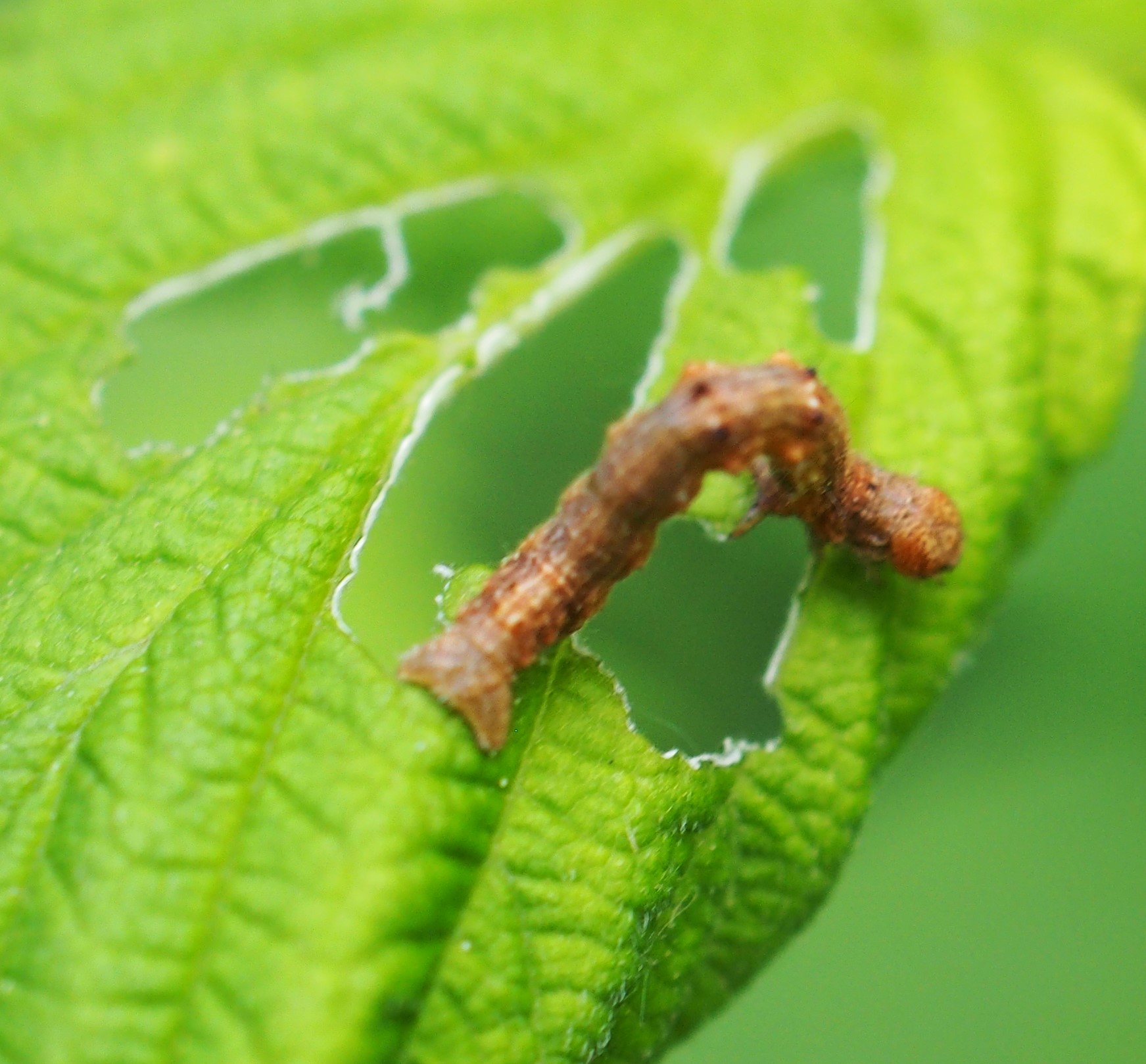
This is the Zabulon Skipper. I've never seen it look so gorgeous!
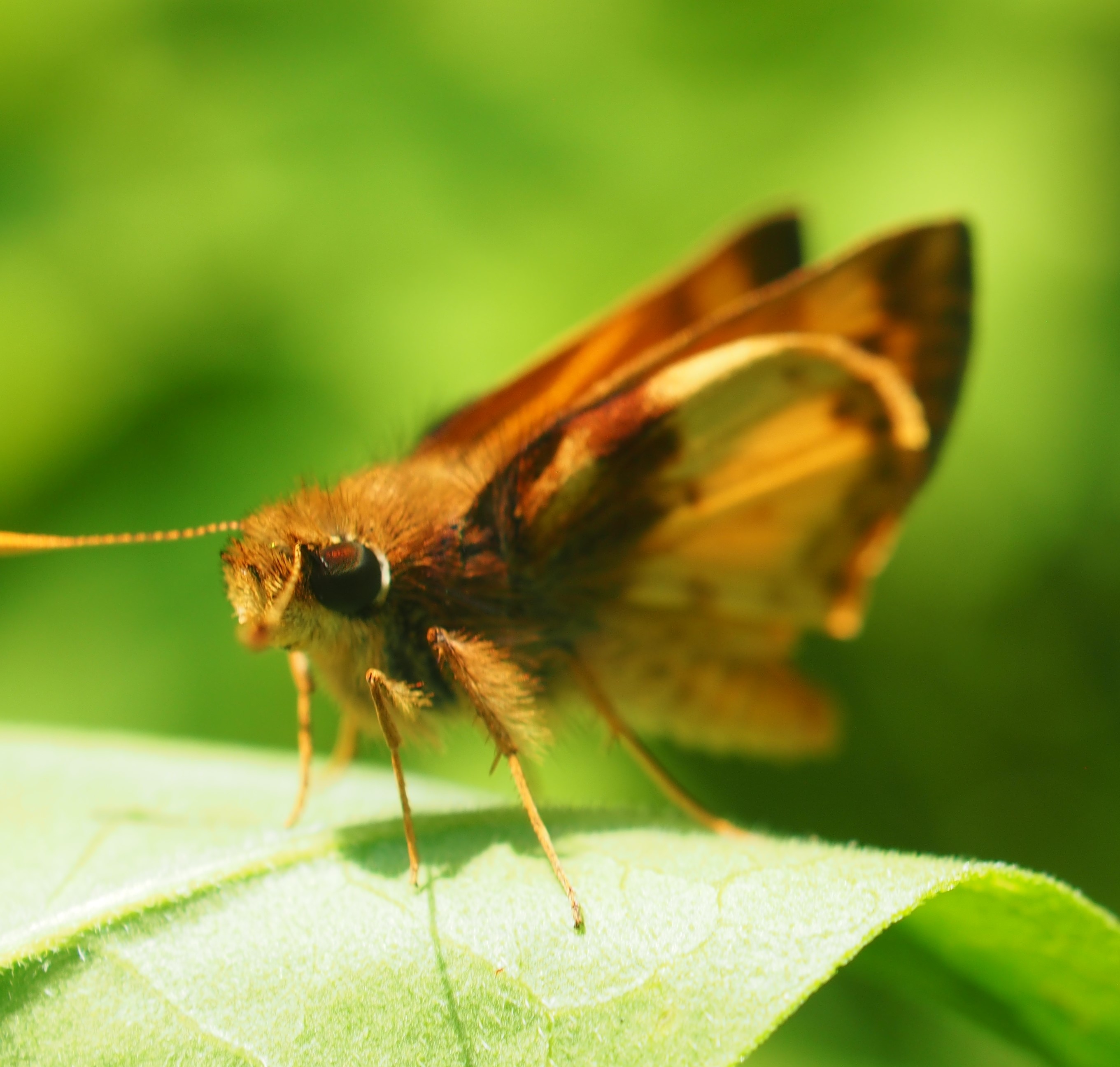
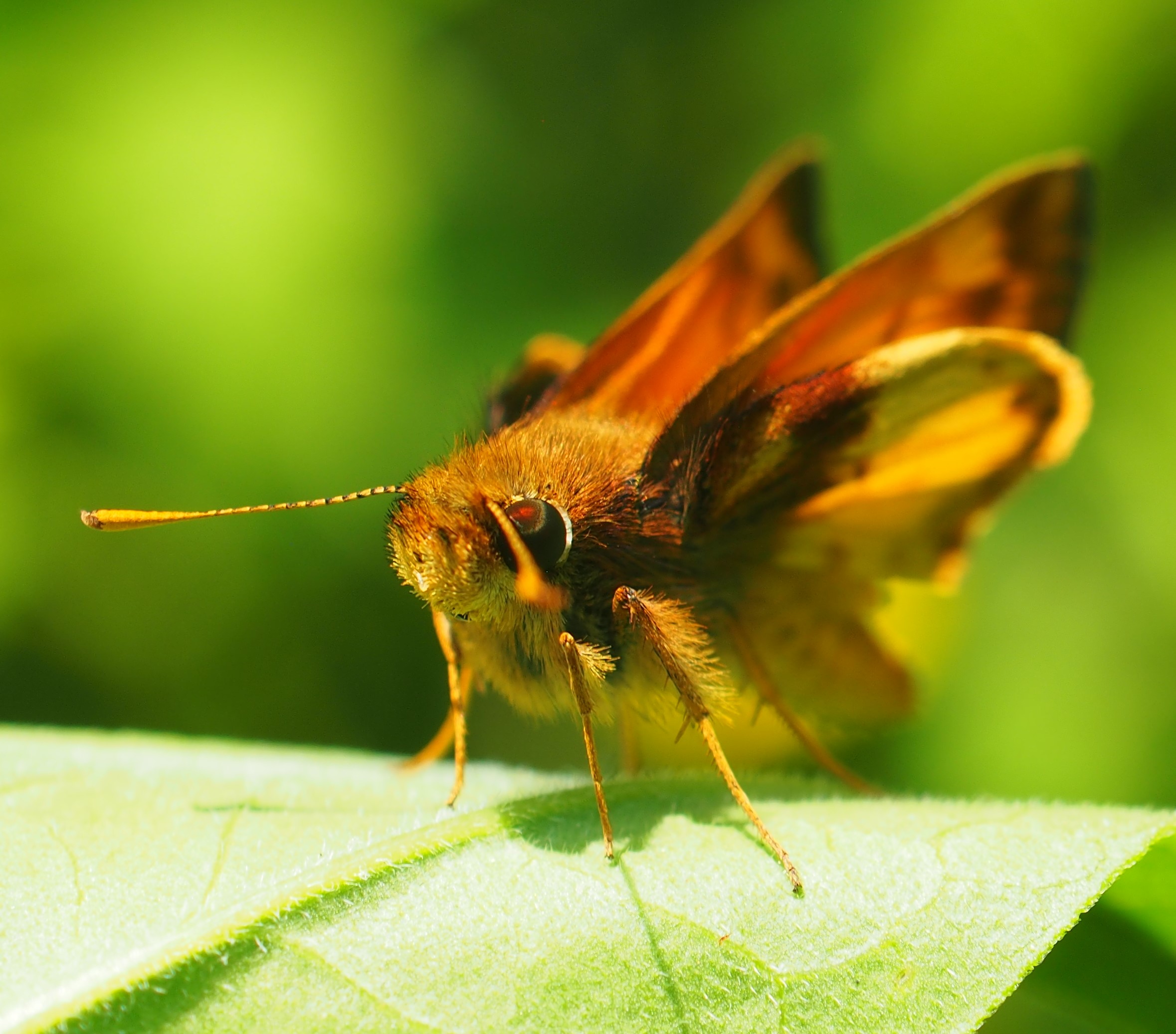

Maybe just a short Flower Walk? There are a few Plants I haven't mentioned before. First and second show the Baptisia, which will make the most lovely blue flower chains soon now. Third: you've seen lots of Black Raspberry flowers, but the Blackberries have just begun to bud.
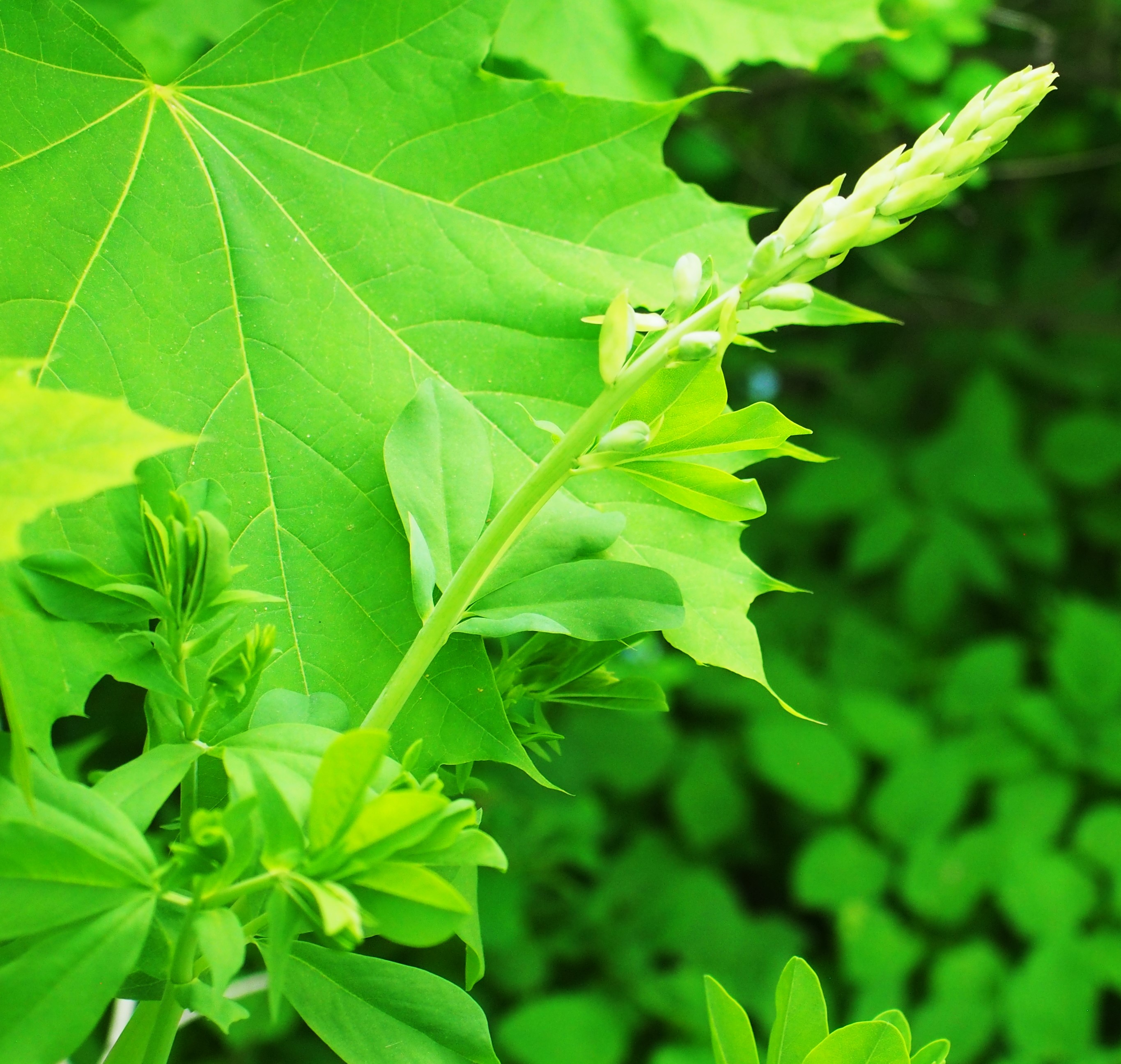
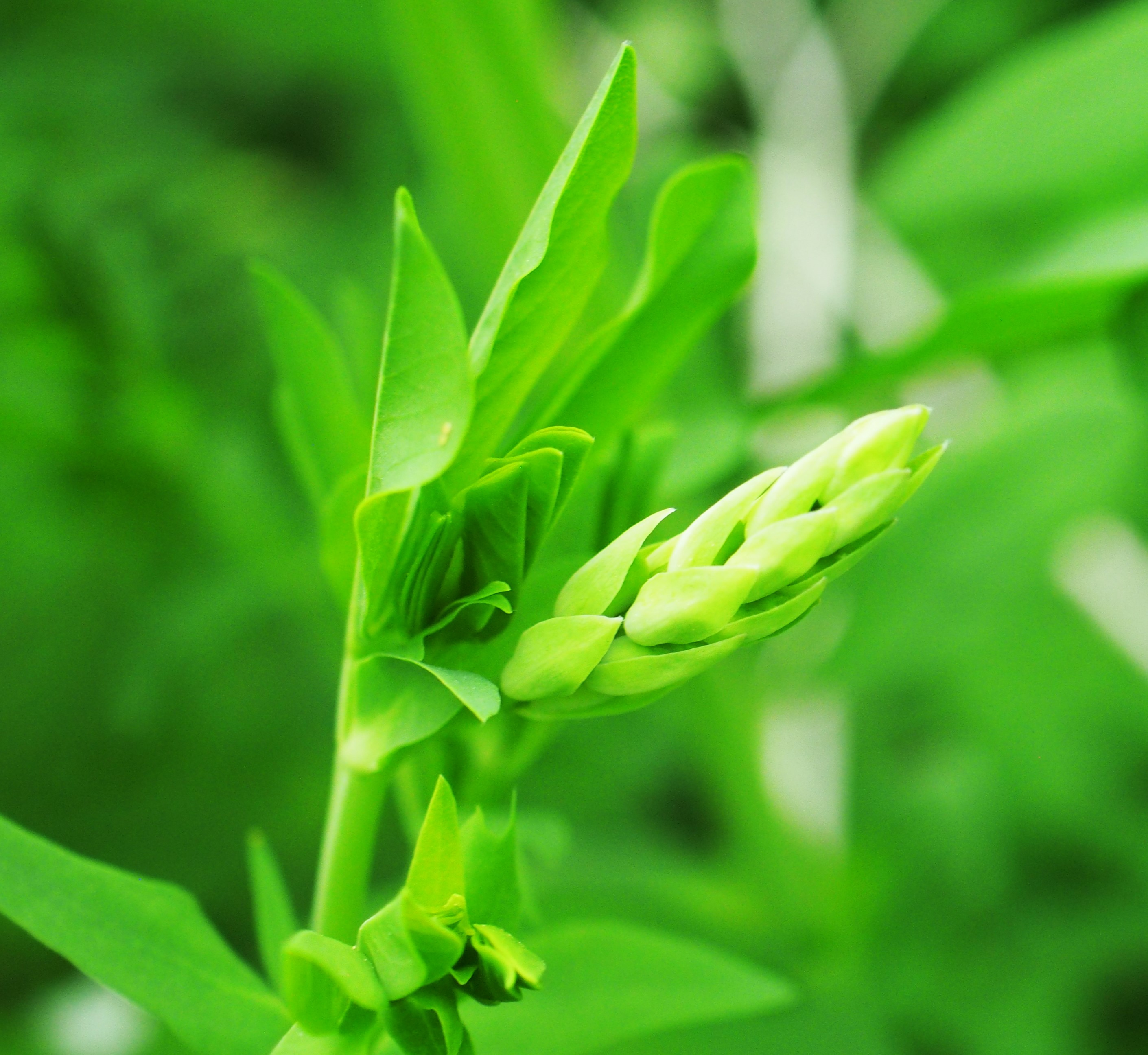
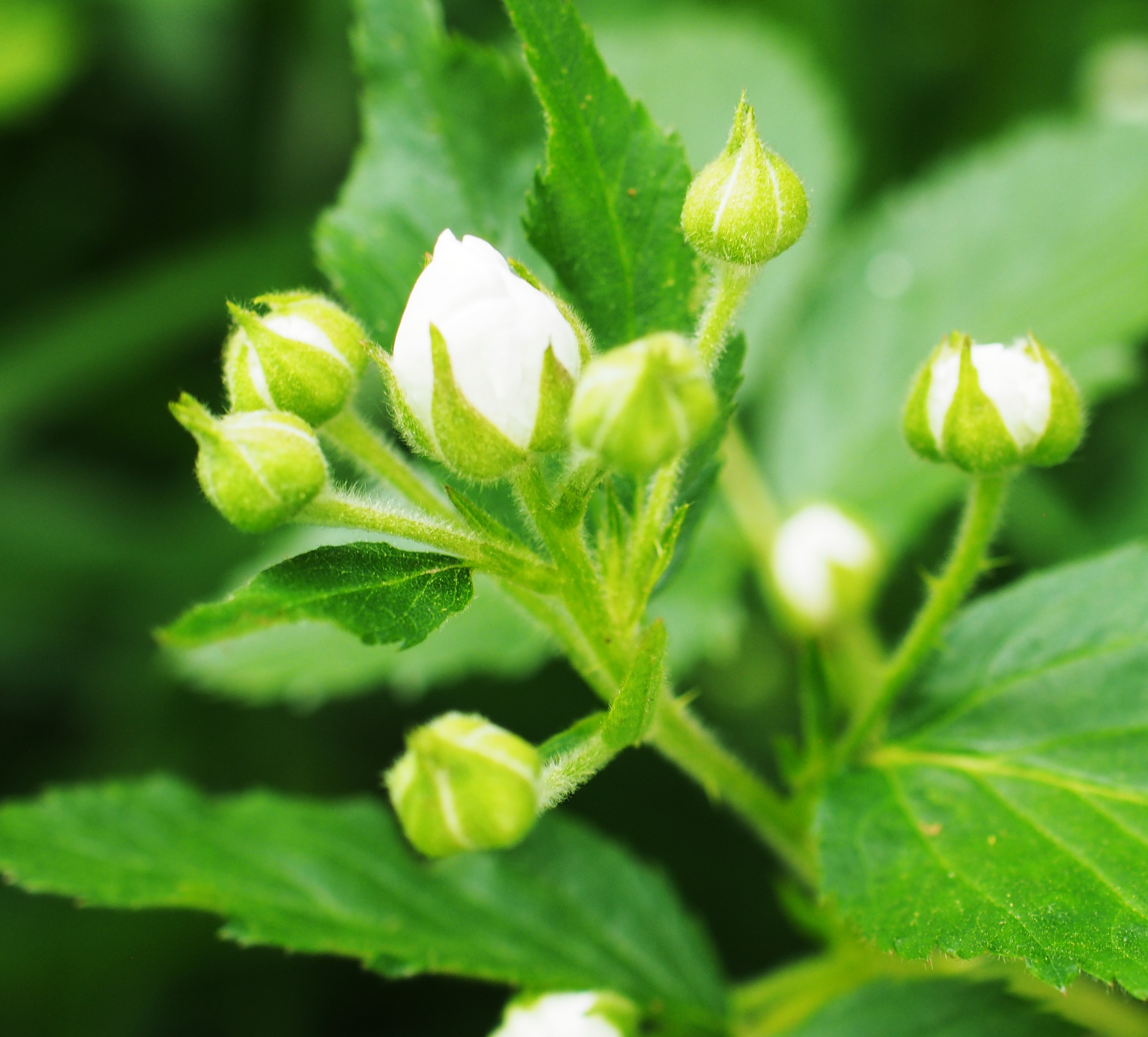
Near the Blackberries is a big surprise: the Canadian Columbine is blooming. I haven't seen it for years! Here you seen it on Tuesday, Friday, and Saturday! I just love this plant.
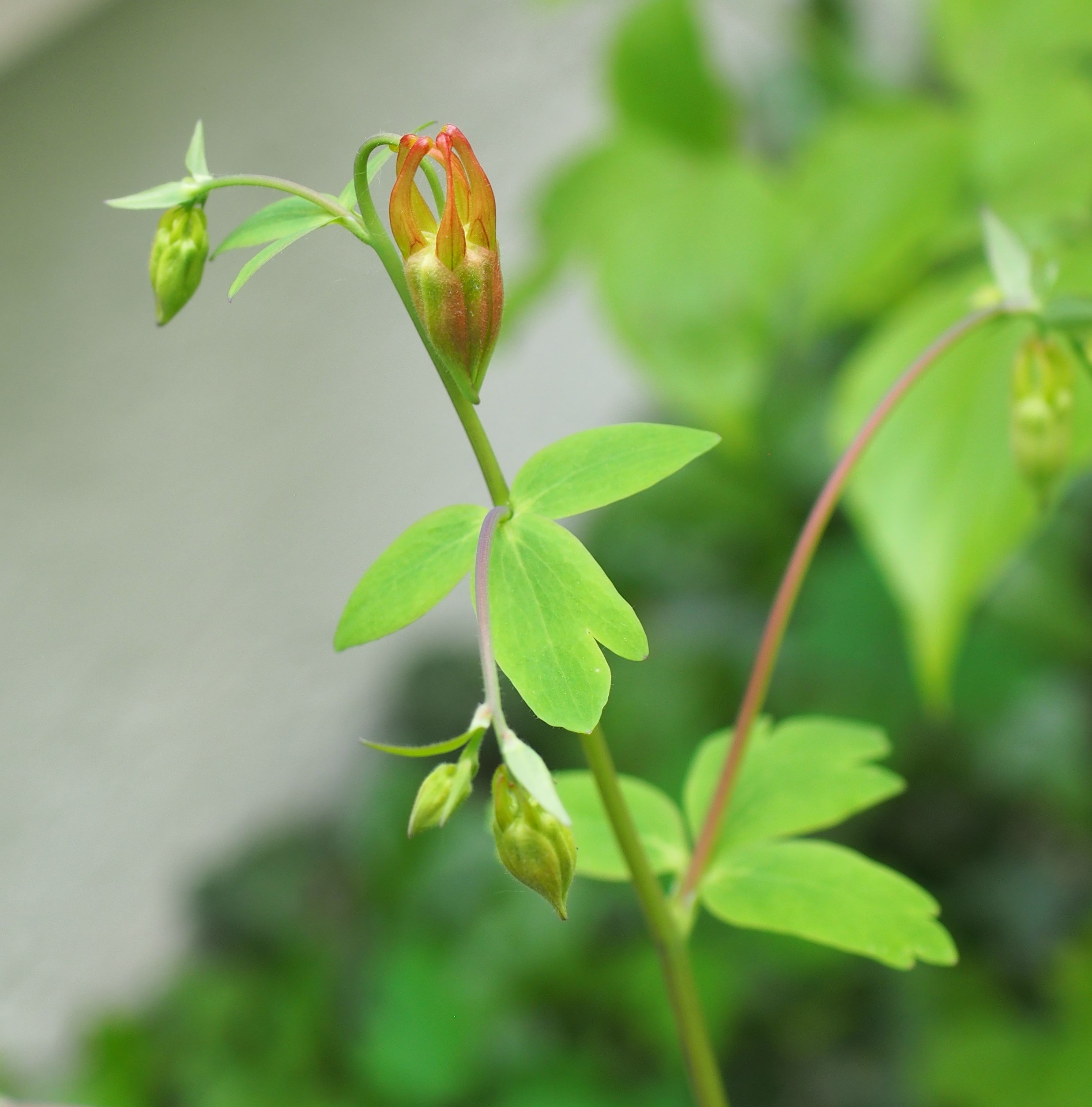
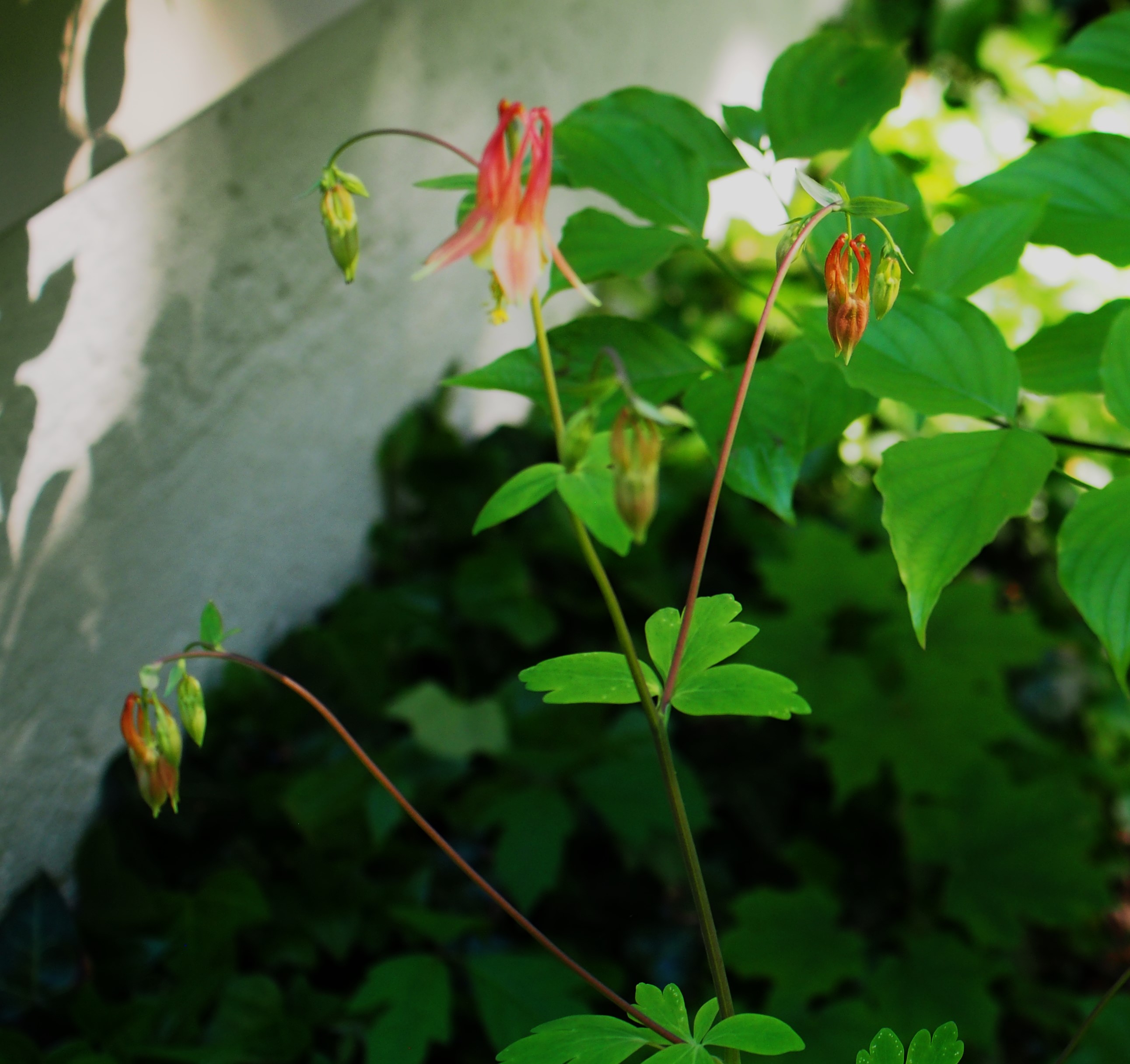
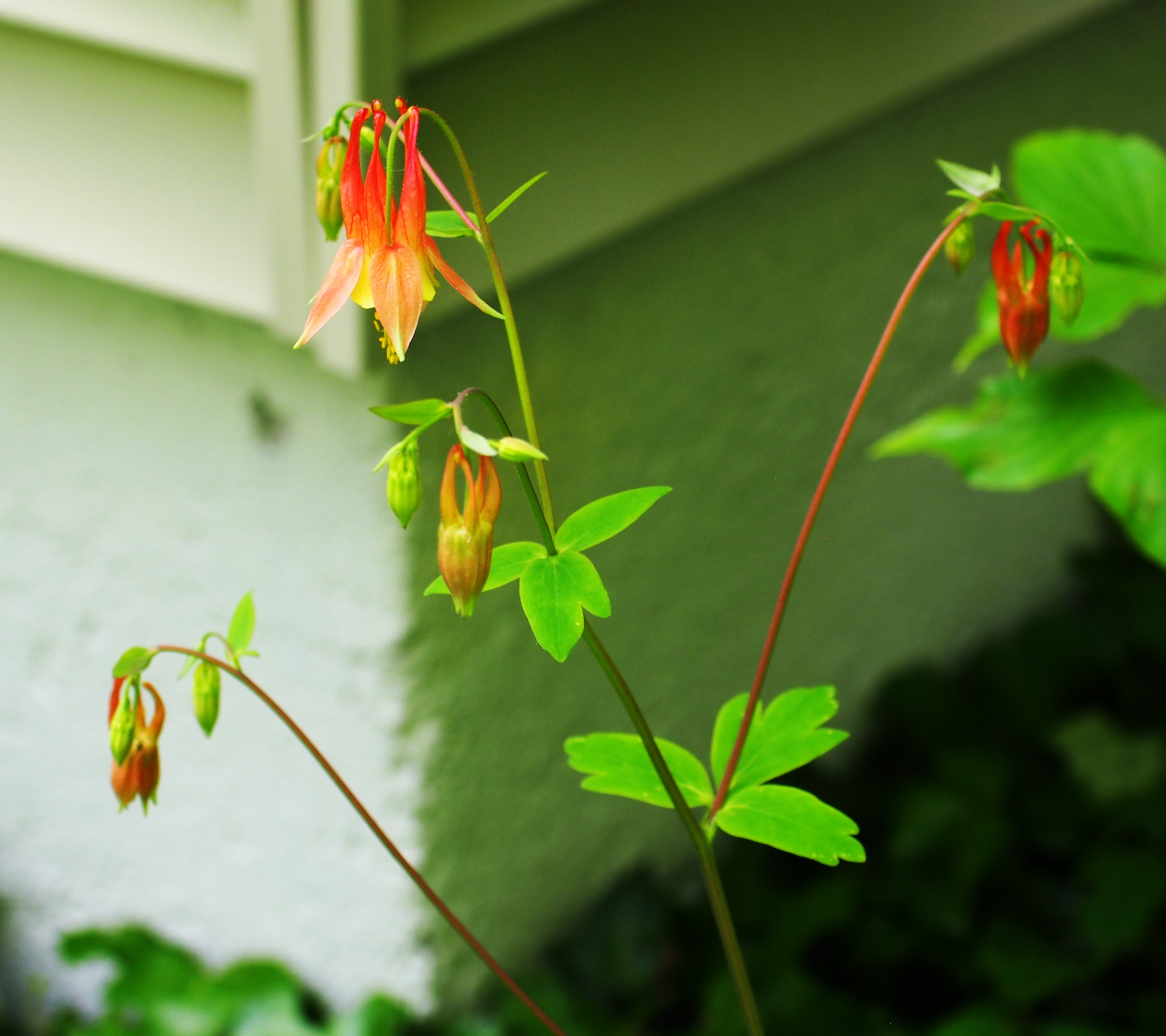
The Lily-of-the-Valley is abloom underfoot. Step on it, it won't mind. I won't either. The Money Plant is still going, but less fervently. And here is my first Spiderwort flower!
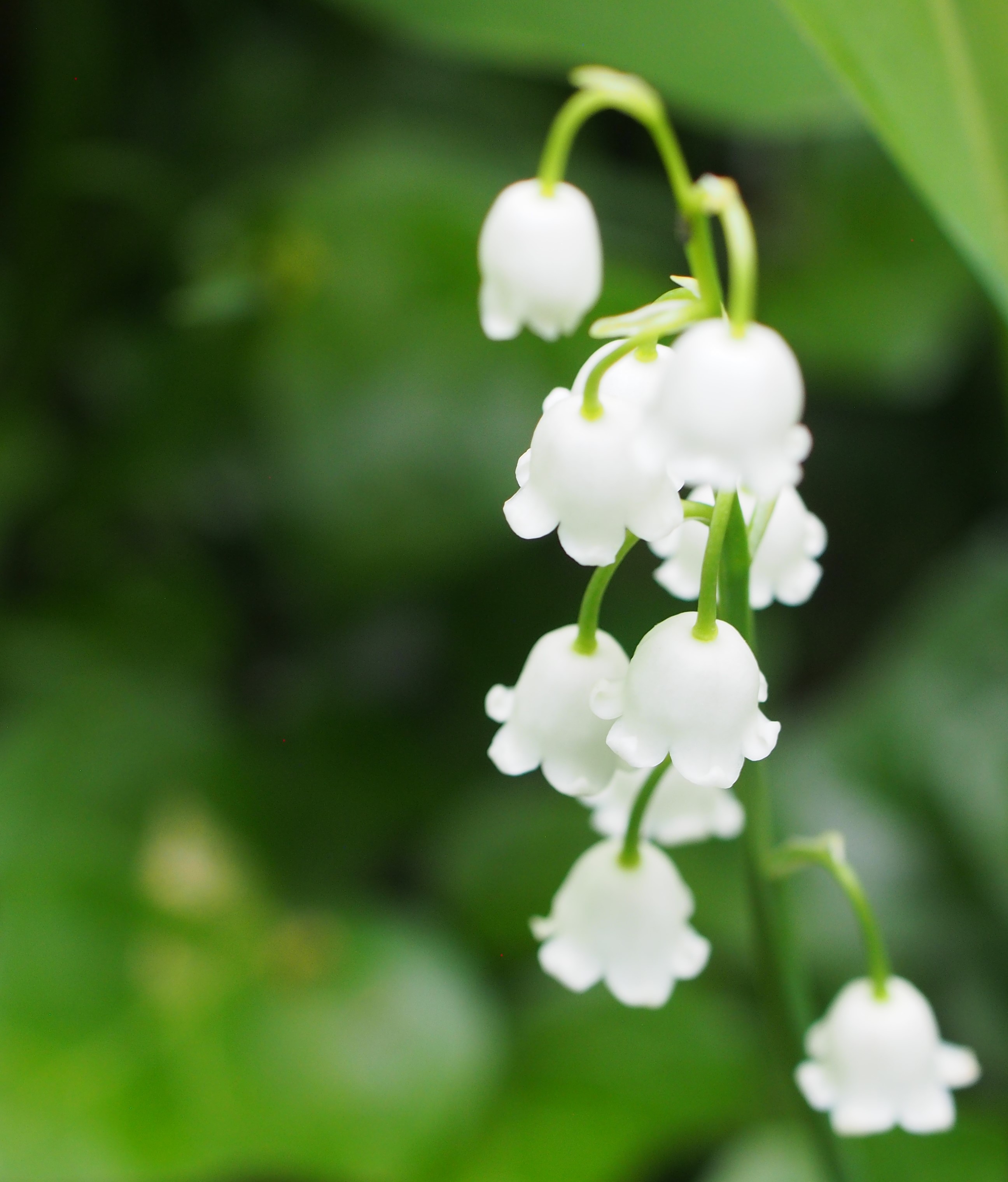
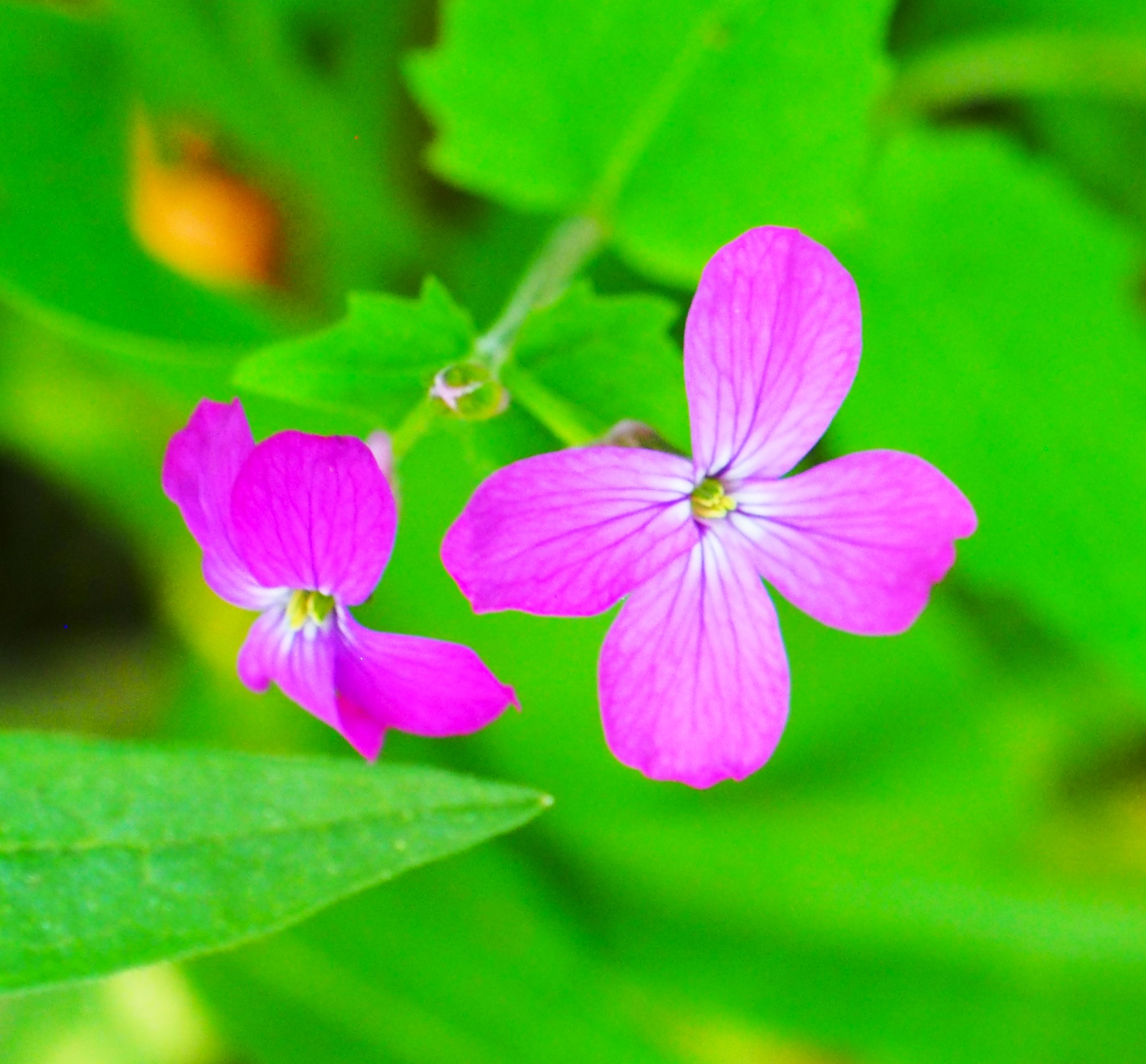
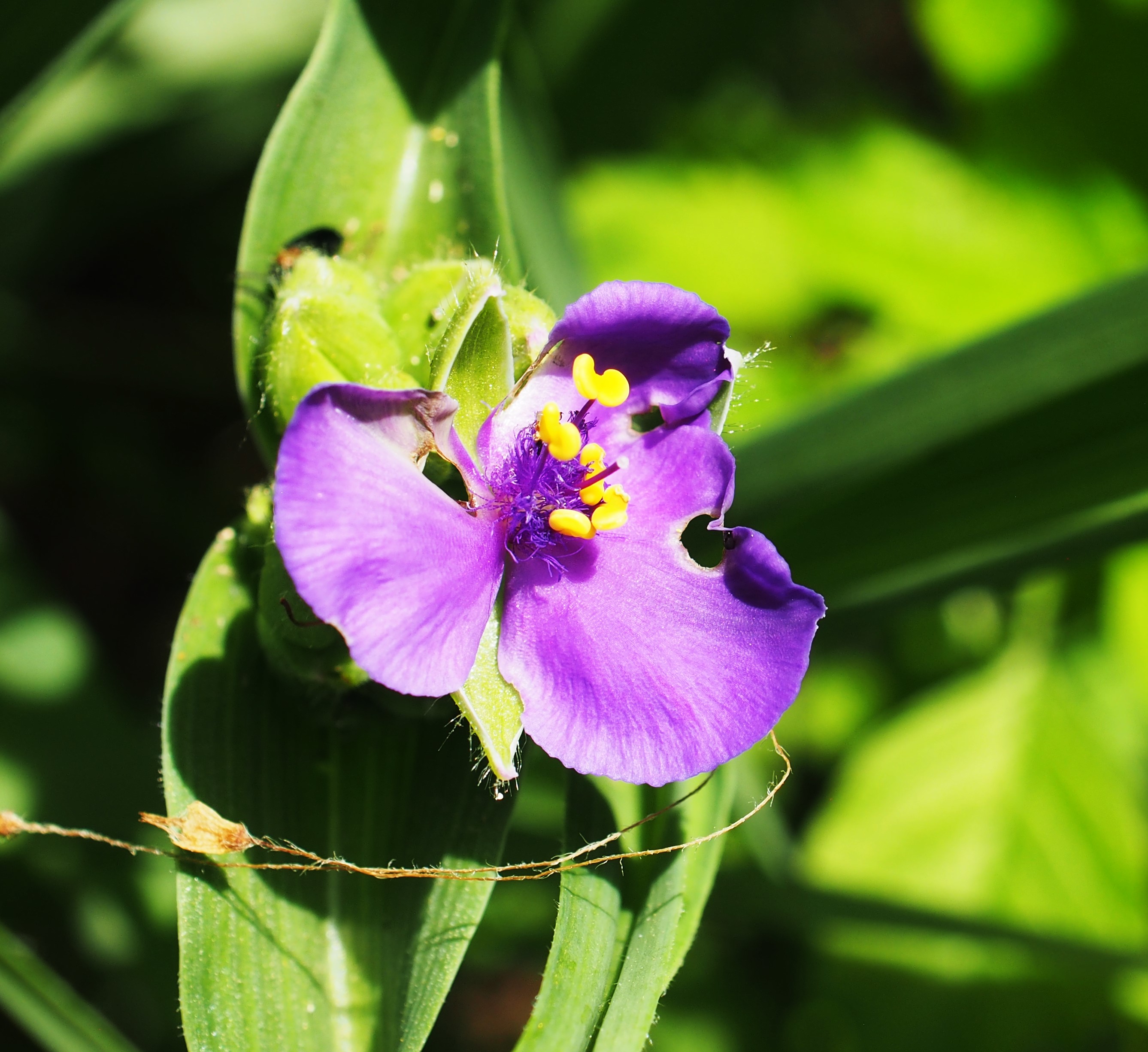
Here are a few of the wonderful pictures my friends and neighbors take. First is Kathleen Seidl's gorgeous Iris, and then her first Clematis of the season. Third is the catnip my neighbor Deb planted but carefully caged in. I do hope Spooky got a little of that intoxicating stuff! And that she will come home if she remembers where home is!



So let's have a look at the Spiders. This week saw the end of the Humped Trashline Orbweaver's line, which formerly displayed the catch of the day. By the end of the week, no further prey were being added. Picture 1 shows the state of affairs on May 21 (our Spider is at the top of the line), while picture 2 shows what I saw on May 23, and I think Spidey is missing.
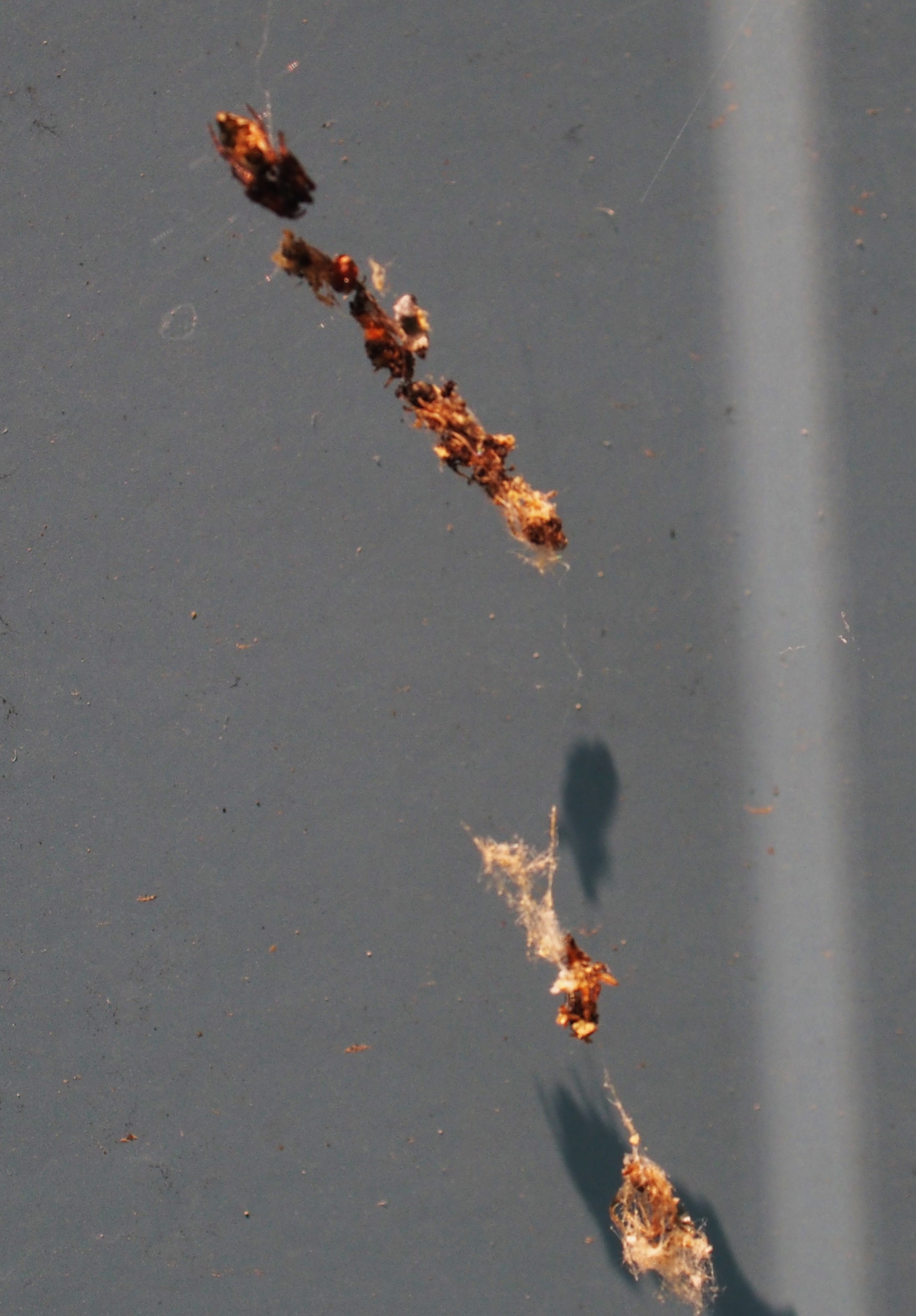

Next we see a (probably Long-palped) Ant-mimic Sac Spider.
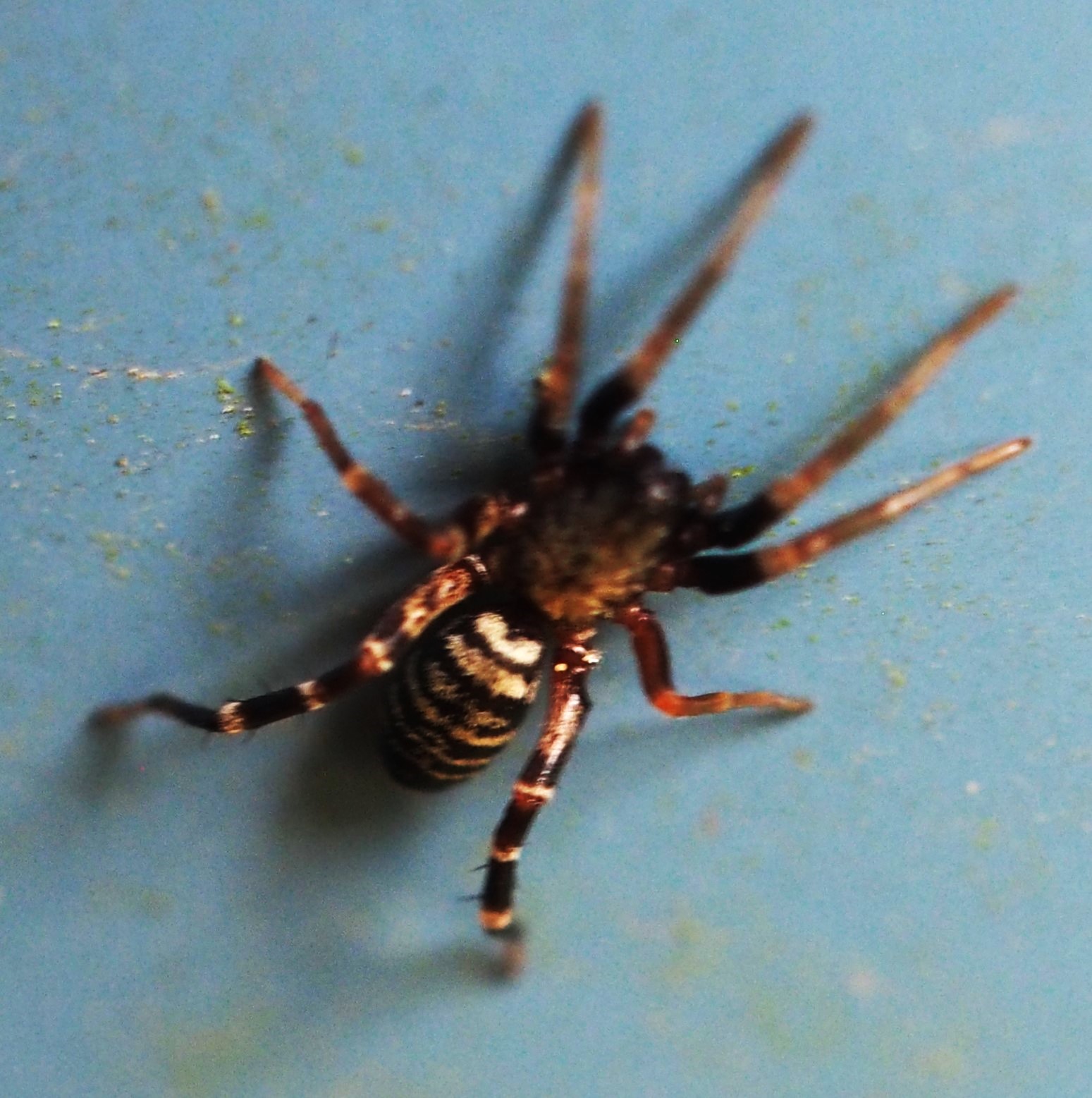
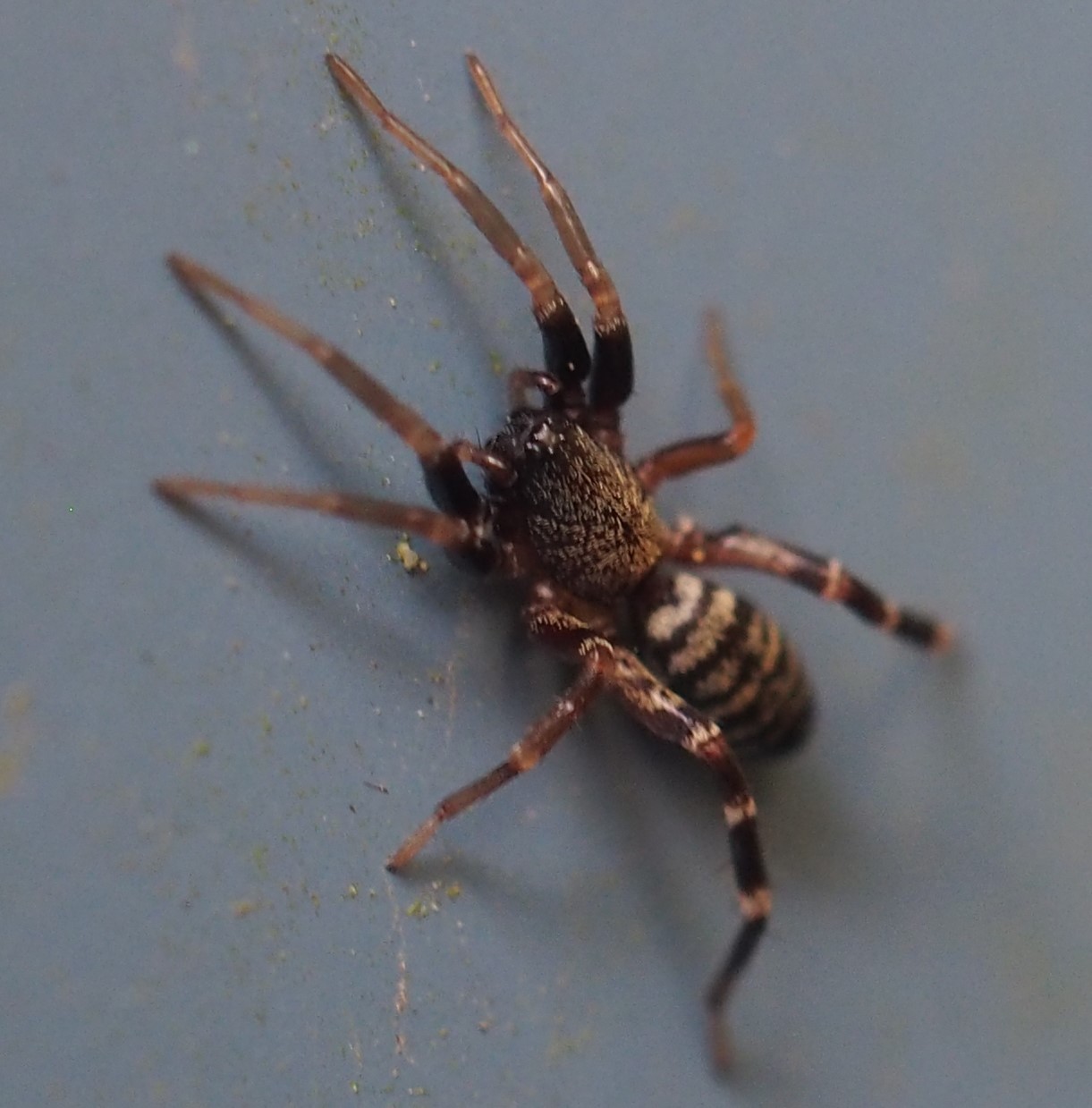
This one is new to me: it's called the Hammer-jawed Jumping Spider.
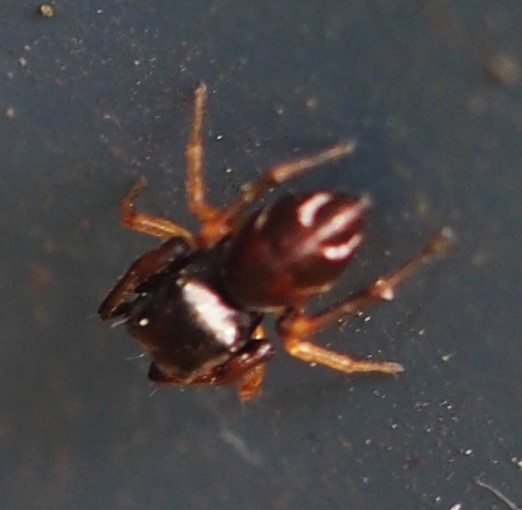

The Jumping Spiders were out there this week. One that I think of as "family" because it is so frequently seen in this yard, especially on the Wall, is the "Flea Jumping Spider", Naphrys pulex. The juveniles (right picture) are particularly hard to identify for sure, but since they are so frequently seen, I'm usually fairly certain that's who they are.
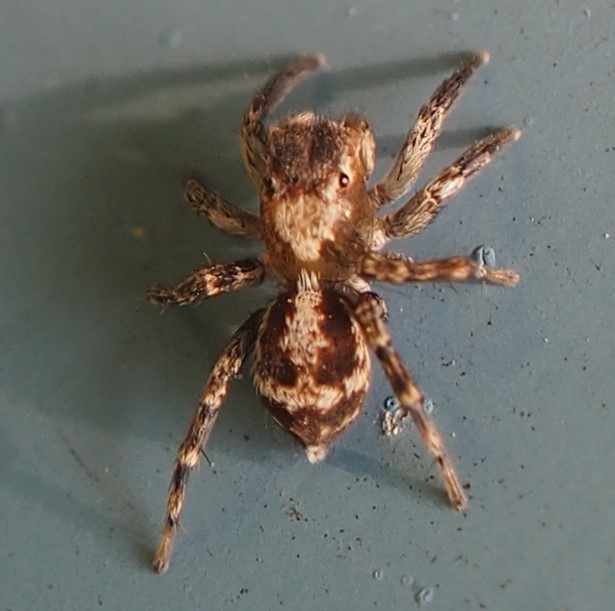
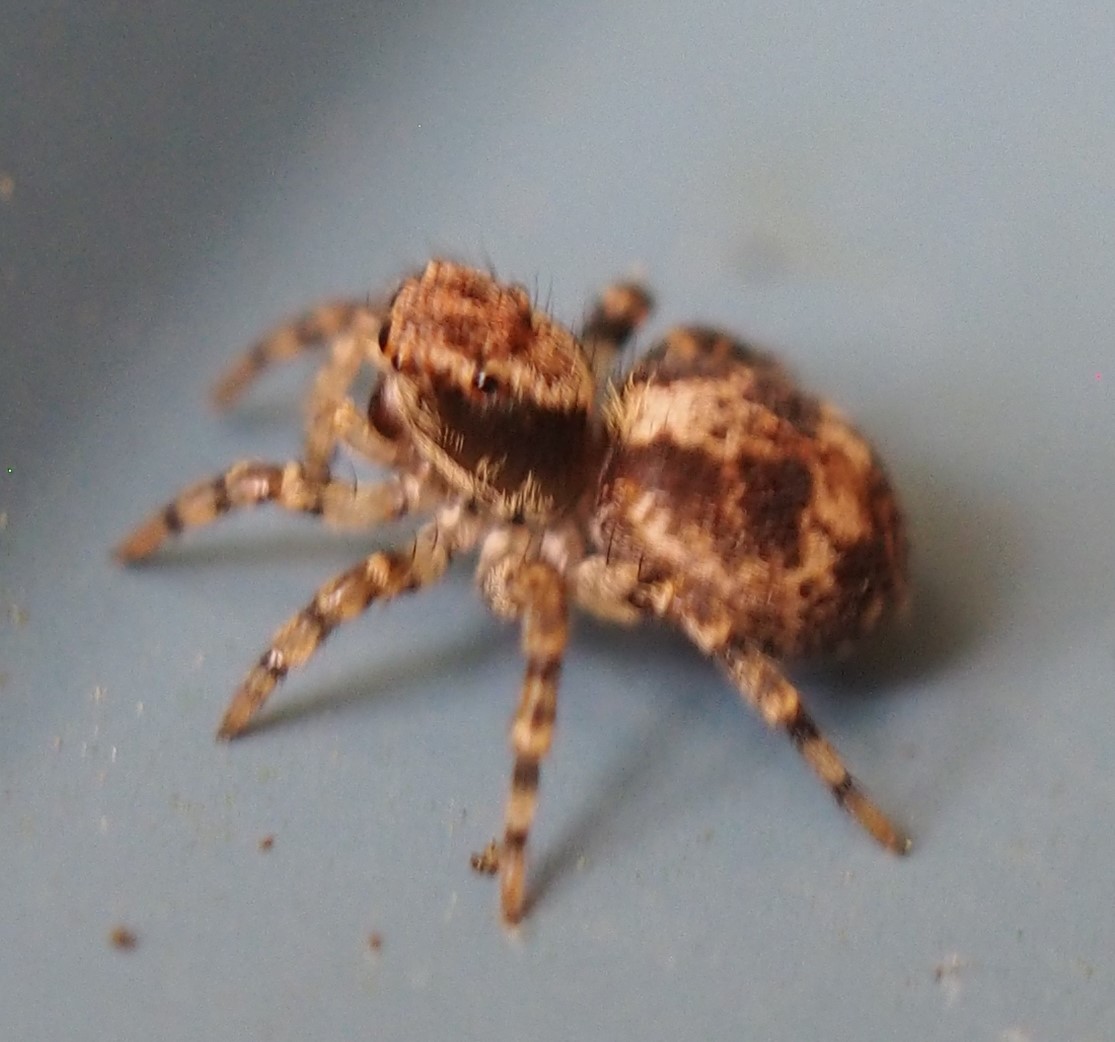
I hadn't seen any of the many forms the Dimorphic Jumping Spiders take on for a couple of years at least. At first I thought the name referred to the different forms between male and female, and that there weren't very many different forms in toto. But this week I thought I had spotted a new Spider, which turned out to be this species in a form I had never (or rarely) seen. Picture number 3 shows something I usually have seen earlier than this. This is a very young Orchard Orbweaver!
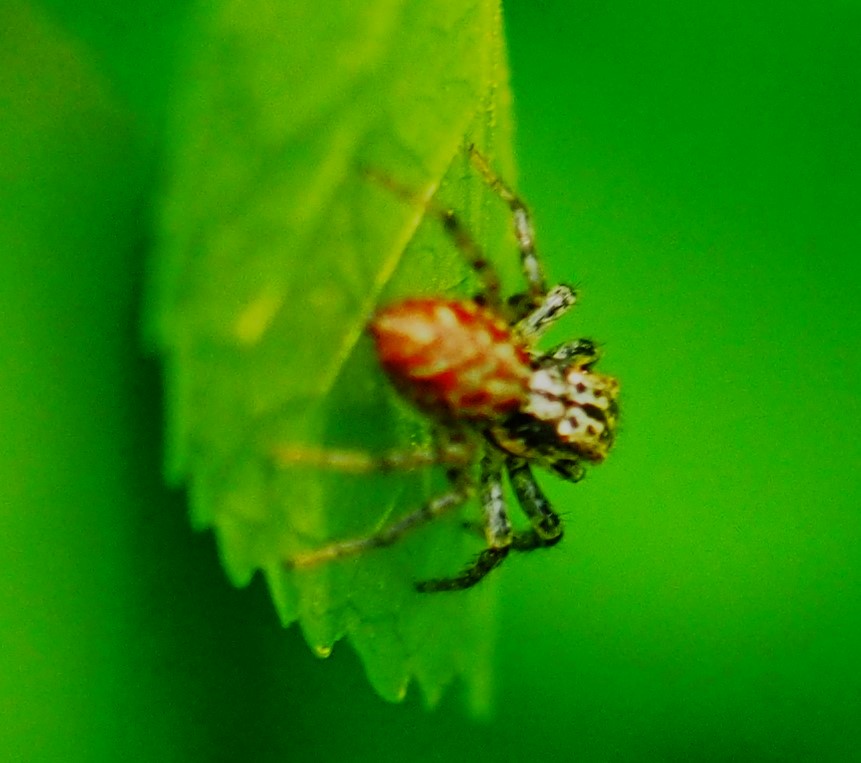
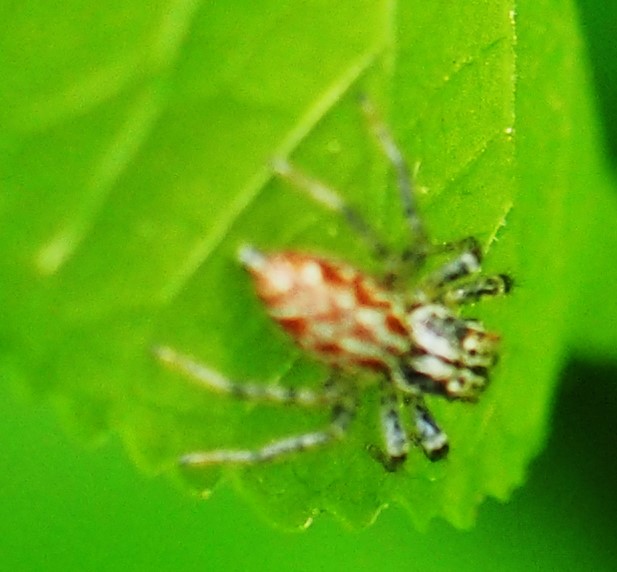
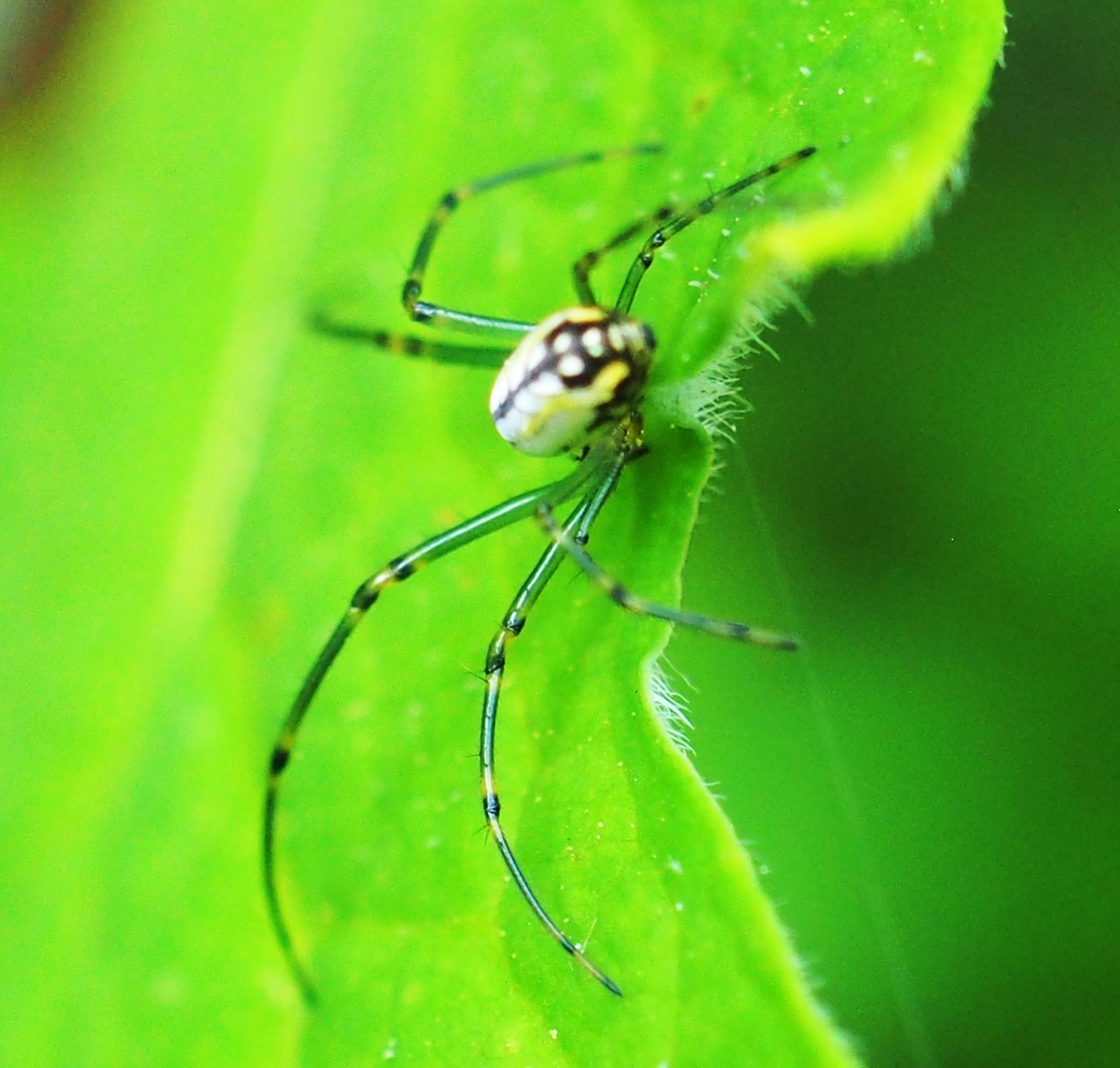
Here are some pictures that tell a story each. First is a Crab Spider of some sort with a Fly as prey. Second is a Spider with a Caterpillar as prey. Remember all the times we've seen that Cobweb Spider with a Wasp larva on it? Well, in picture 3 the larva is just huge compared to all the other sightings. It's amazing that the Spider can continue to live while the parasitic larva grows and grows. Fourth shows a Spider that I don't know waiting for
something bigger than the Mirid nymph it could easily have caught.
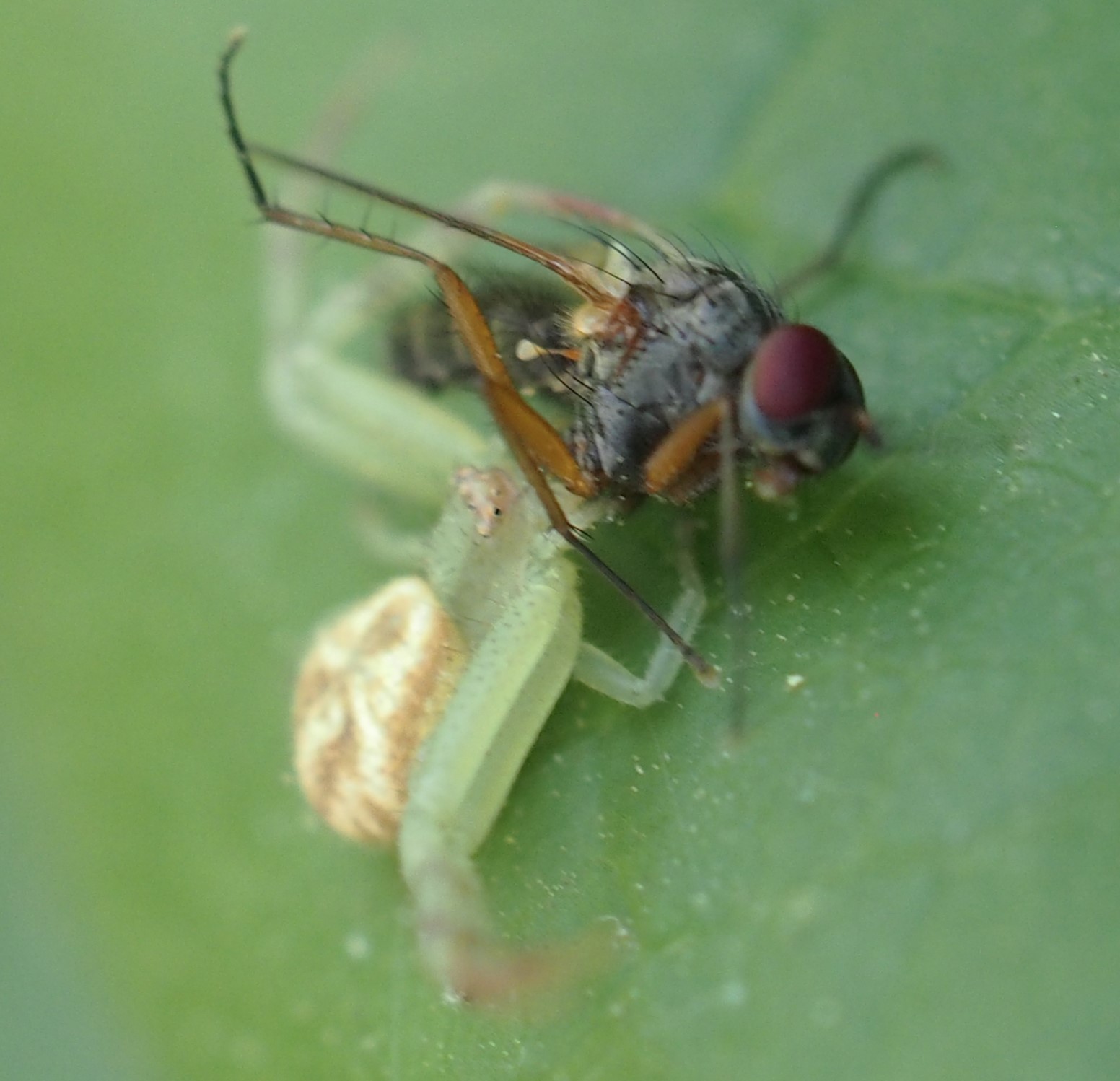
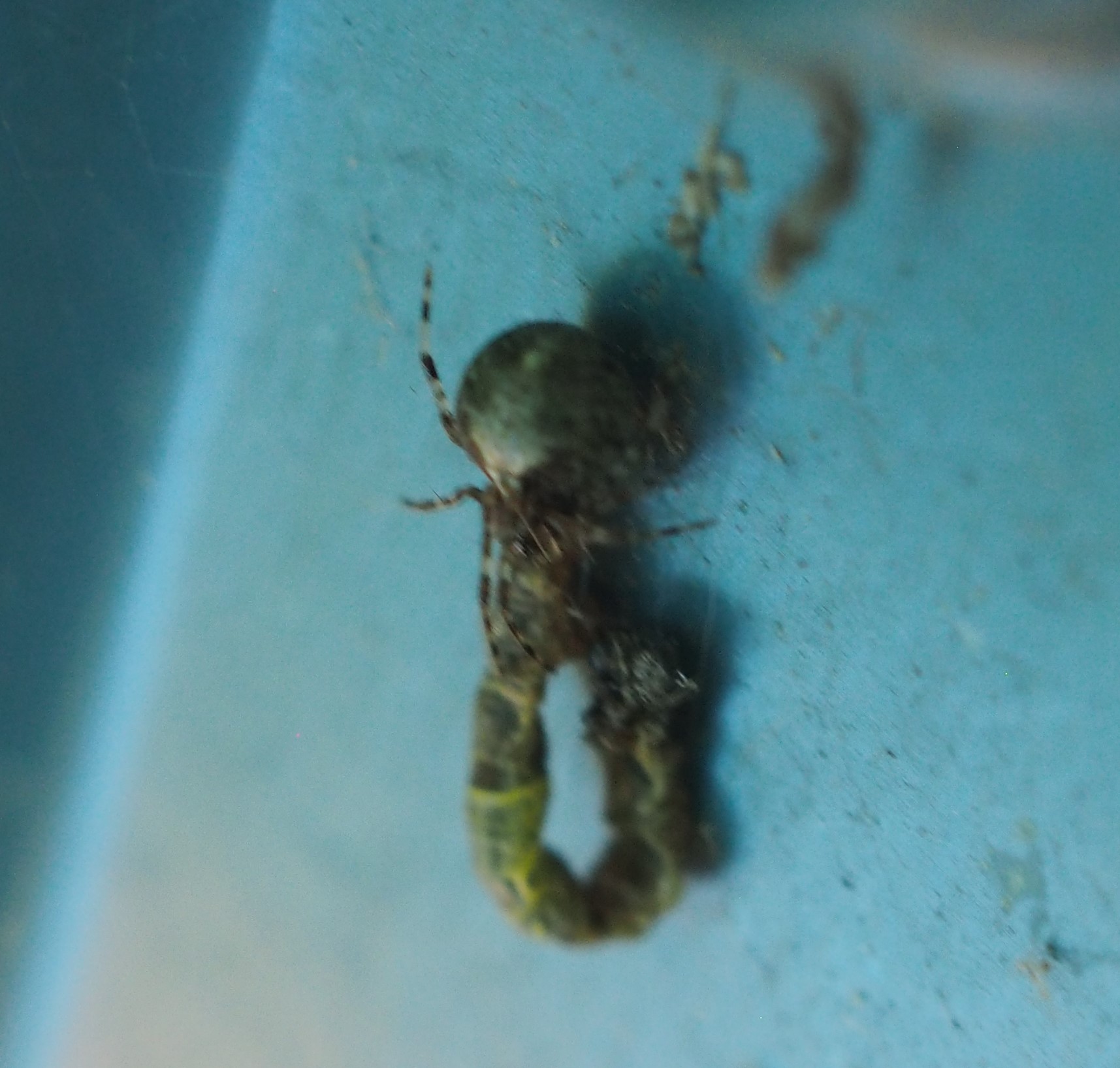
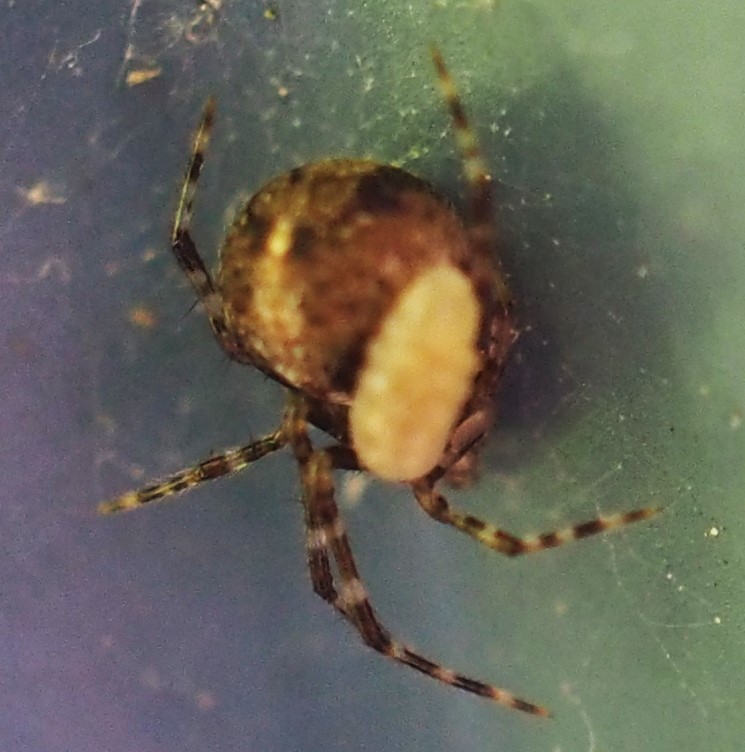
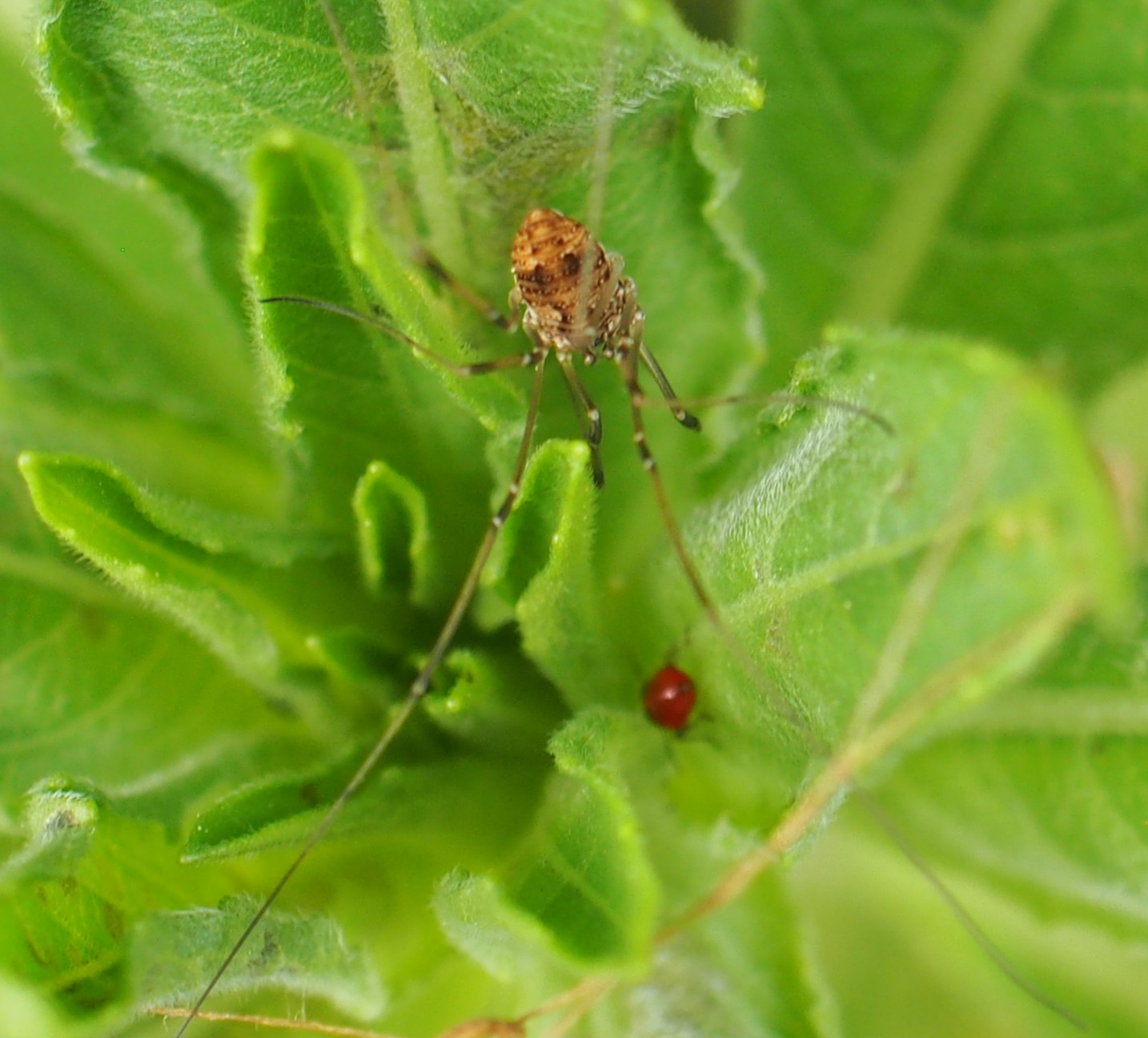
Some surprises: First is a tiny golden Globular Springtail. Second, here is a little Keeled Treehopper - it is unlikely I'll have a colony this summer as I haven't located any young Thistles. I think I need to try to locate some Sunflowers, which also form hosts for the Treehoppers.
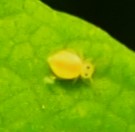
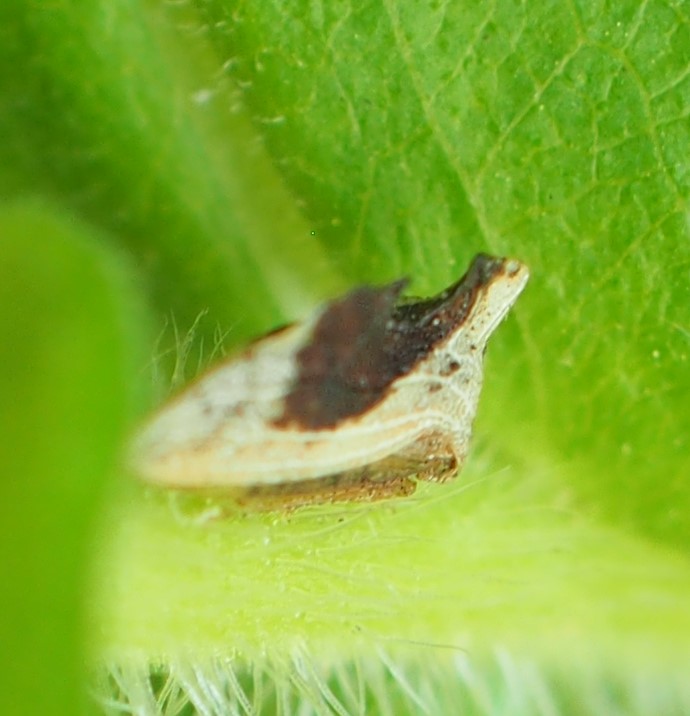
Here are some of the Wasps that are easy to see are Wasps, not Flies. First is a female European Paper Wasp. Second is an Ichneumonid Wasp with a long ovipositor. The third one has a head and thorax that just look more like Wasp parts than Fly parts.
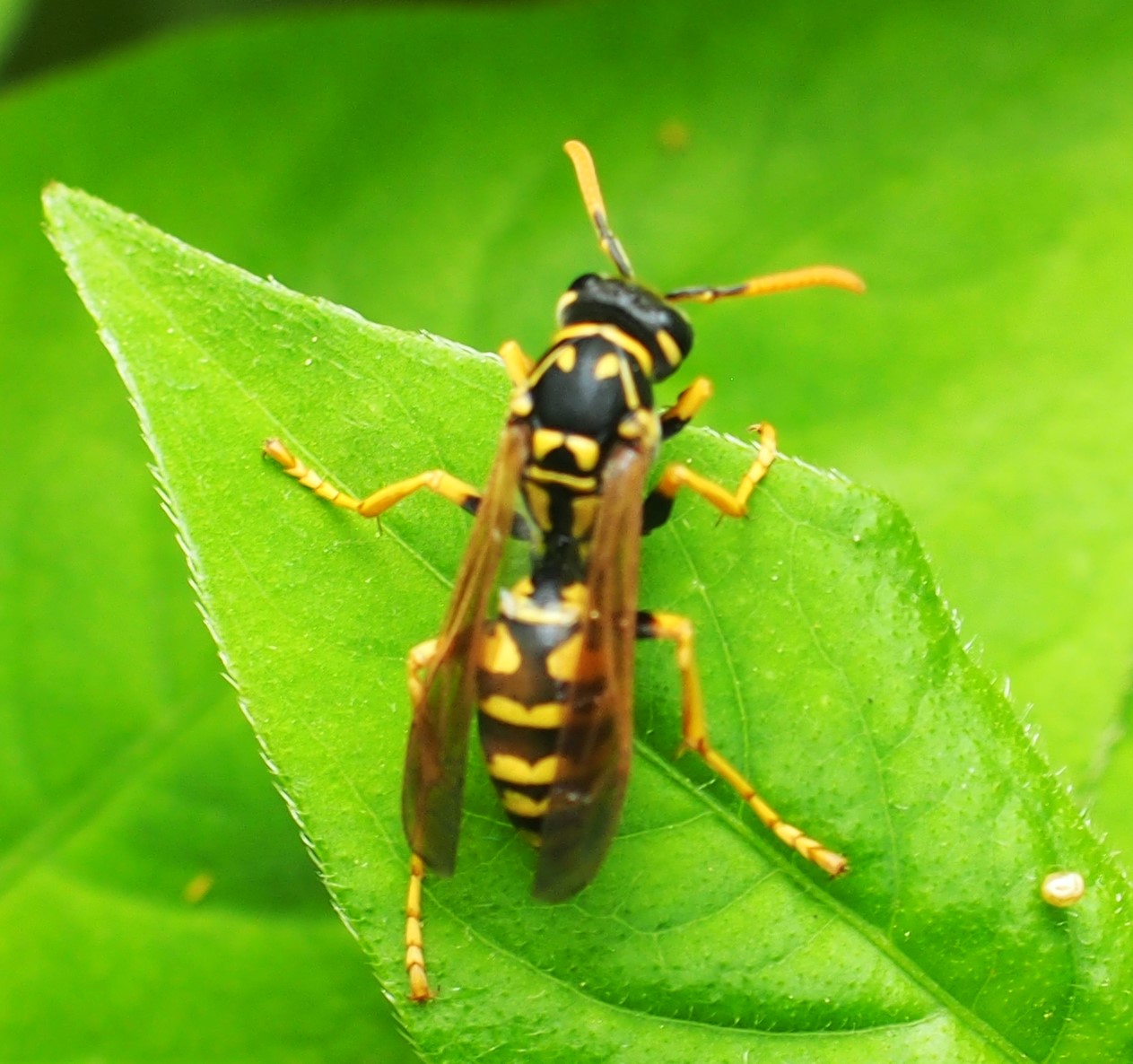
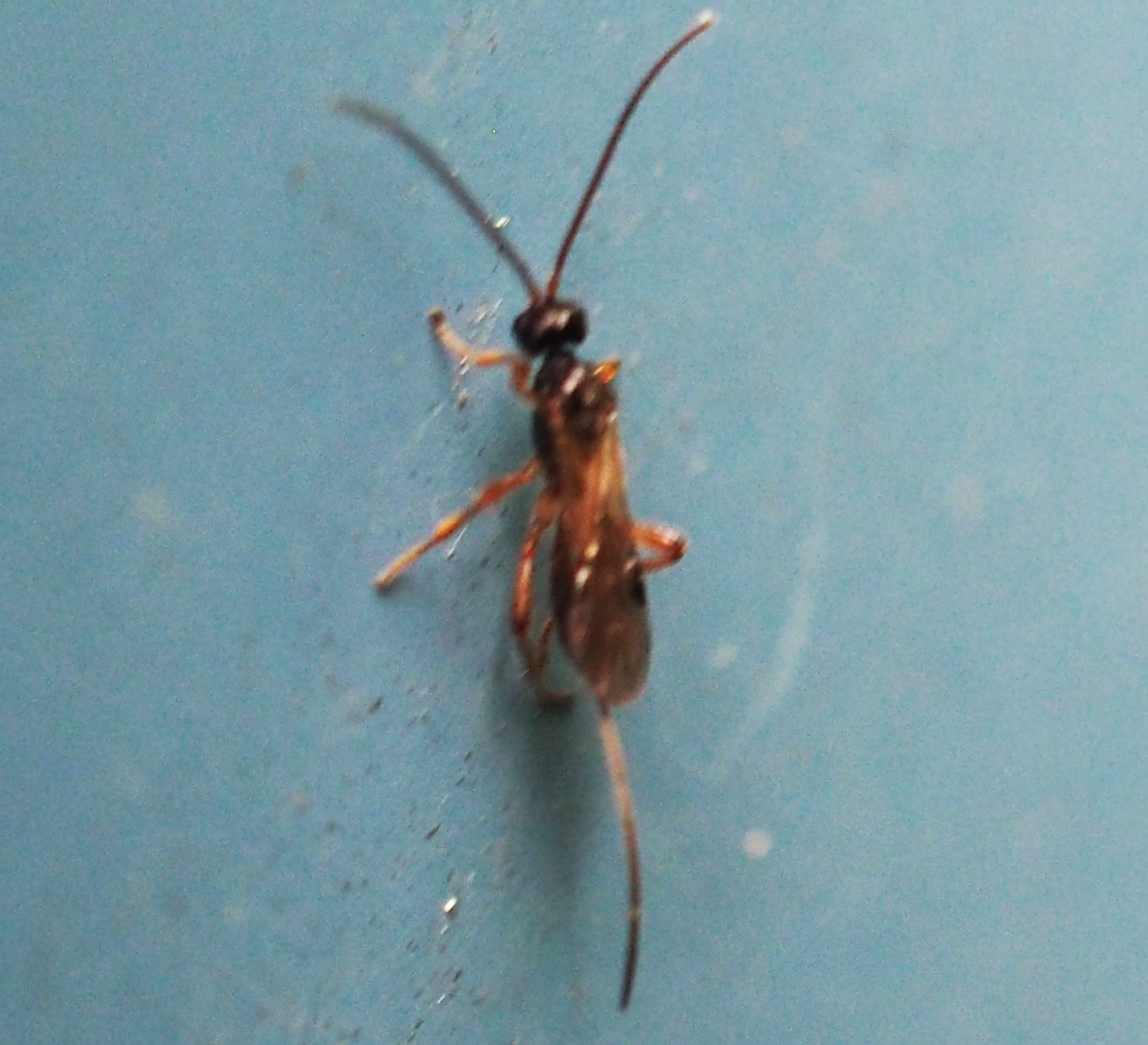
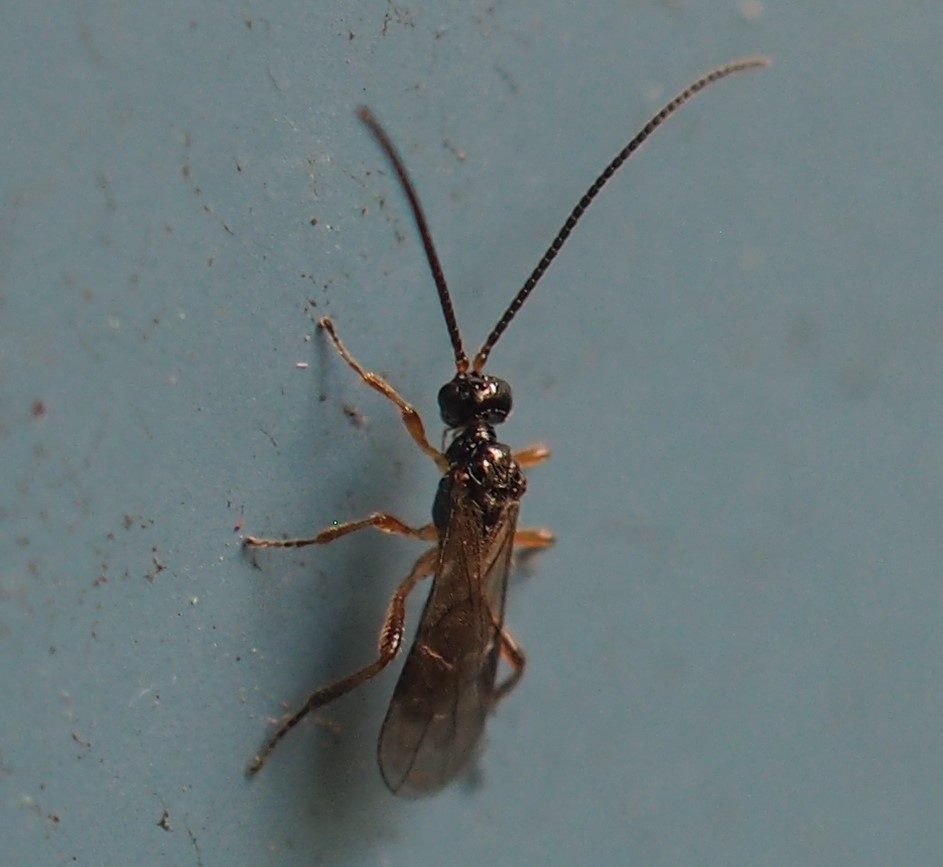
Here is a delicate little red Wasp.
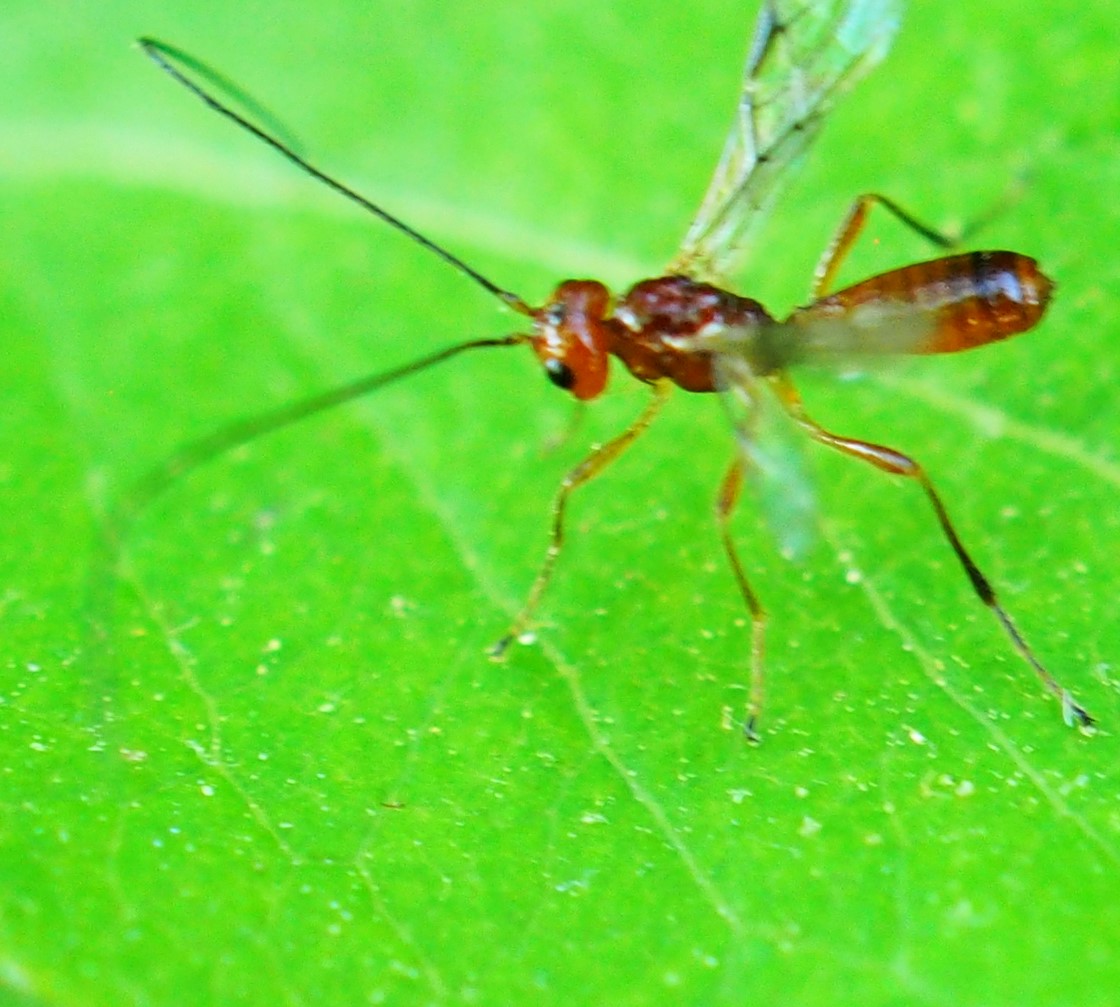
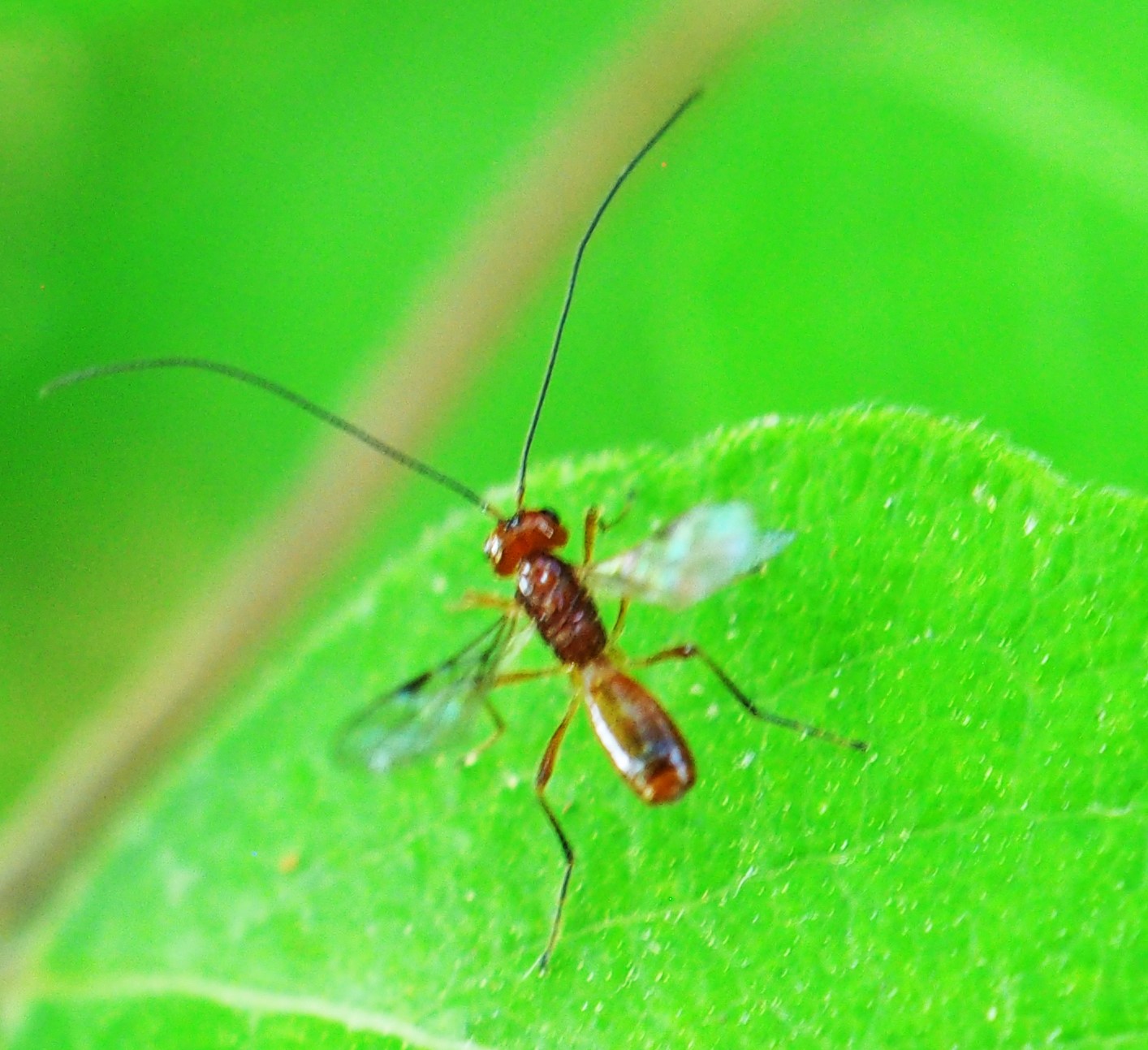
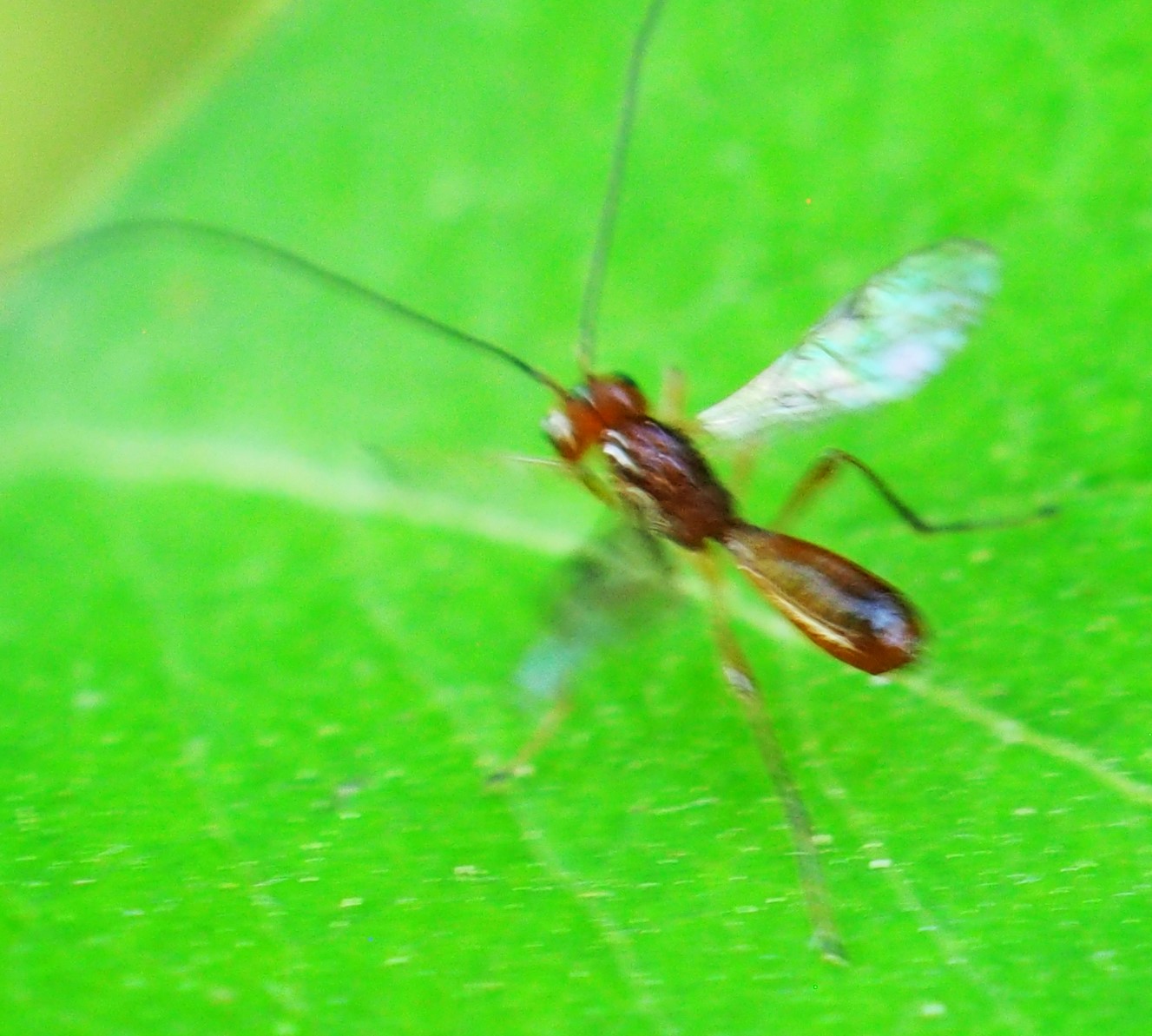
The Frogs don't seem to like the cold that begins each day, but usually if I'm patient, I'll be able to get a picture of four or five Frogs, but spread way out. Here is this week's fiver.
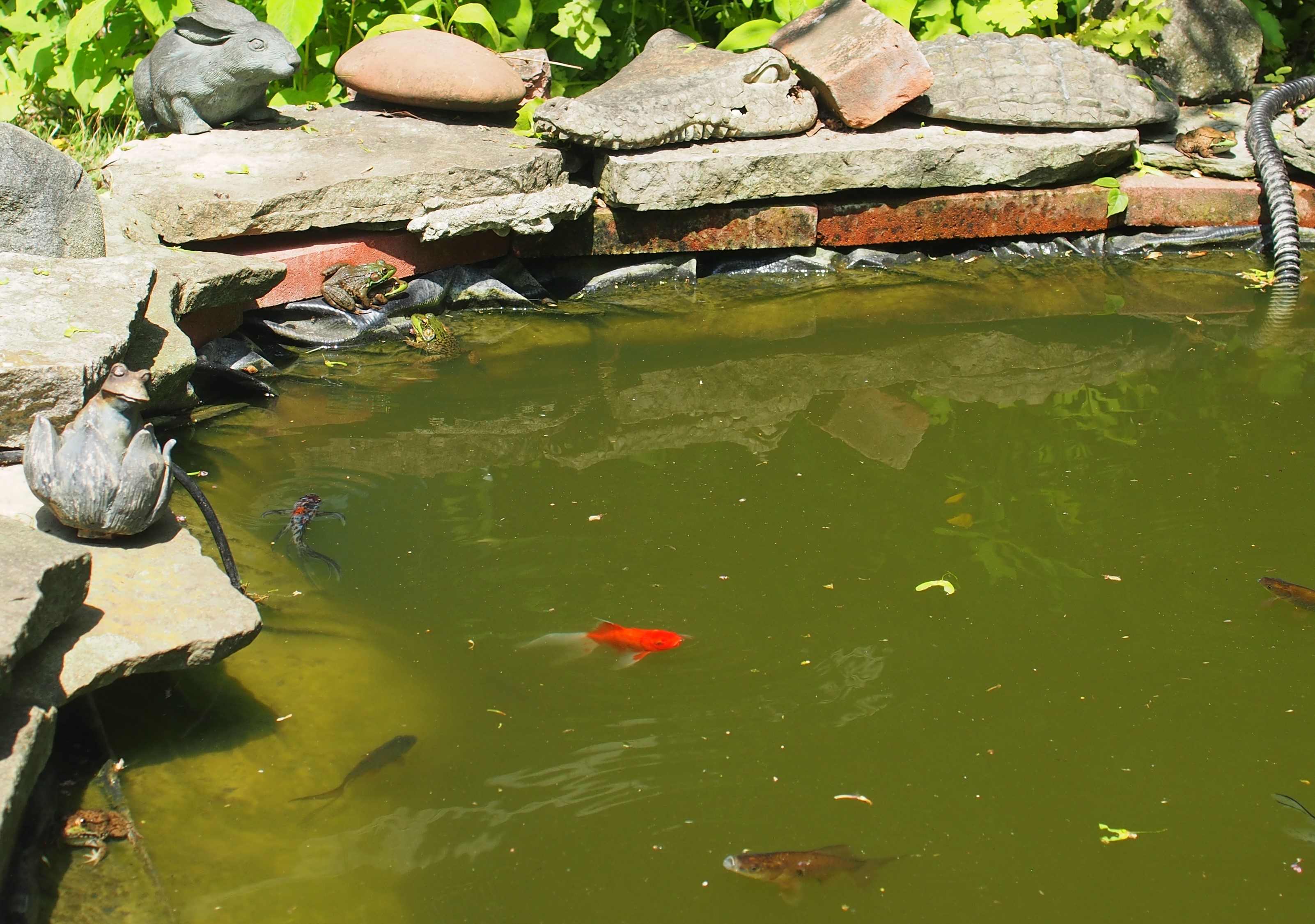
A new development: this week one afternoon, two good-sized Frogs were sitting at opposite lengths of the pond. Suddenly the one on the right begins to speak and suddenly the one on the left begins a lengthy spiel of his own.
I have a small website set up to show the Frogs' speaking abilities. The easiest way for you to reach it is to follow this link. You can get back to here by clicking the back button.
See the Frogs talk
As for the Fishes, here are a few pictures of the group. First, you see how clear the water was yesterday and you can follow the progress of growth of the Lilies, some of them now in their third year since planting. In picture 2, the red oval shows you the youngest of the fishes, born last summer. Just to the right of center you can see Rudolph, the "baby" born two years ago. Oh, how could I almost send off this blog without telling you the big news? The fishes woke up before me a couple of days ago and set to mating! The females at the end of the line, males at the front. And this was the only picture I took.. Sorry, sorry, sorry...
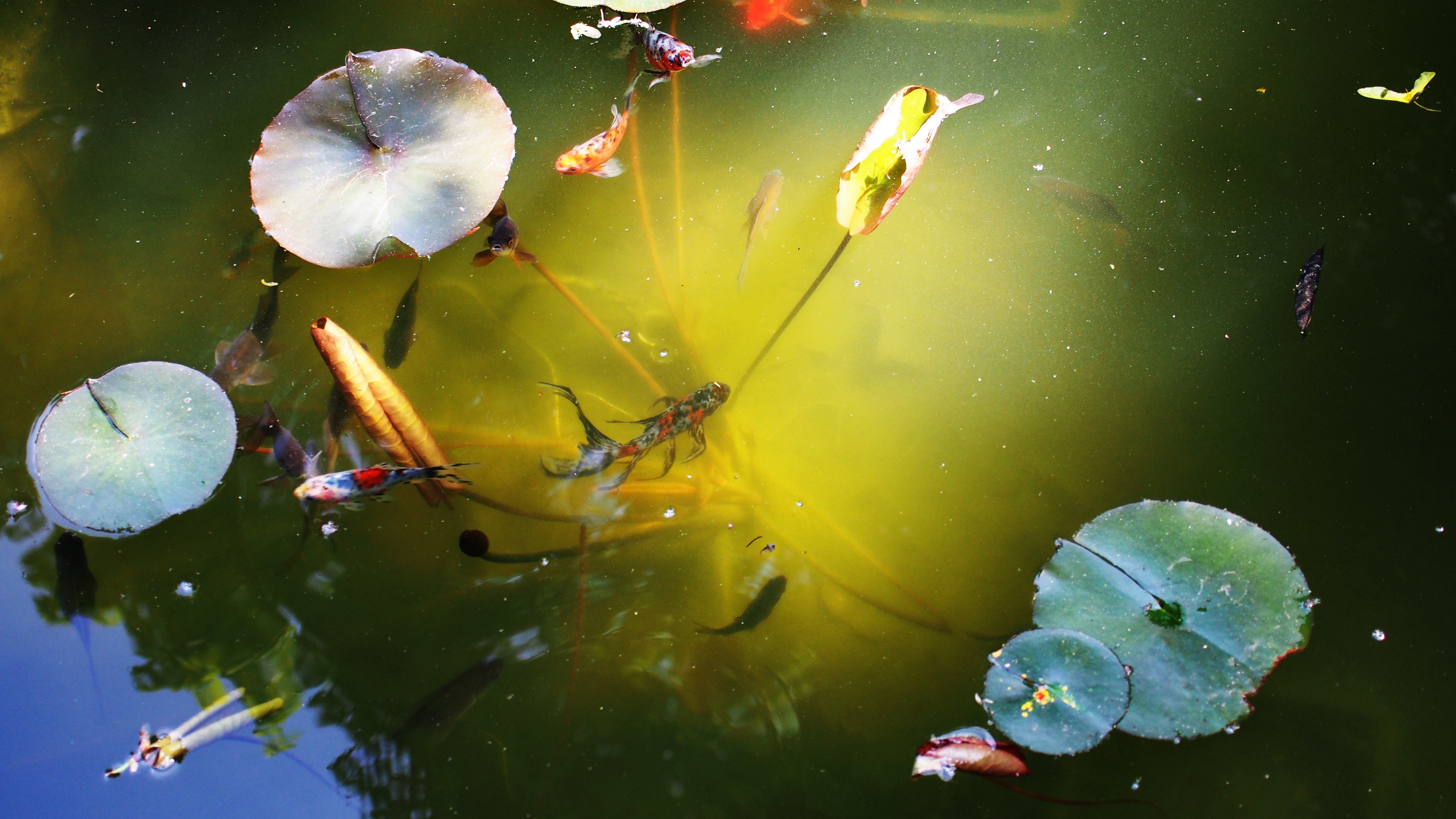
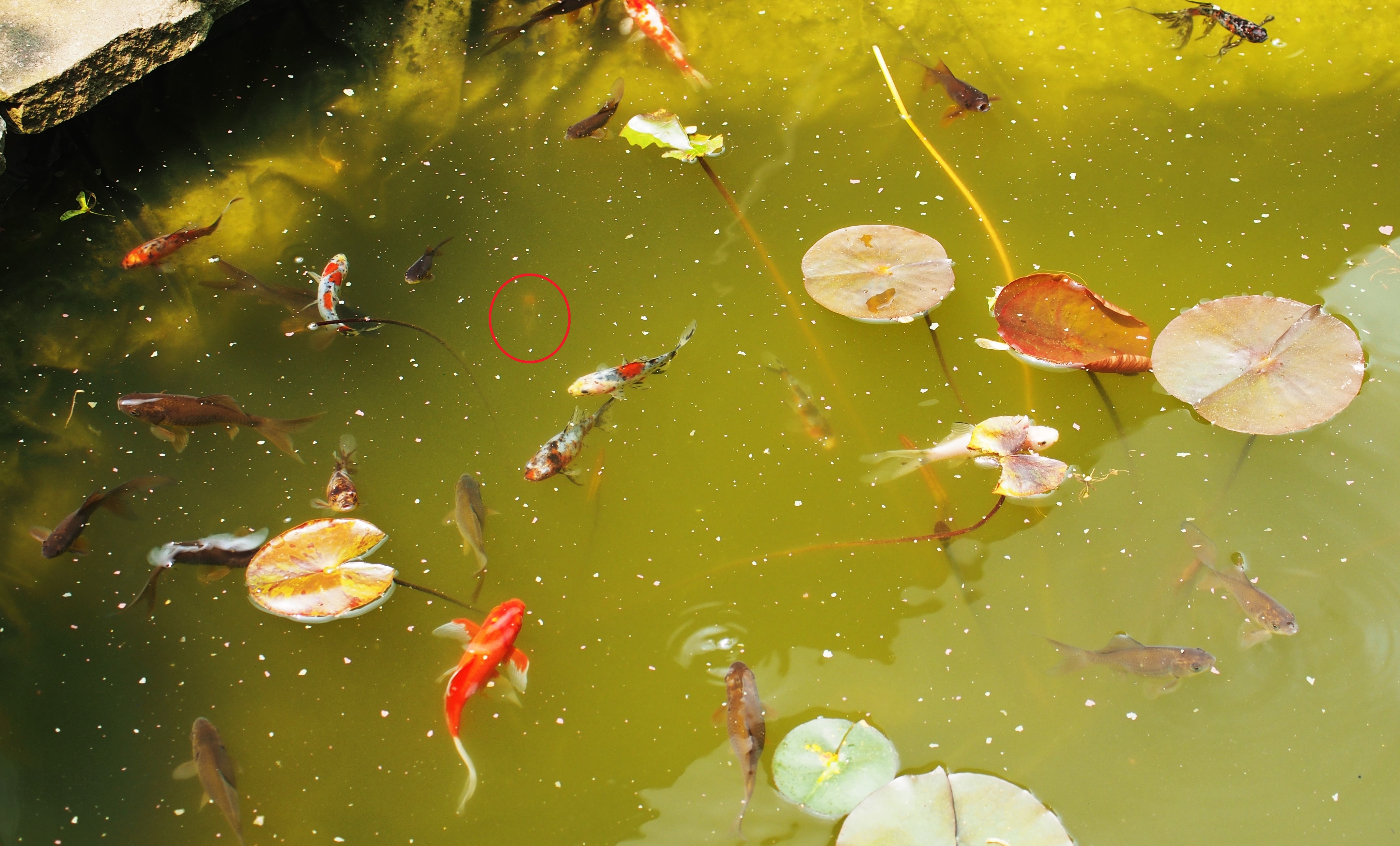
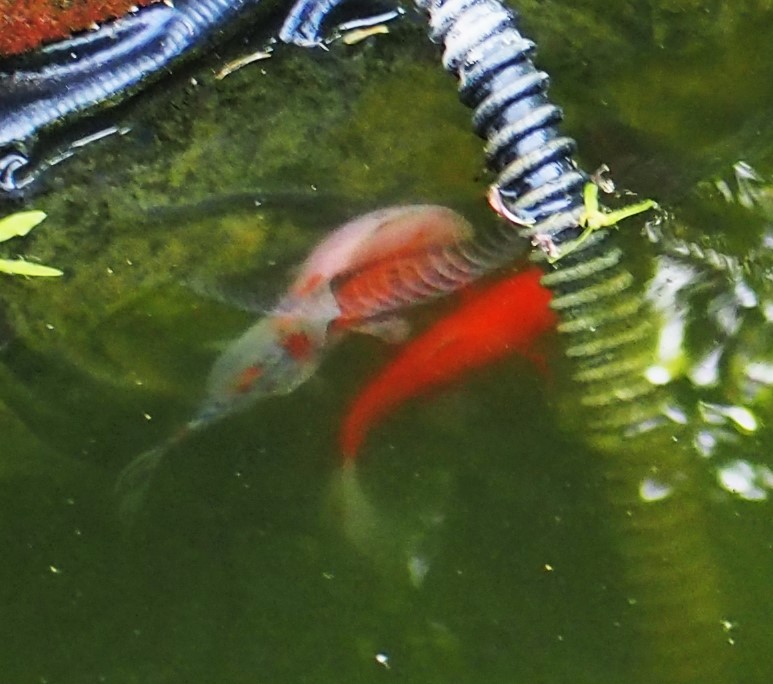
So here we are at the end of another week. Next week it will be June already. The cycle of Life is fascinating, and I'm glad still to be in that Cycle - with YOU!
Back to May 21, 2023
Forward to June 4, 2023
Back to main menu
copyright Martha O'Kennon 2023
































































































































